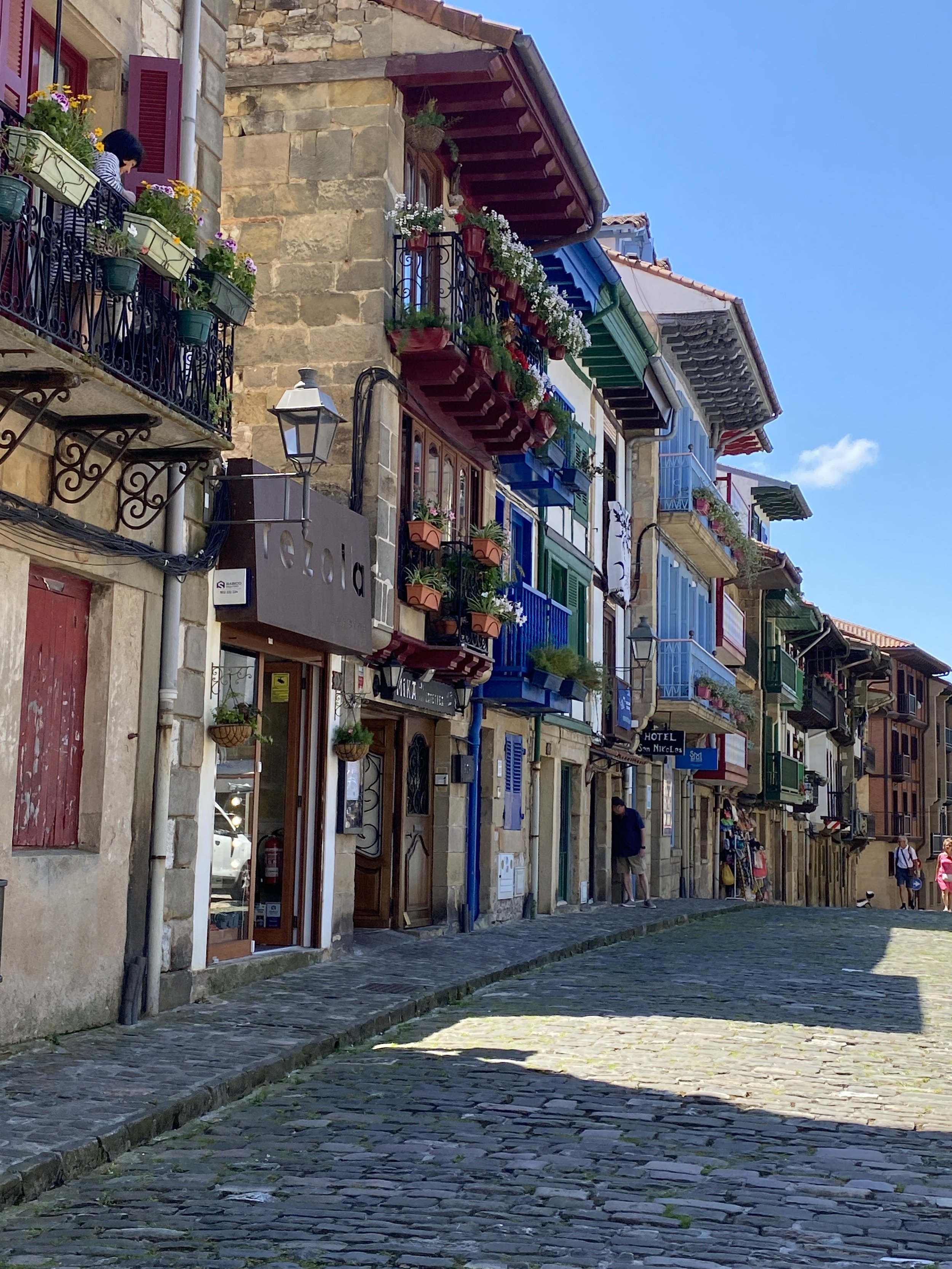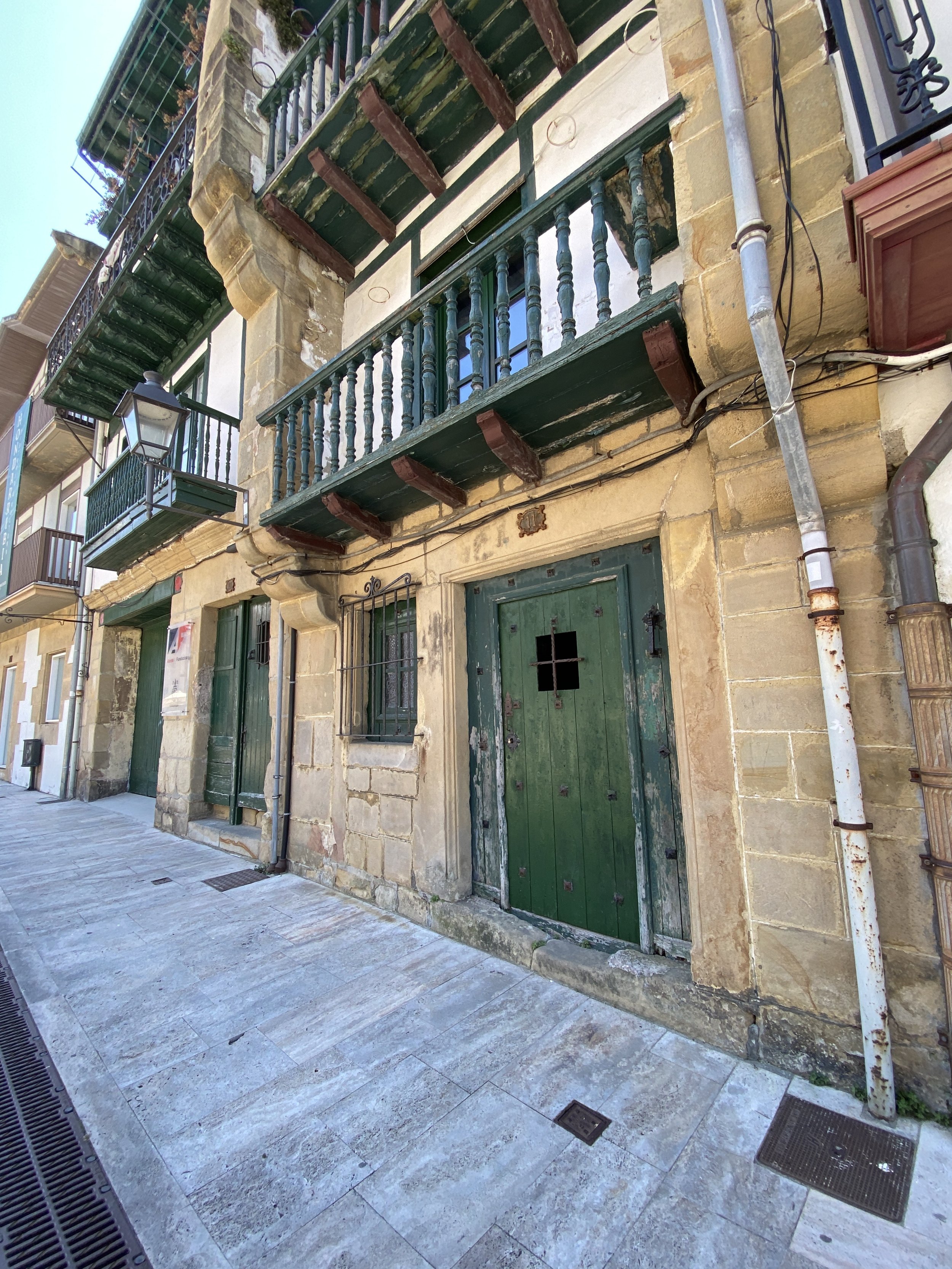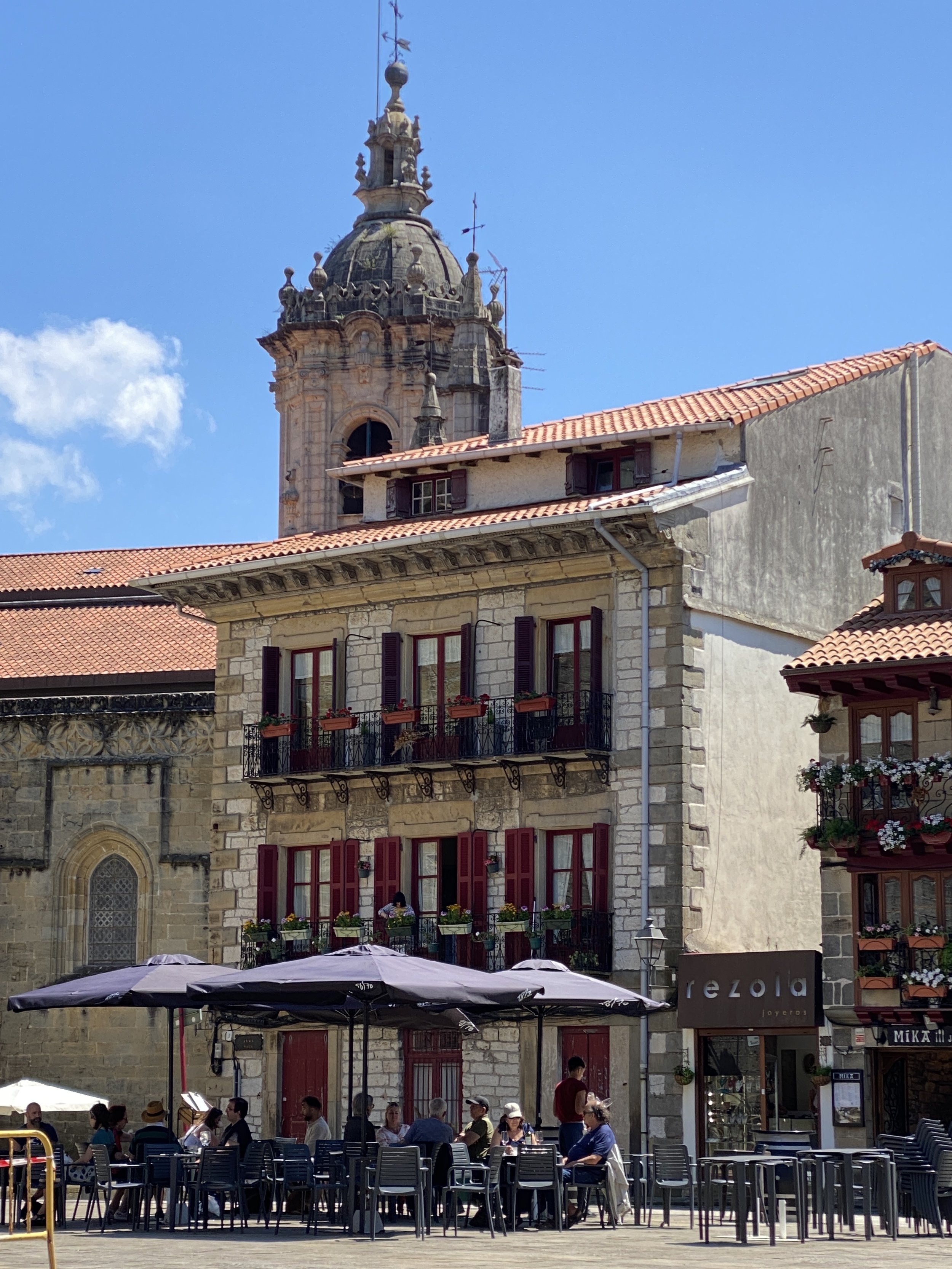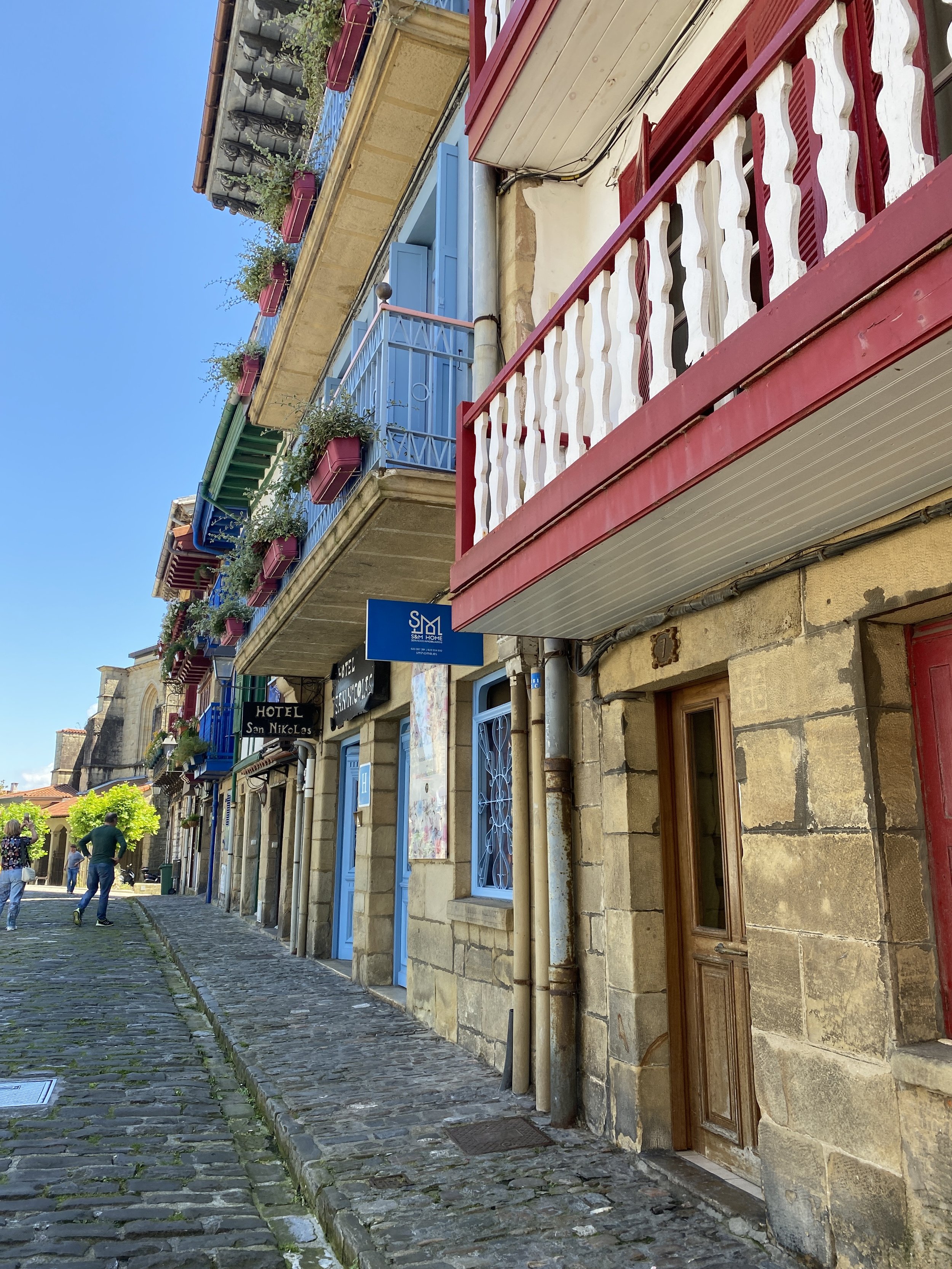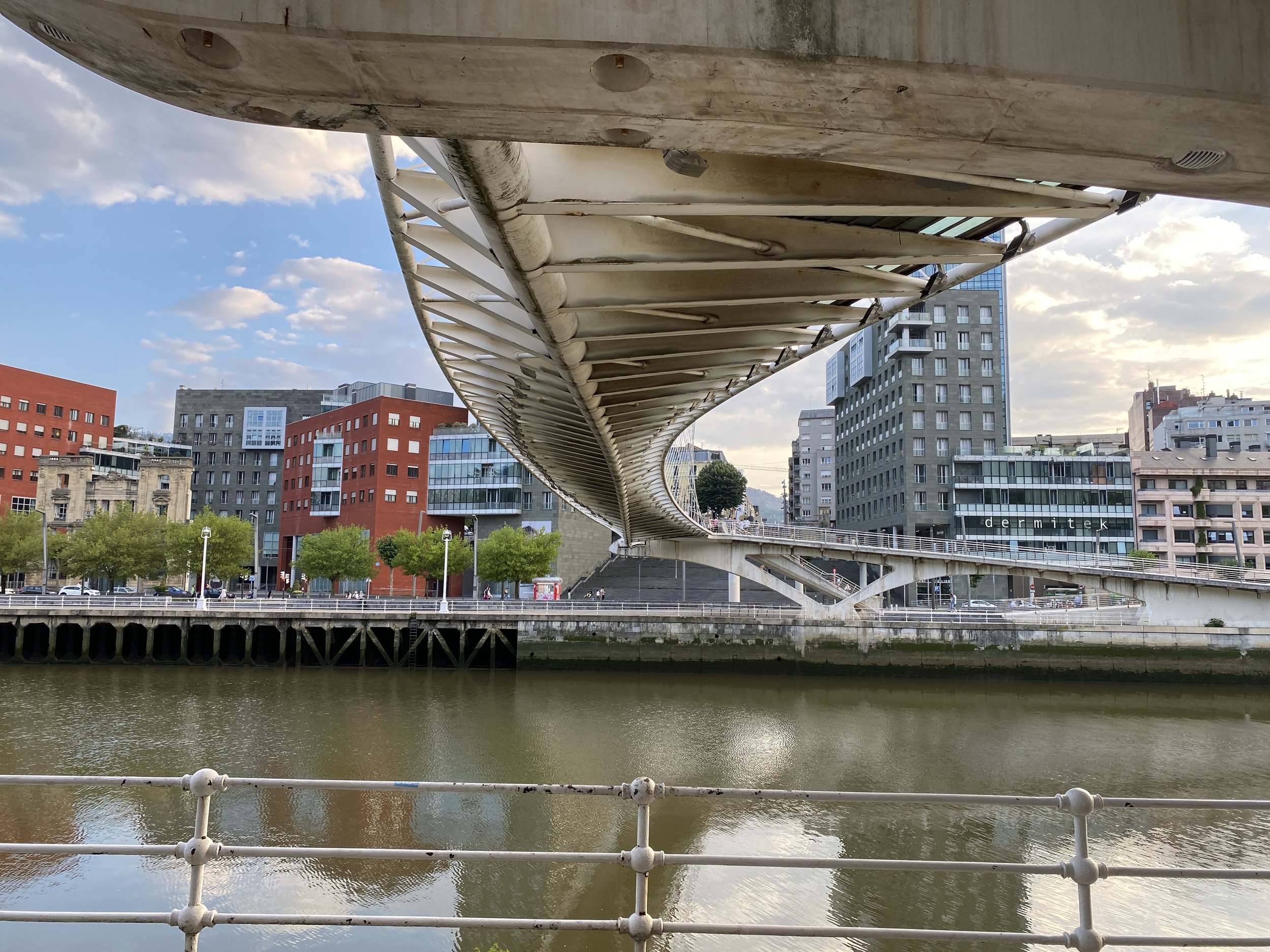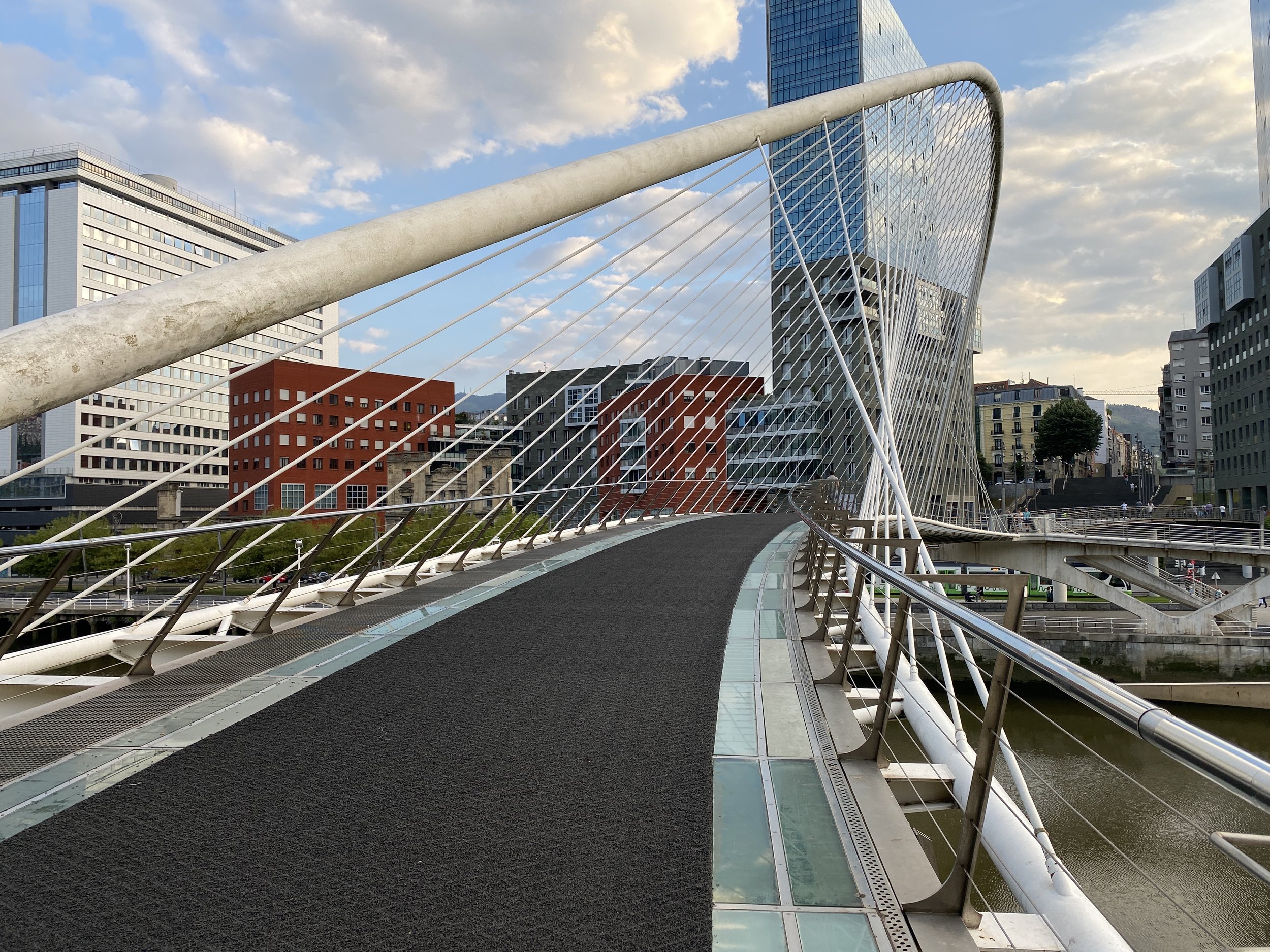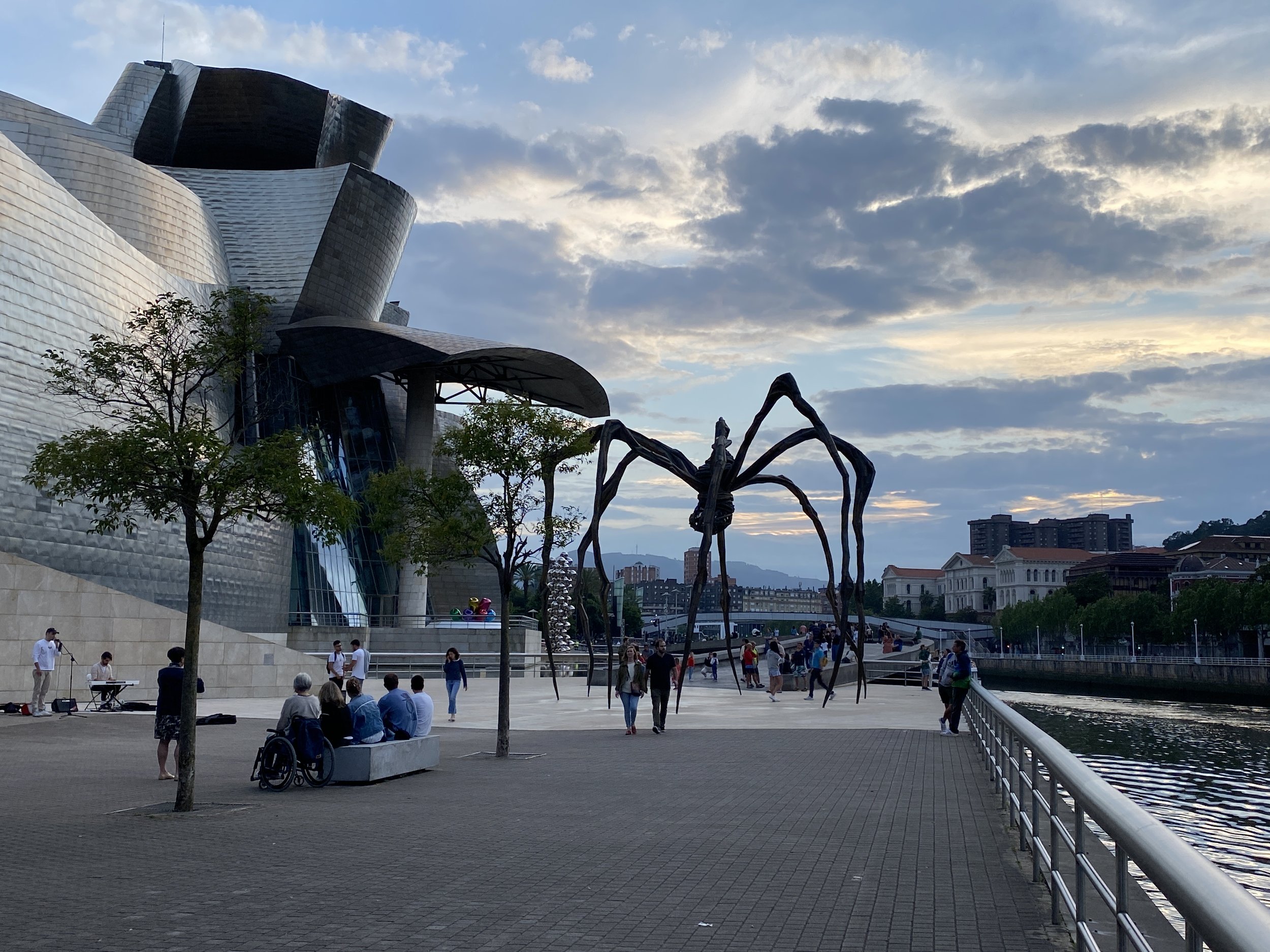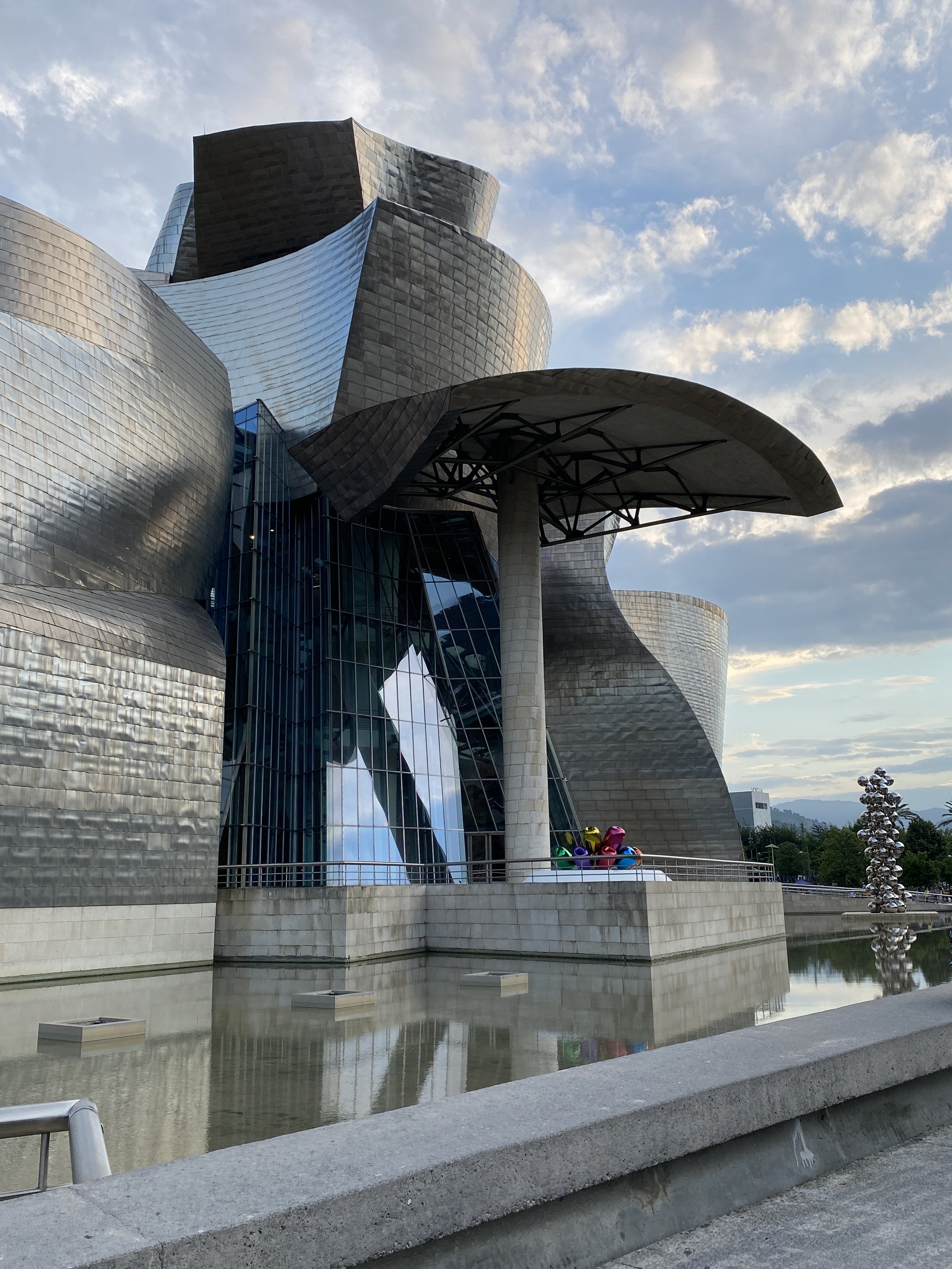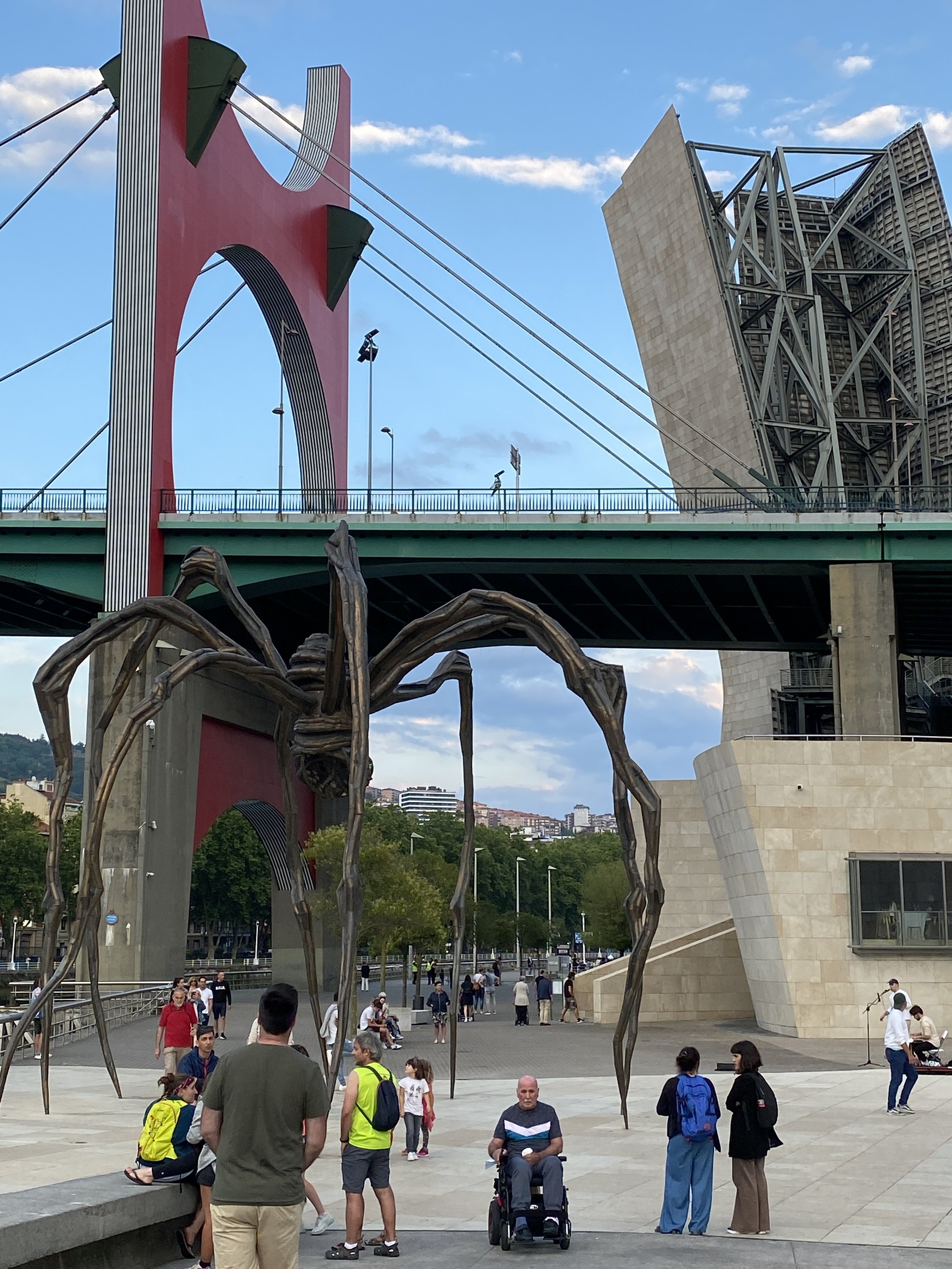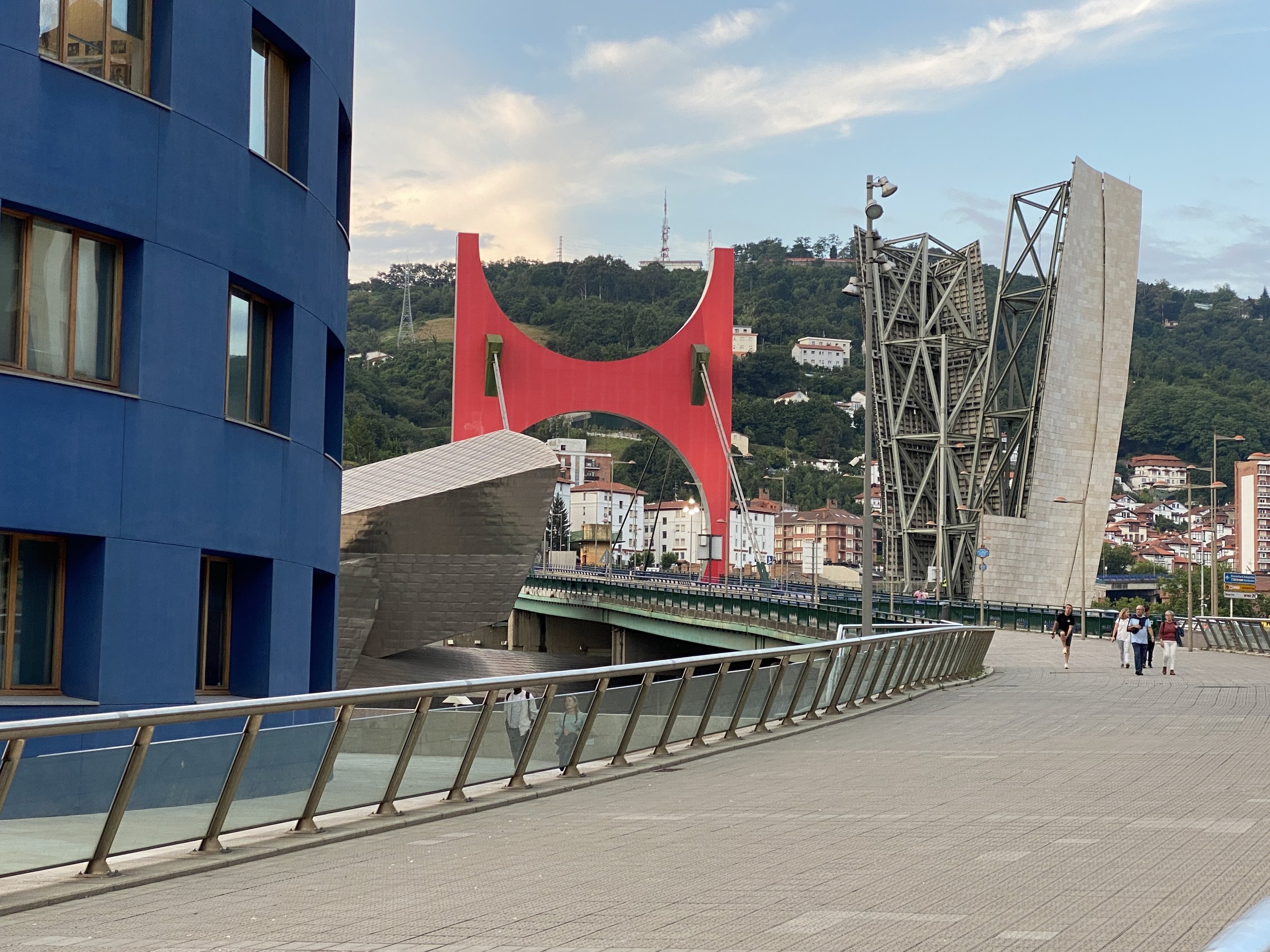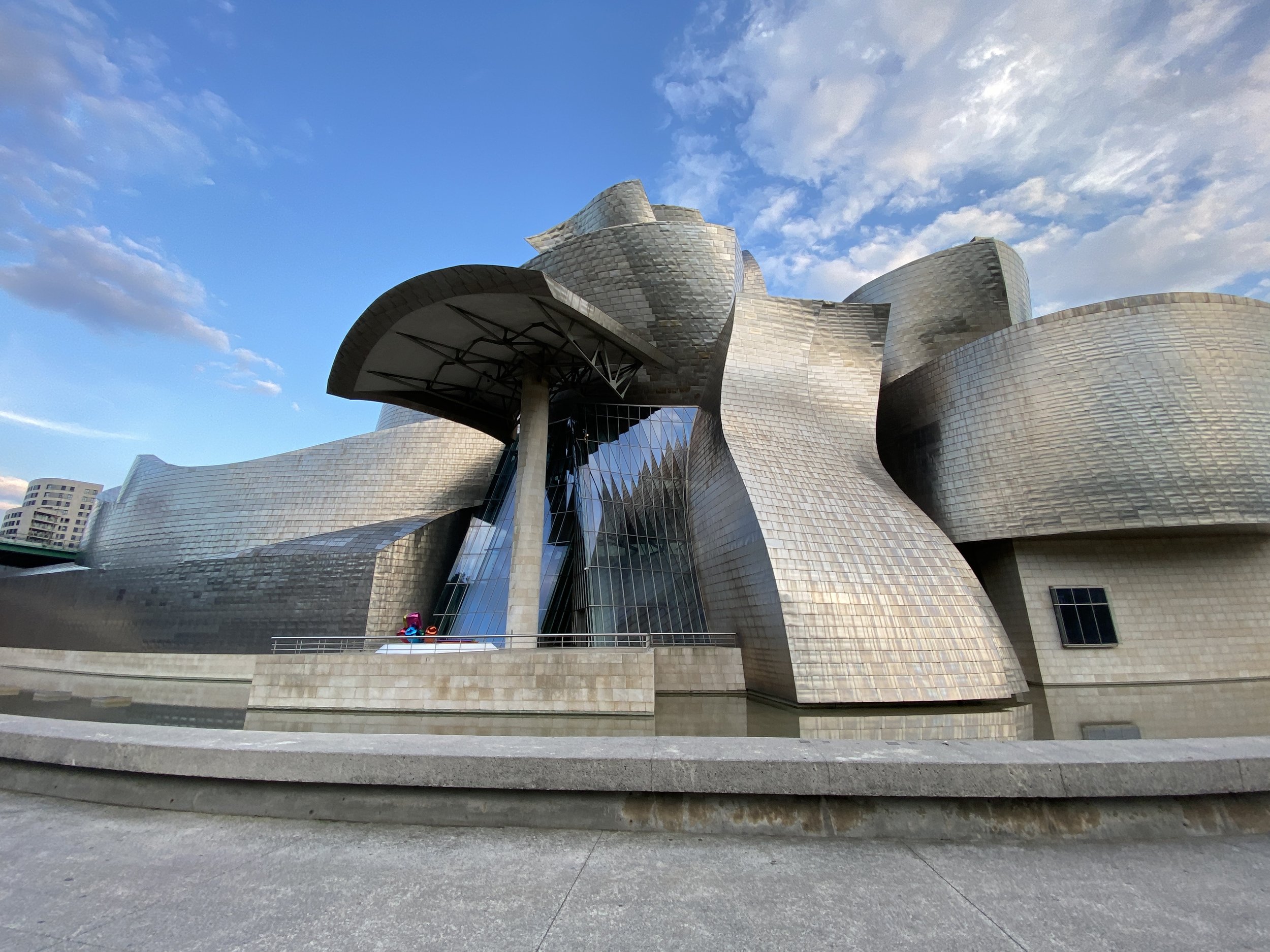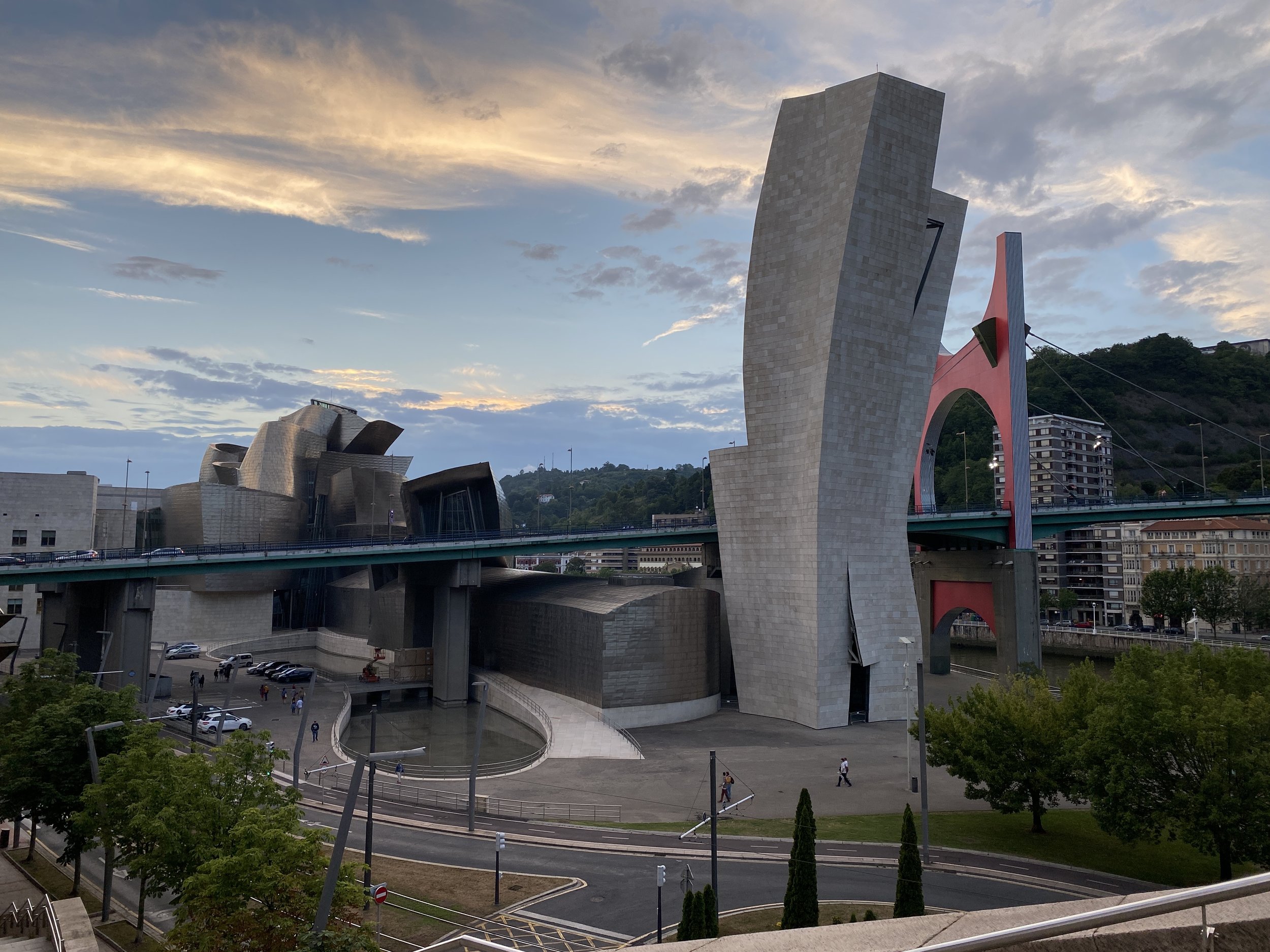I've never been any place like Bilbao
/A trip to bilbao, Basque country, spain
After a week of testing my capacity for “beginning again” in the Pyrenees and then five days of aimless wandering through rose-colored Toulouse, I wondered if we’d made a mistake by ending our trip with 6 days in Bilbao.
I was tired. So tired I wondered if I had COVID. I didn’t want another city, I wanted to just sit for a spell, and look out over rolling…anything. Hills, waves, wheat fields, grocery bags. It hardly mattered. I’ve rarely hit the end of my travel tolerance, but the previous two weeks had been so heady, I struggled with how in the world I’d summon the energy for more NEW THINGS.
Into that bleariness crept concerns that perhaps Bilbao had been the wrong choice. Yes, I wanted to experience Basque country. Yes, I’d gotten off on it being less touristed than San Sebastian. I don’t care for super-touristed places, they remind me of Disneyland. Which is fine when you’re in Disneyland, but when you’re visiting foreign climes, you want to experience the foreignness, not be surrounded by made-in-China, overly-curated to appeal to masses, schlock. Apologies if you’re into that, but for me, it’s boring. And God save me from the women in long dresses taking photos in places that Instagram has cheapened.
Okay, okay, diatribe over. But if you want more opinionated travel content, do sign up for my once-monthly newsletter, the Grapevine, which is usually given to lush sighings about little-known places, but when a place rubs me wrong, I’ll tell you (plus send recipes and travel tips and book giveaways!)
The point is—that’s my usual self. I avoid tourist throngs like the plague. I would so much rather wander little, relatively unknown Ercolano, wondering about life in this Roman village that Vesuvius destroyed, than power-walk through Pompeii with my head buried in a map, desperate to not miss any “must see”. Yet, sitting in Toulouse airport, wondering how to tell if my exhaustion was travel or viral related, doubts prodded me.
Bilbao.
It’s described as a once-gritty port town. Maybe the reason it’s less touristed than San Sebastian is because it’s gross. Dirty. Neglected.
Boring.
Without my usual armor of relentless optimism, the thoughts mounted as we flew over the Pyrenees and landed outside of Bilbao. This just looks like Arizona, I said to myself, as we walked to the rental car desk. I love Arizona, but I didn’t need to fly across an ocean to see it.
I tamped down my upswell of travel regret as I helped Keith navigate the roads over the mountain. Our headlights tipped down into the bowl of Bilbao. At which point, every thought, every concern, every doubt vanished like shadows in the sudden glare of sunlight.
This place. This…Bilbao. It was like nothing I’d ever seen.
Eyes wide, we struggled to pay attention to the map. Buildings filigreed in red towered above ones with enormous windows framed in brilliant blue, like vertical sky-lights. The streets tumbled, cacophonous. An estuary shone in the waning light. Its river-like curves meandered through the city, anchoring the dizzying skyline.
You know that feeling when you step into a huge cathedral, and the space is so vast, it seems impossible to have been built by human hands? The proportions of it all overpower the senses, even before you begin to notice the curlicue and nuance in every corner, every crevice? That how it felt, descending into Bilbao.
As if relieved by divine intervention, my COVID symptoms disappeared.
In fact, I found myself jumping out of the car almost before we parked, I was so eager to explore.
But exploring at 10:00 at night is tricky. In fact, tracking down dinner was hard enough. Plenty of lively bars, with people spilling into the street, but that seemed too daunting. We needed a softer entry point. Finding a restaurant still open, we plopped outside the huge windows, edged in dragon green.
First things first, I realized, my mind instantly checking my tongue from saying, “Bonsoir."
Language shift.
As the waitress came with menus, I realized what I hadn’t anticipated. Because Basque country is in Spain (the Spanish part, at least!), the two major languages spoken are Basque and Spanish. Leaving English in the dust. Maybe a distant third, maybe even lower.
Which means I got to trot out my Spanish, which also means I got to play the part of family ambassador (nothing more fun than a quick banter with a waiter where my husband has to whisper afterwards, “what was that?”). My Spanish is not only rusty but rough. It was my first language, but I only spoke it fluently until we moved to the US when I was five. Still, my father’s family lives on the US-Mexico border, so when I’m with them, I still hear it. Which probably cues the Spanish I learned in high school more than the Spanish I used when having toddler tantrums in Panama. Still, some instinctive Spanish remains.
Enough that Italian instructors often tell me I speak Italian with a Spanish accent. Fine by me, I like to keep Italians guessing as to where I’m from based on my inflection and my appearance, which is a proper American “mista” of conflicting nationalities—Mexican, Lebanese, French, and Hungarian.
In any case, I loved speaking Spanish in Bilbao. I trotted out more than I expected, I even made a reservation! On the phone! Talking without verbal cues is hard for me, so this felt like a particular triumph. Even though I was thrown for a loop when they asked for my phone number and I got so hamstrung between “tres” and “tre” that my tongue knotted in the middle and I stumbled and started until the person on the other end told me in Spanish, don’t worry, they’d see me on arrival.
Bilbao is off the tourist radar enough that I found English only rarely spoken. So people look relieved when I tried out my Spanish. They were patient and kind and it made the whole thing so much fun.
At the same time, hearing Basque, or Euskara, spoken all the time (and understanding about as much as I did Vietnamese when we were in Hanoi—namely, none) was a total trip. It’s the oldest language in Europe, spoken first by cave-dwellers and it sounds exactly that ancient. With no known lingual relatives, it’s fascinating to listen to. And you’ll hear it for sure. Basque may seem like a dying language on this side of the Atlantic, where we never hear it, hear about it, or see it as a Duolingo option. But about half the people who live in the Basque region are at least passive speakers, less in France than in Spain. That translates into a shade under a million Basque-speakers. What’s really amazing is that that is an increase over previous years.
Over a plate of welcome-to-Bilbao anchovies, we realized our trip featured two destinations with niche languages—Basque in Bilbao and Occitane in Toulouse. Though we only heard Occitane spoken once, by a group of fishermen having breakfast at the market.
As you might imagine, given our breathtaking entry and the fun with language, I wound up being thrilled with our choice of staying in Bilbao. What a dynamic, intriguing, totally foreign yet totally metropolitan city.
We did wind up visiting San Sebastian, but I’ll be honest, soon after arriving, I arranged a plan to leave. After the ethereal, yet down-to-earth, Bilbao, San Sebastian just seemed too decadent, with its huge marble statues announcing an entrance to any old avenue and the Parisian-style promenade. I shivered in distaste at the avenue o’schlock.
Now, I’m 100% sure I would feel differently about San Sebastian if a) we arrived there first, so it set my meter for Basque Country, or b) we were looking for a beach vacation (after Gallipoli, there are few towns anywhere that will prove themselves worthy of the moniker “best town beach”). Maybe off season would help, too… my son stayed in San Sebastian a few weeks later and did love it, though he said the beach was packed. I’m just not for that.
San Sebastian Slideshow
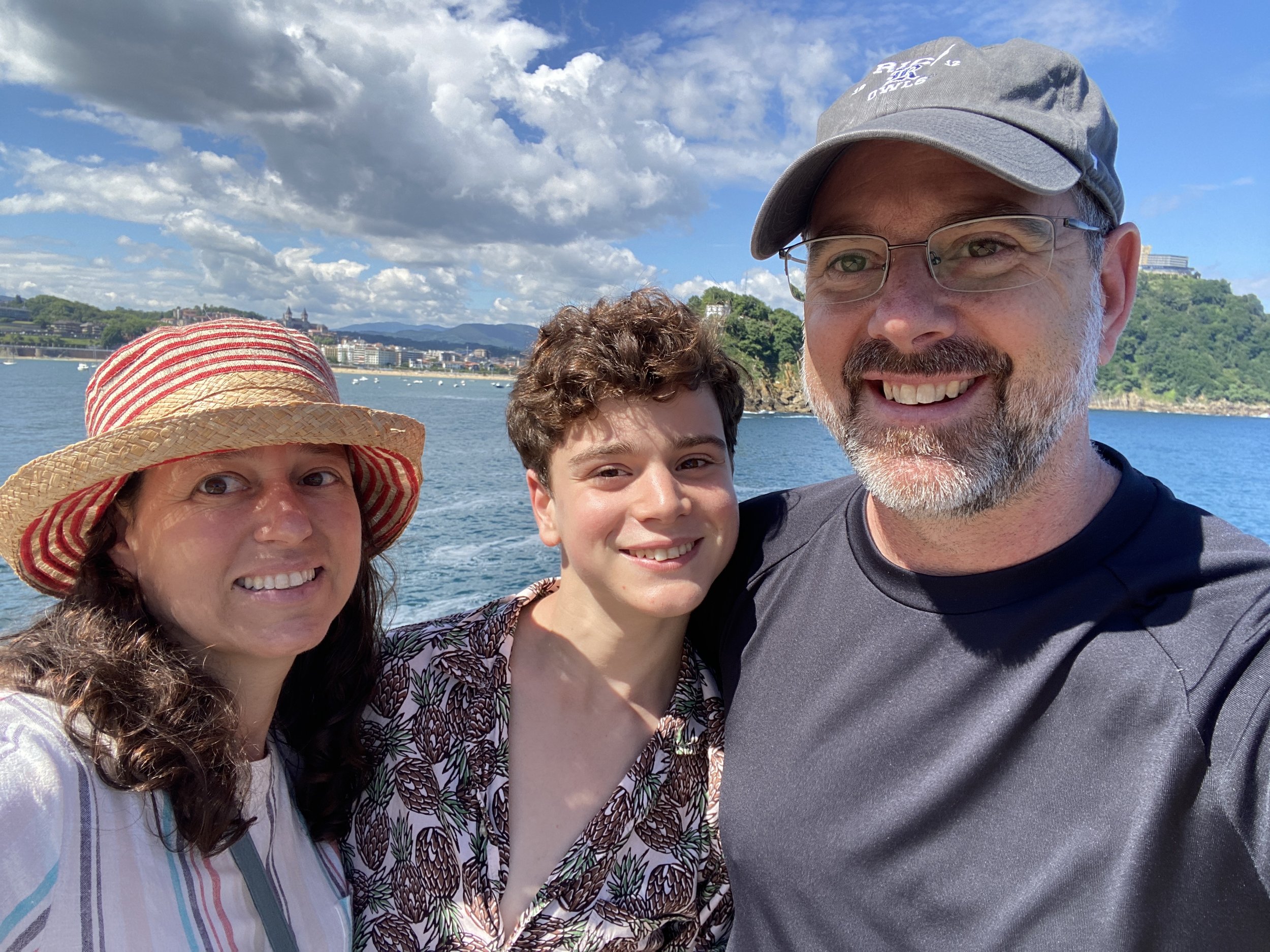
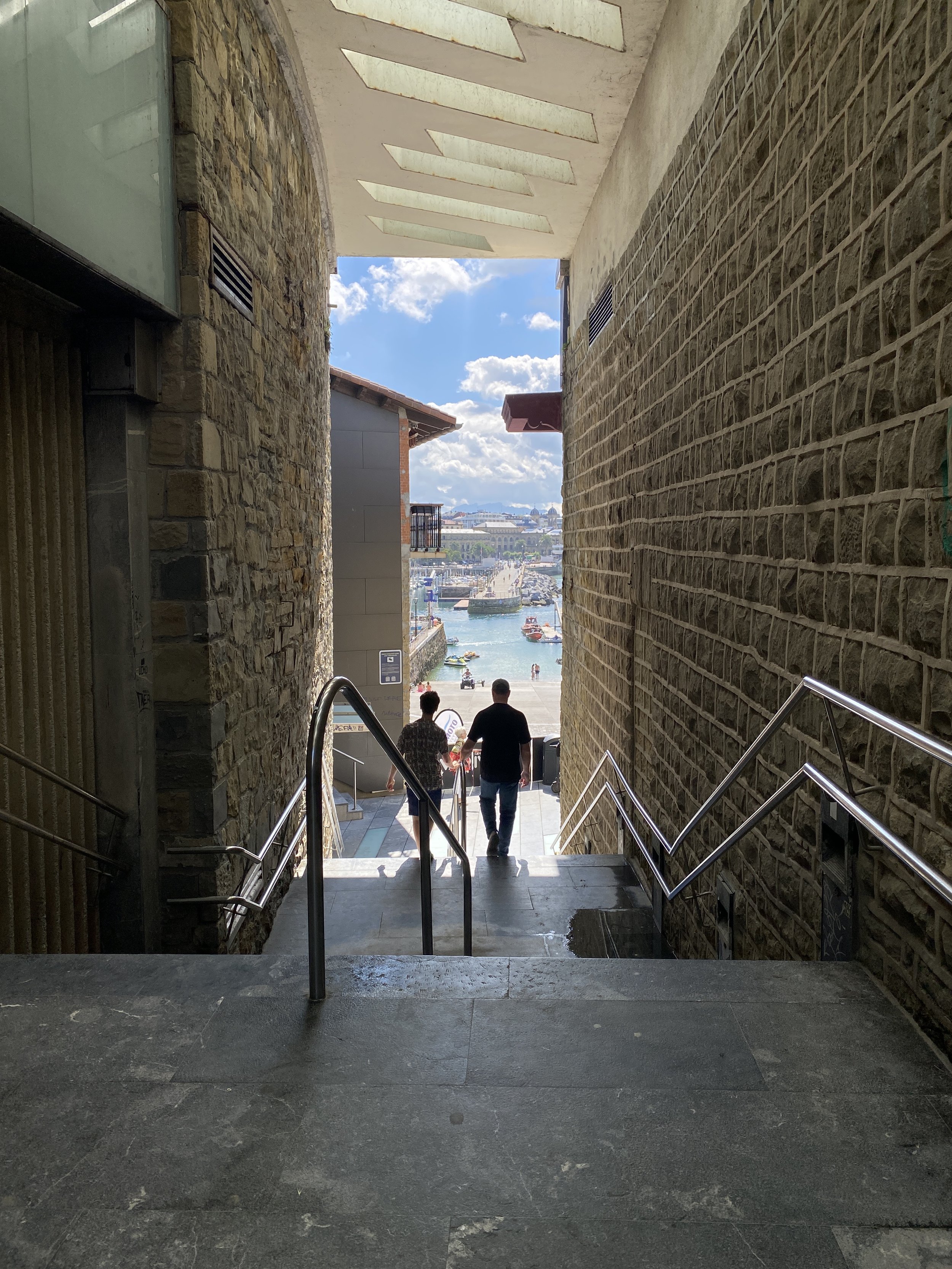
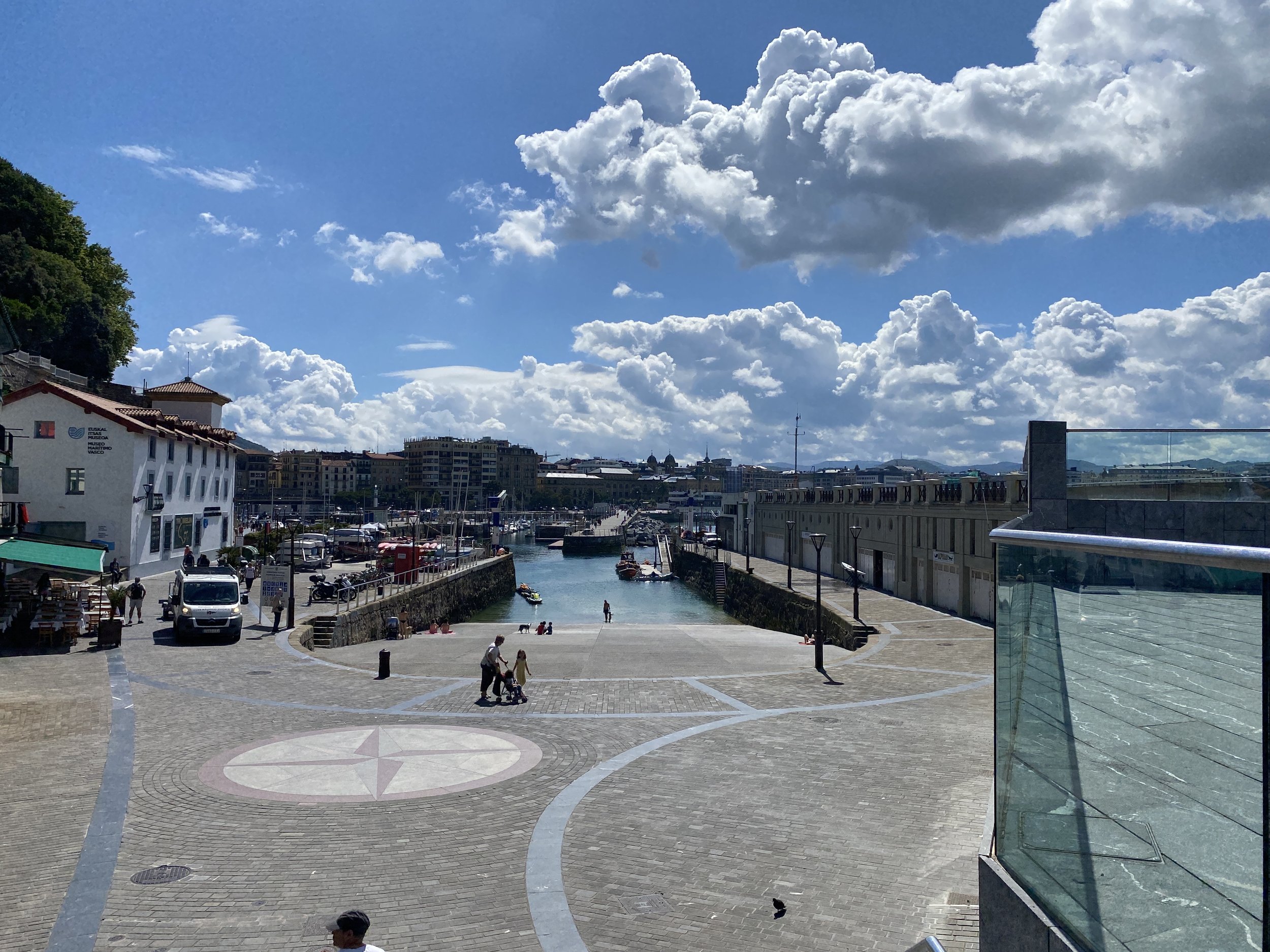
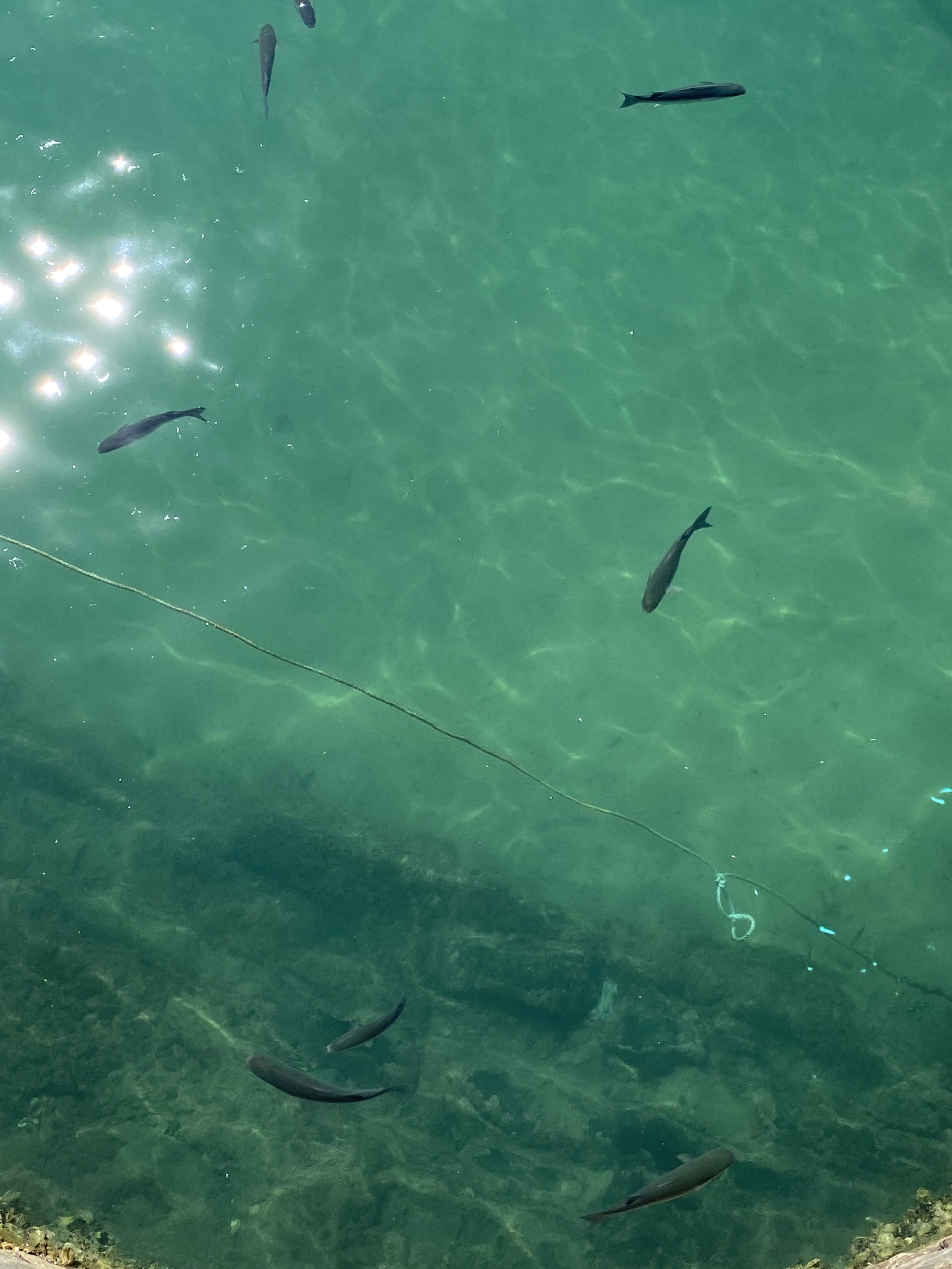
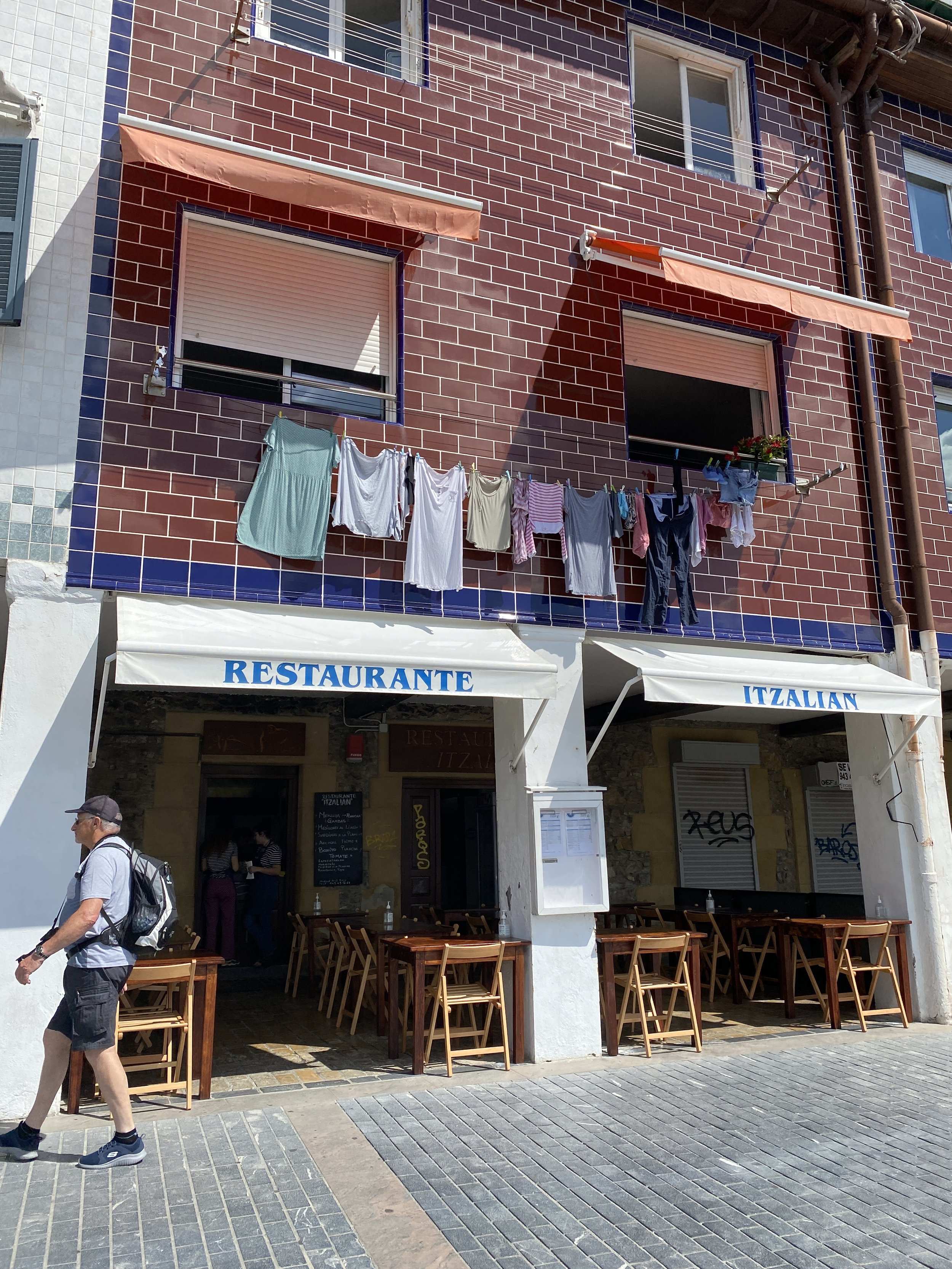
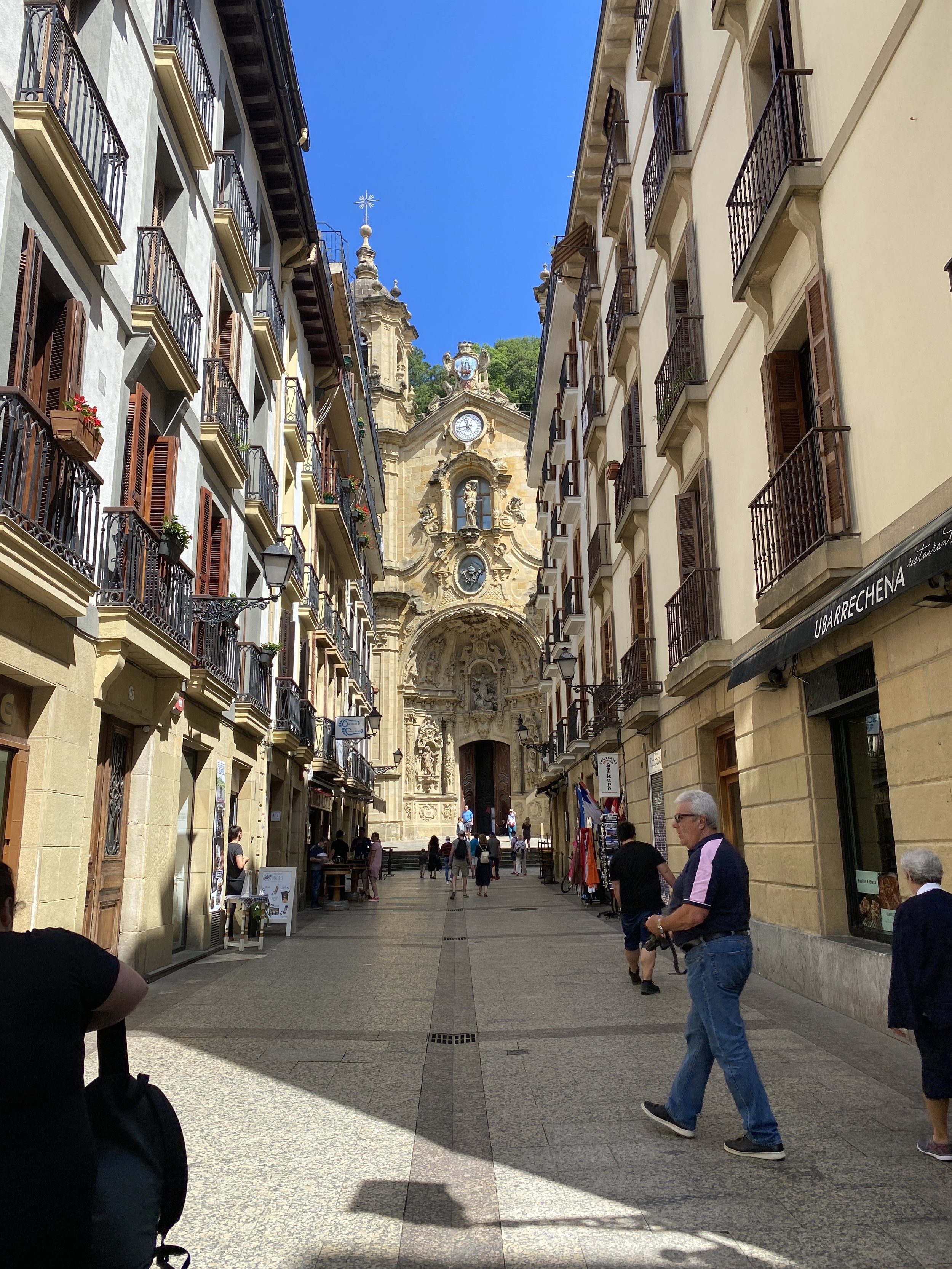
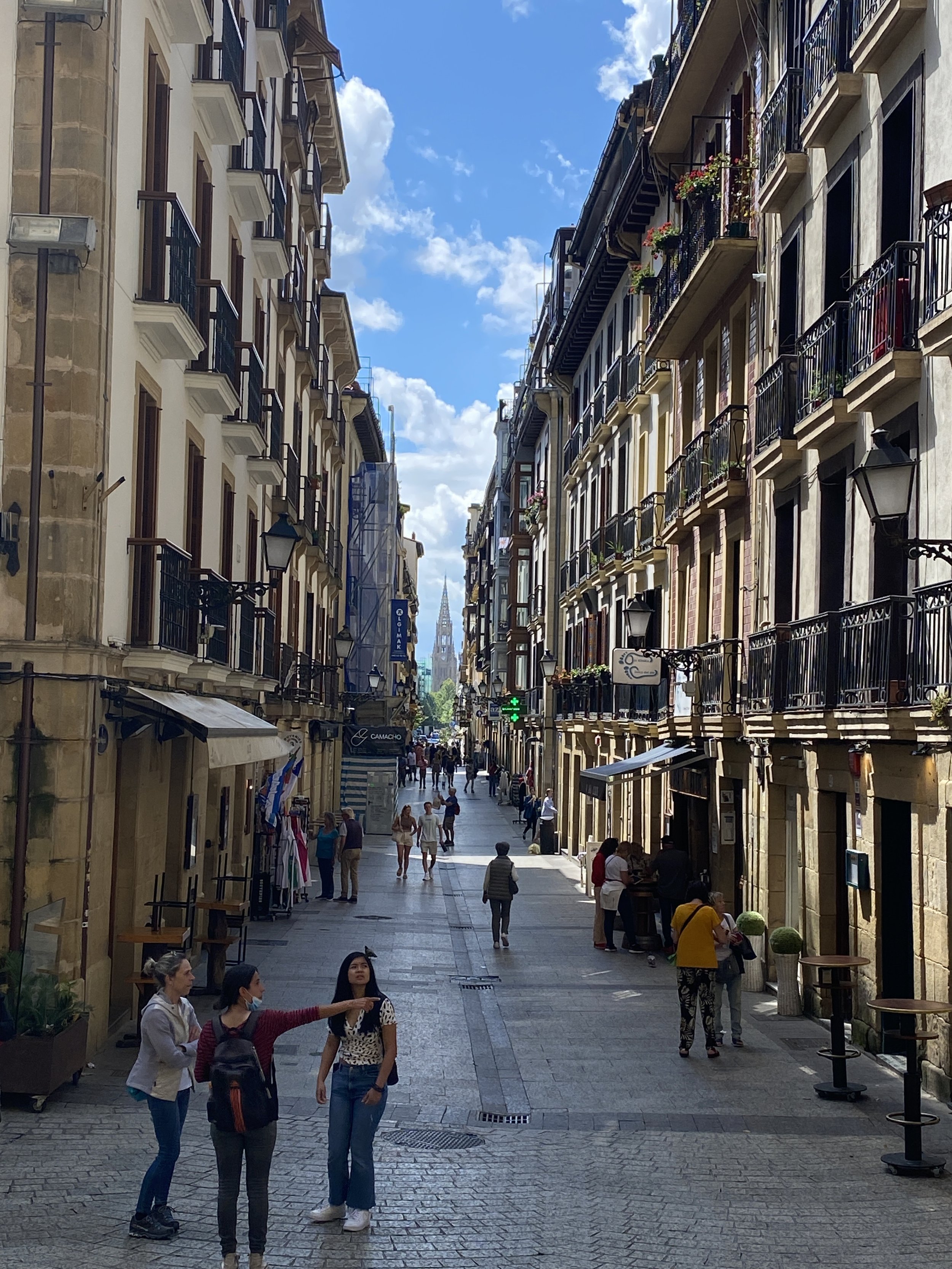
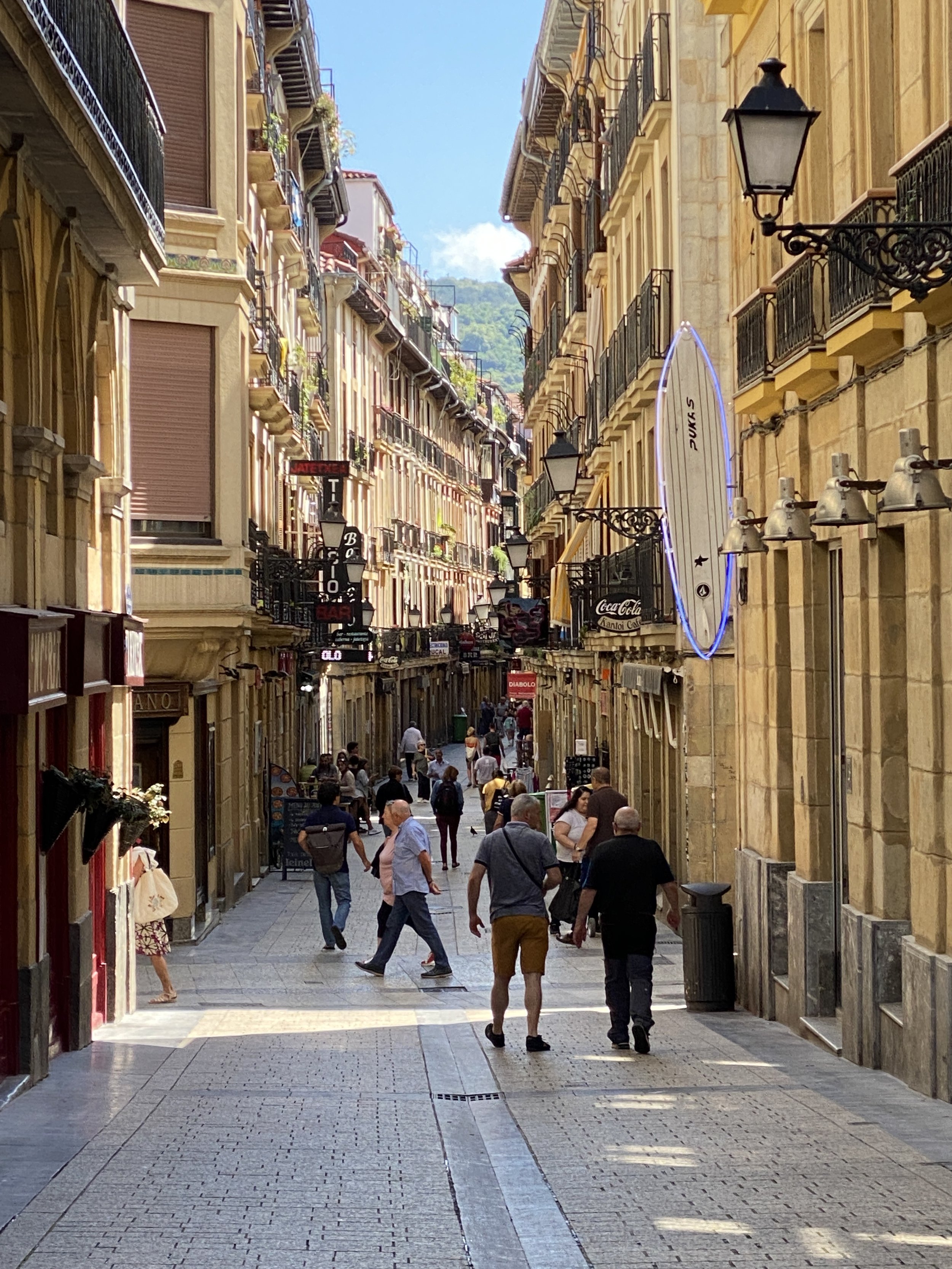
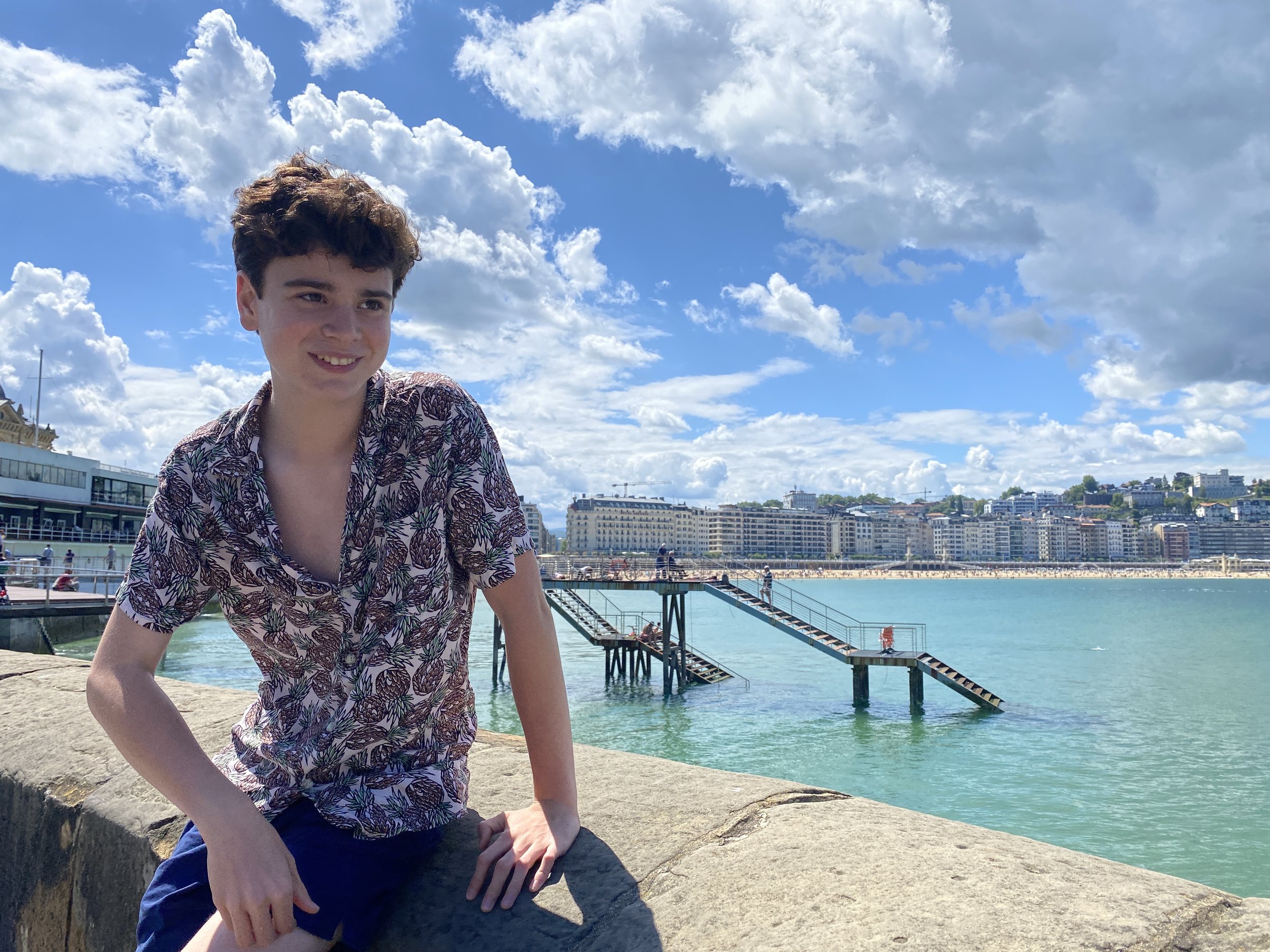
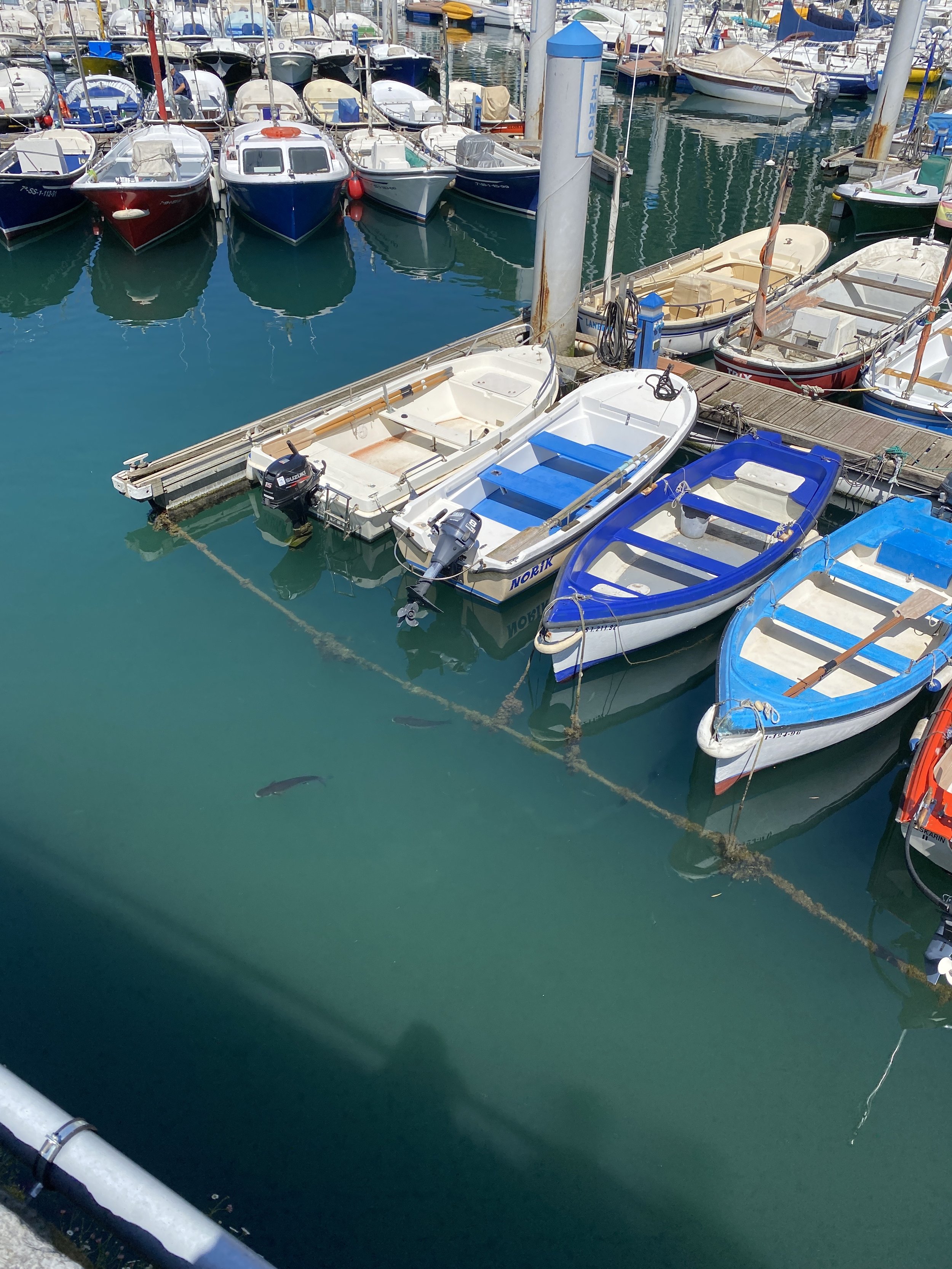
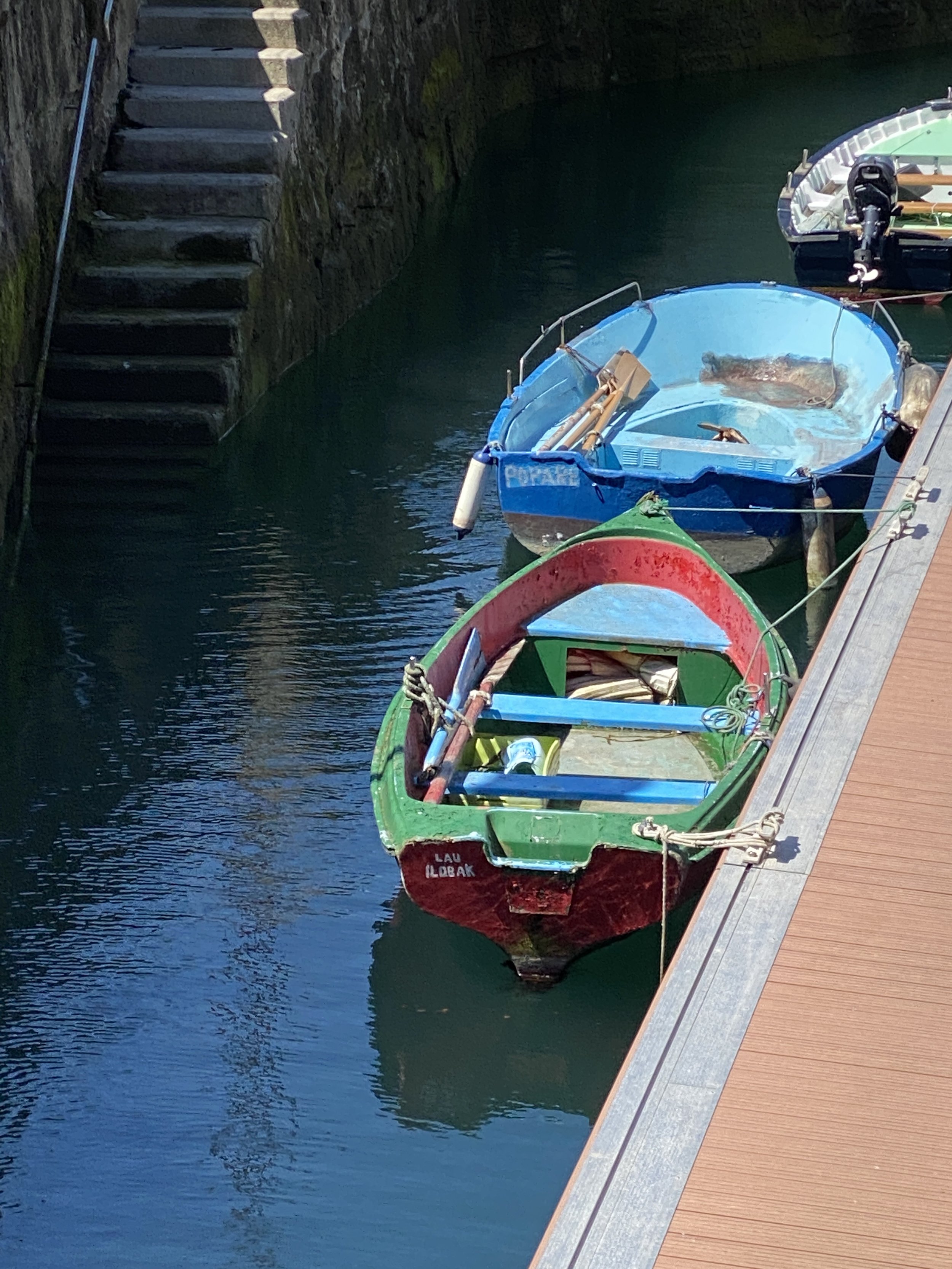
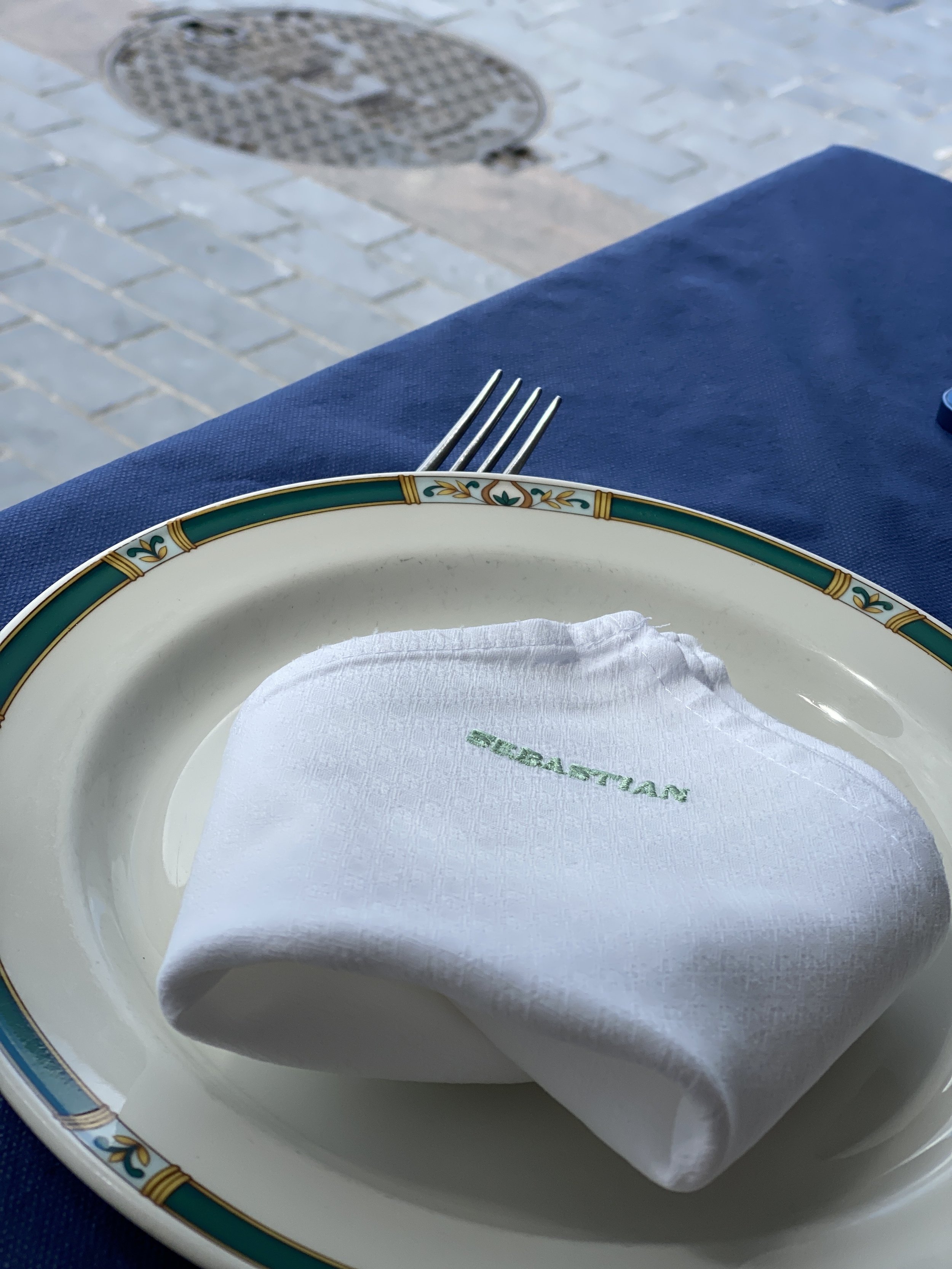
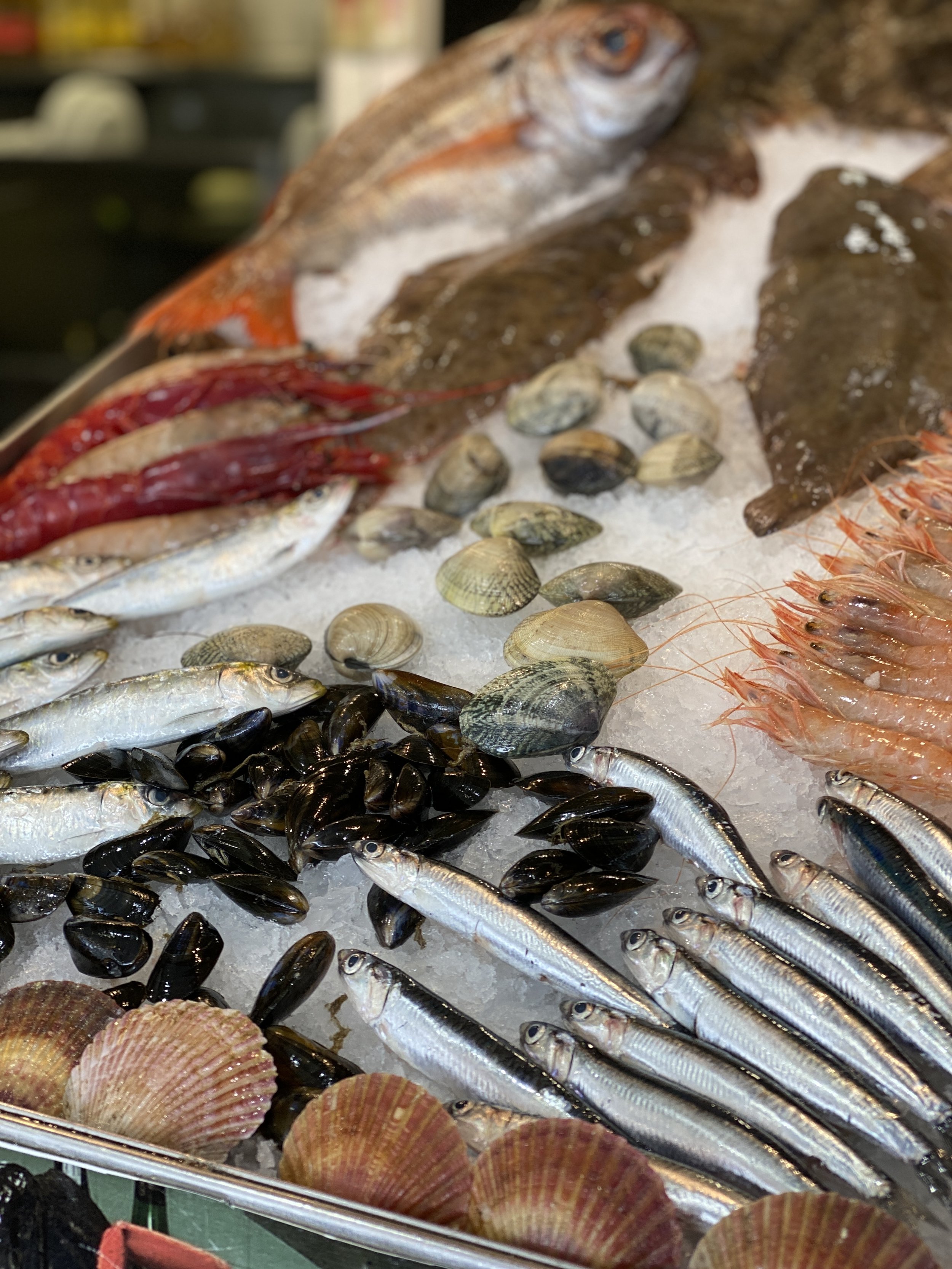
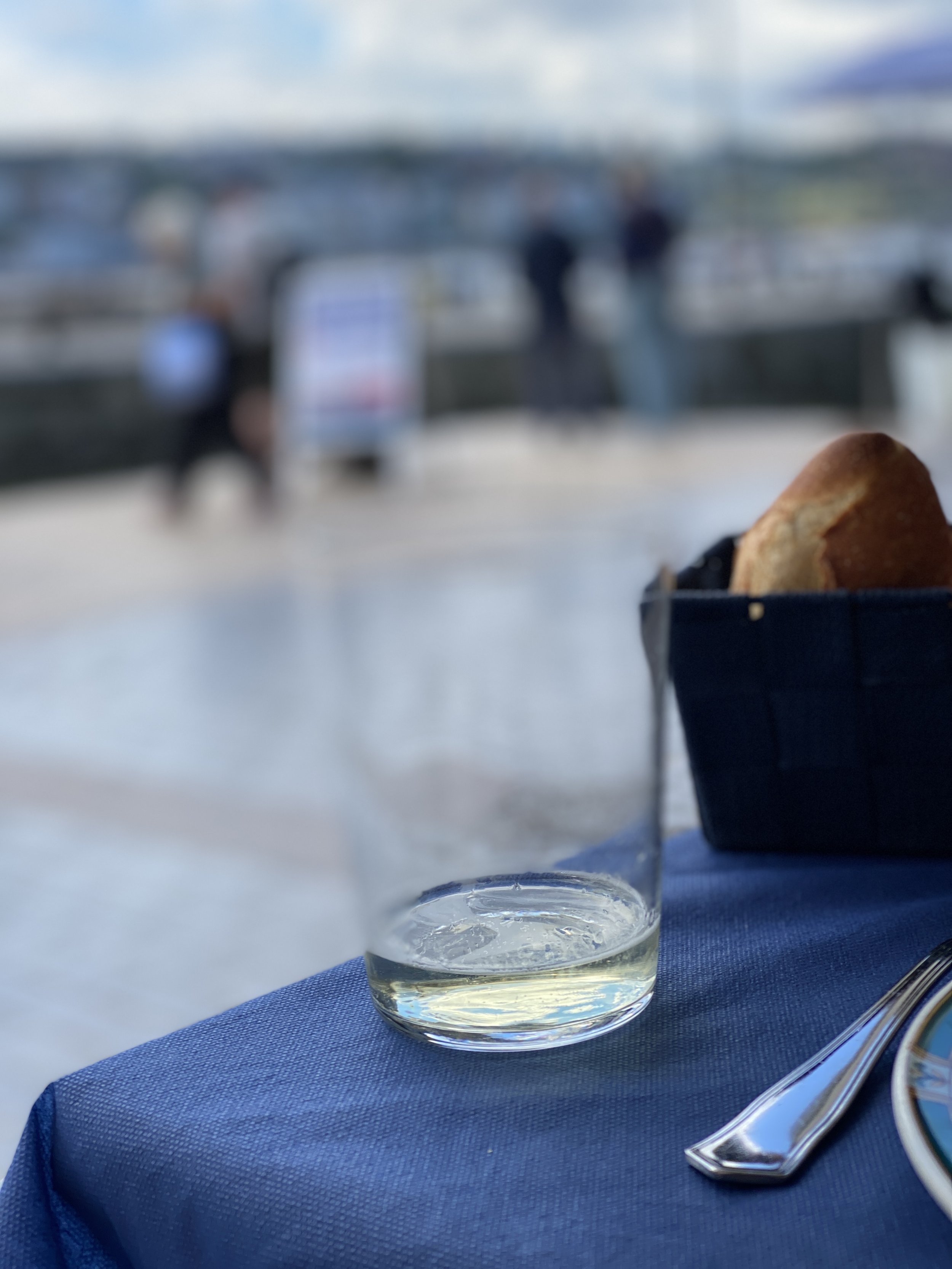
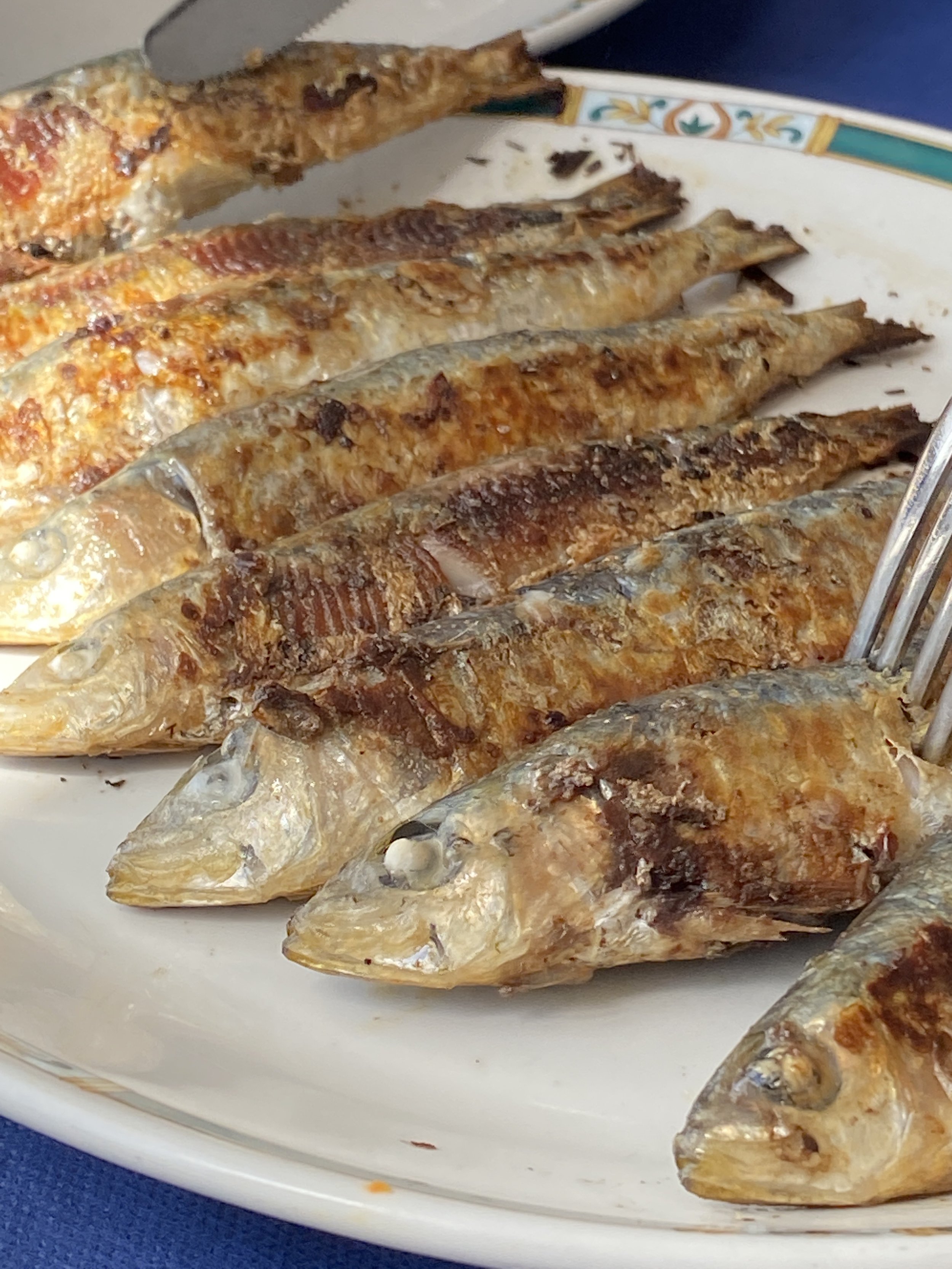

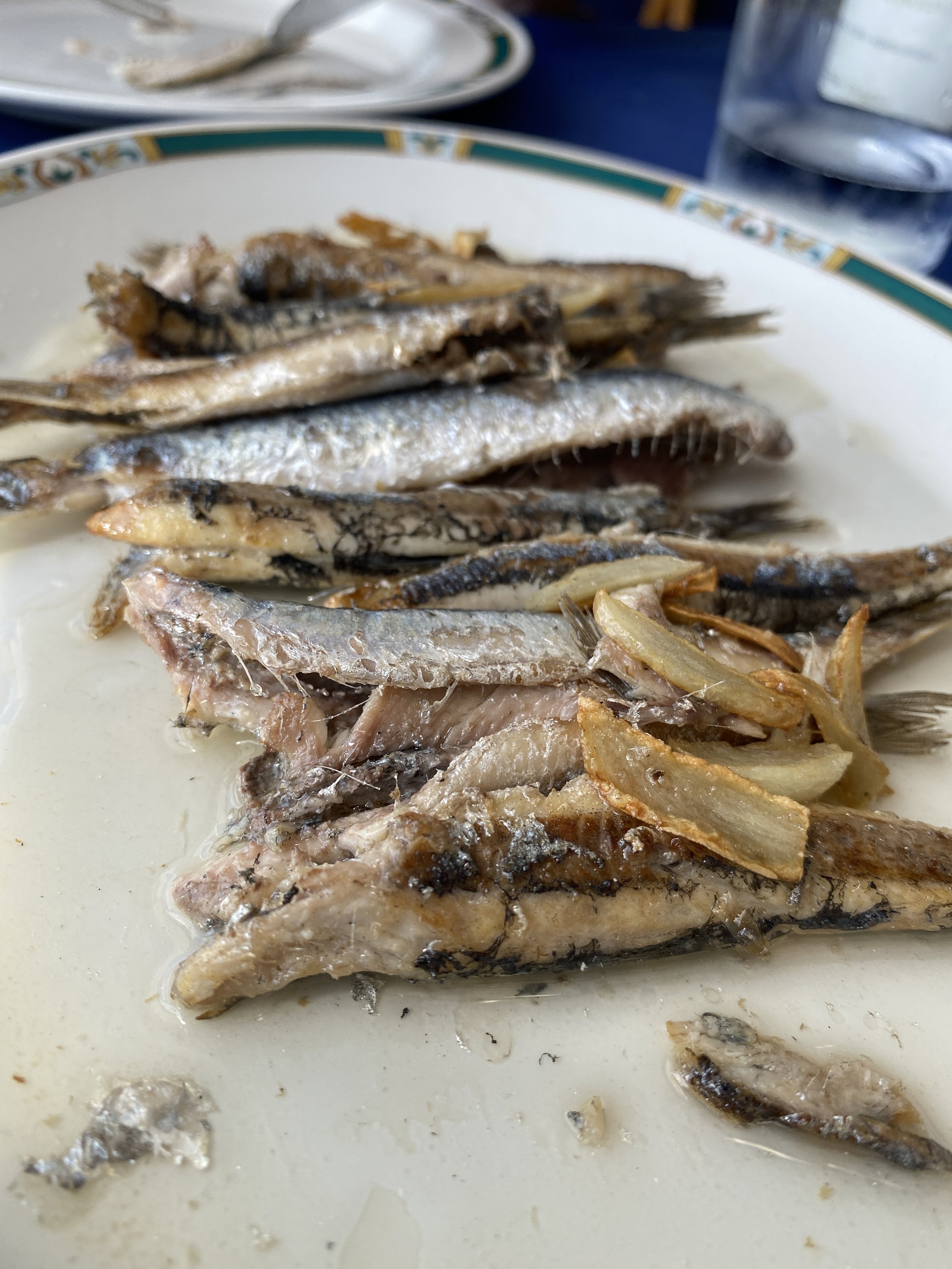
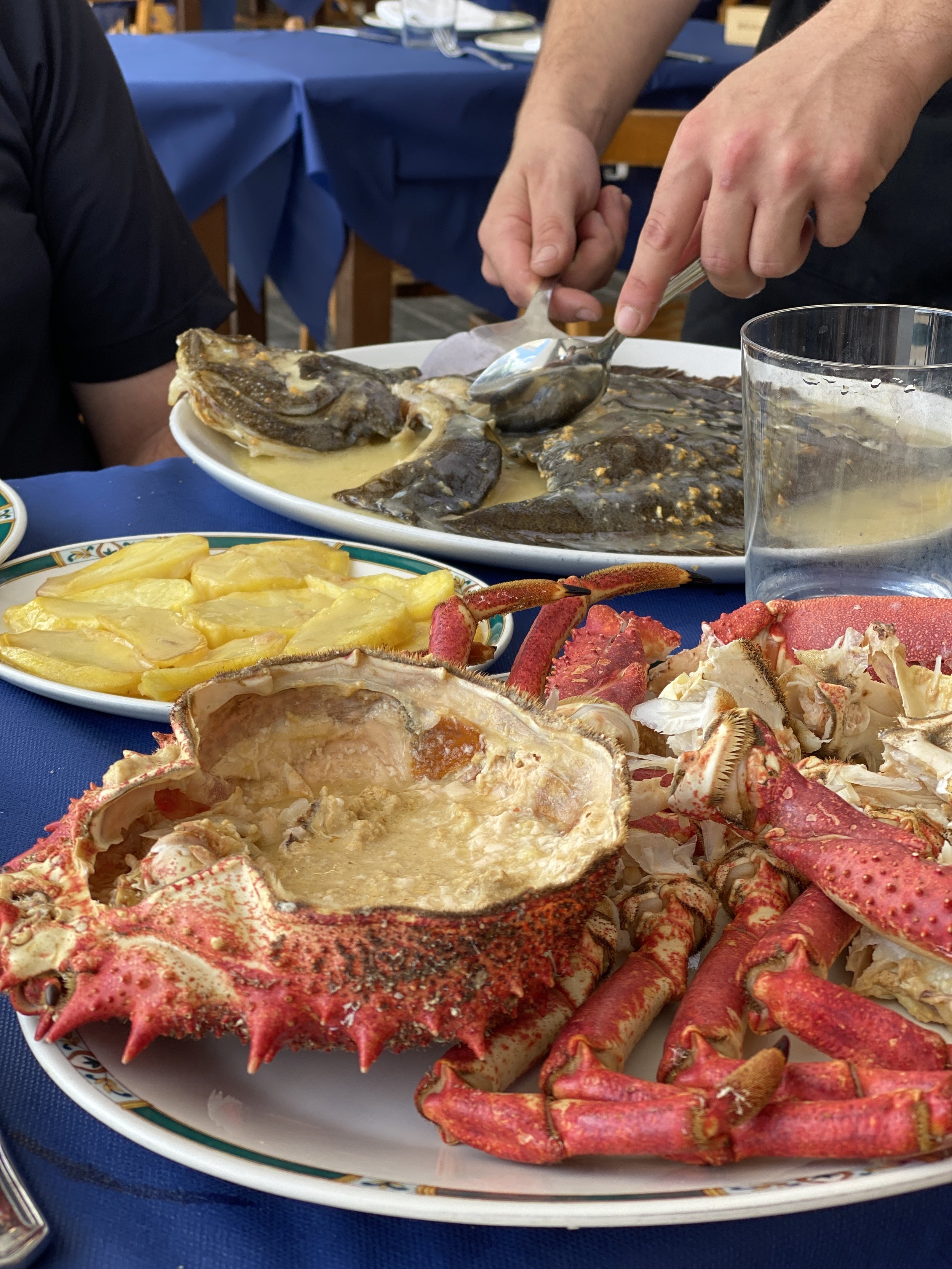
San Sebastian is beautiful, however, and we had a simply incredilbe lunch on the port. I enjoyed the town, but felt ready to leave after lunch. Unfortunately, we wound up landing in even more of a tourist vortex, Hondarribia. Super super precious and super super dead. We walked through it, gestured vaguely at pretty buildings, said little, and left.
You should know, though, that Hondarribia is on just about every list of “must see Basque Country” so don’t rule it out on my say so. Hopefully you can take my opinion with more than a grain of sea salt, knowing by now how I feel about must sees. Hondarribia reminded me why I’m allergic to them. One, when I am pressured to see what other people value, I miss the parts of travel that are transformational—the discovery, the spontaneity, the possibilities. Two, people’s must-sees tend to track, which means they are publicized, which means everyone goes there. Which leads to too many visitors, not enough locals, and menus that feature what foreigners expect. Blech. Not for me. I was at a restaurant in Florence that literally offered fettuccini alfredo. Now, I enjoy fettuccini alfredo, don’t get me wrong. But it is 100% American. Especially with chicken, which this joint offered up as an option. It reminds me of my daughter’s stories of working at a cafe that offers macchiatos. The word macchiato comes from Italy where you use it to get an espresso with a jot of milk. But Starbucks has taken the word to label a whole other kind of drink. So when people order a macchiato, she has to make sure they know what they’re getting. Sometimes people do, and sometimes they don’t and literally say, “Only at Starbucks can you get what you want.” Just think about that for a moment, and see if you find it as relevant to travel to highly touristed places as I do.
Hondarribia, Spanish Basque Country
Other day trips were more successful:
Bilbao beach: San Sebastian is known for its beach, but Bilbao has beaches too! You do need to take a subway (or car) to get there, but they are empty and fascinating. Imagine moss lined tidepools and families tossing frisbees across a wide expanse of sand.
Beaches around Bilbao, Basque Country
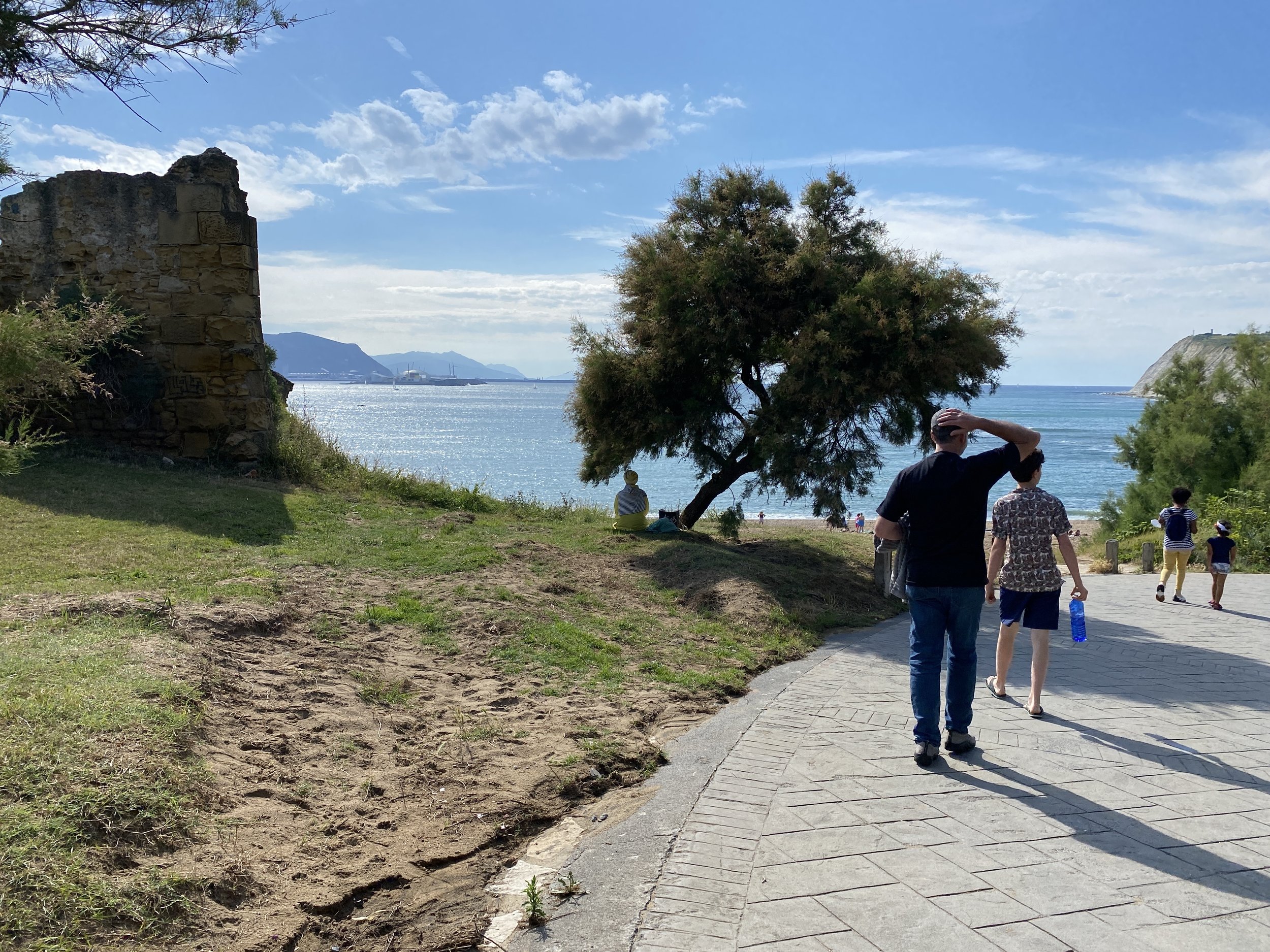
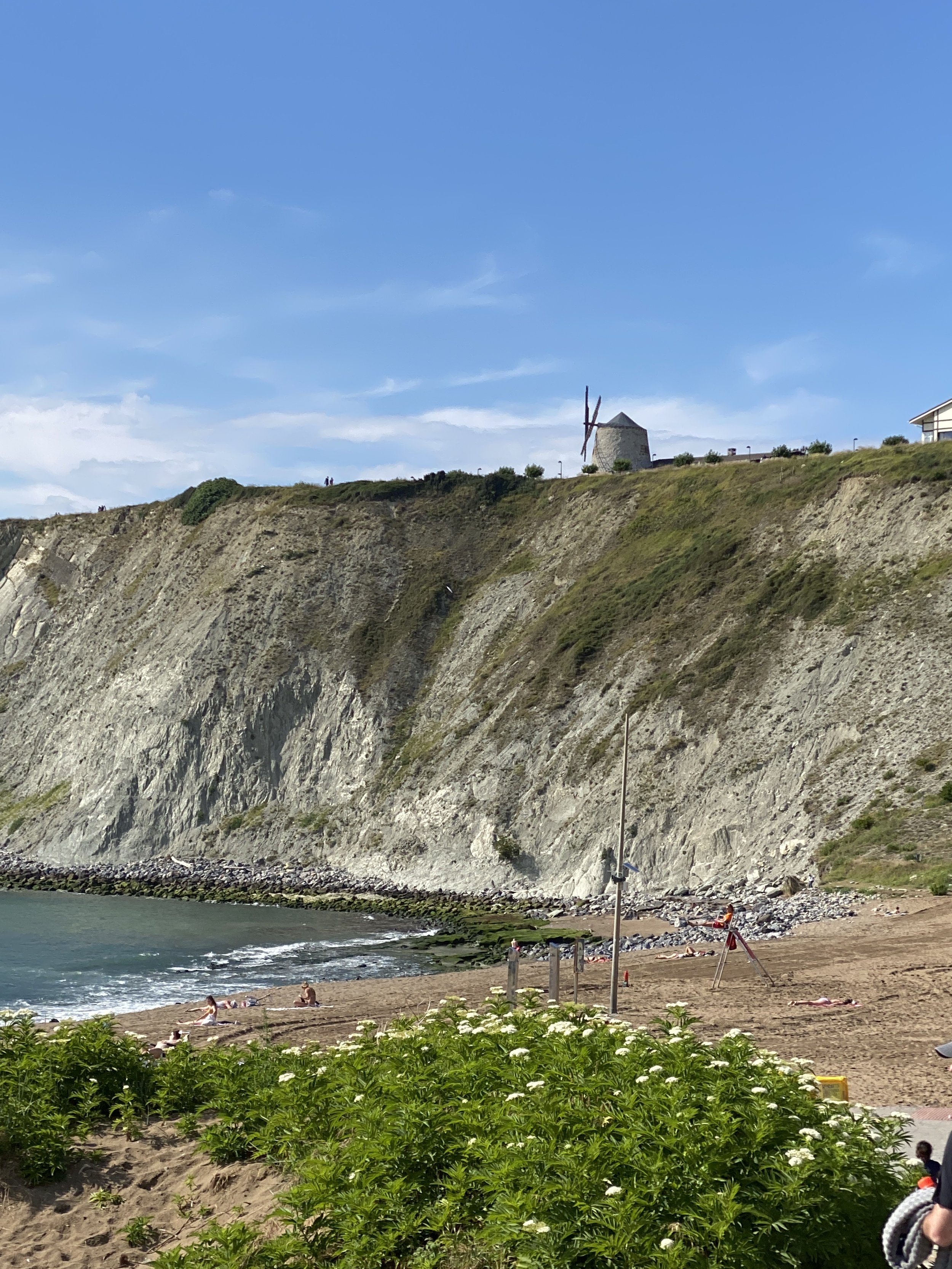
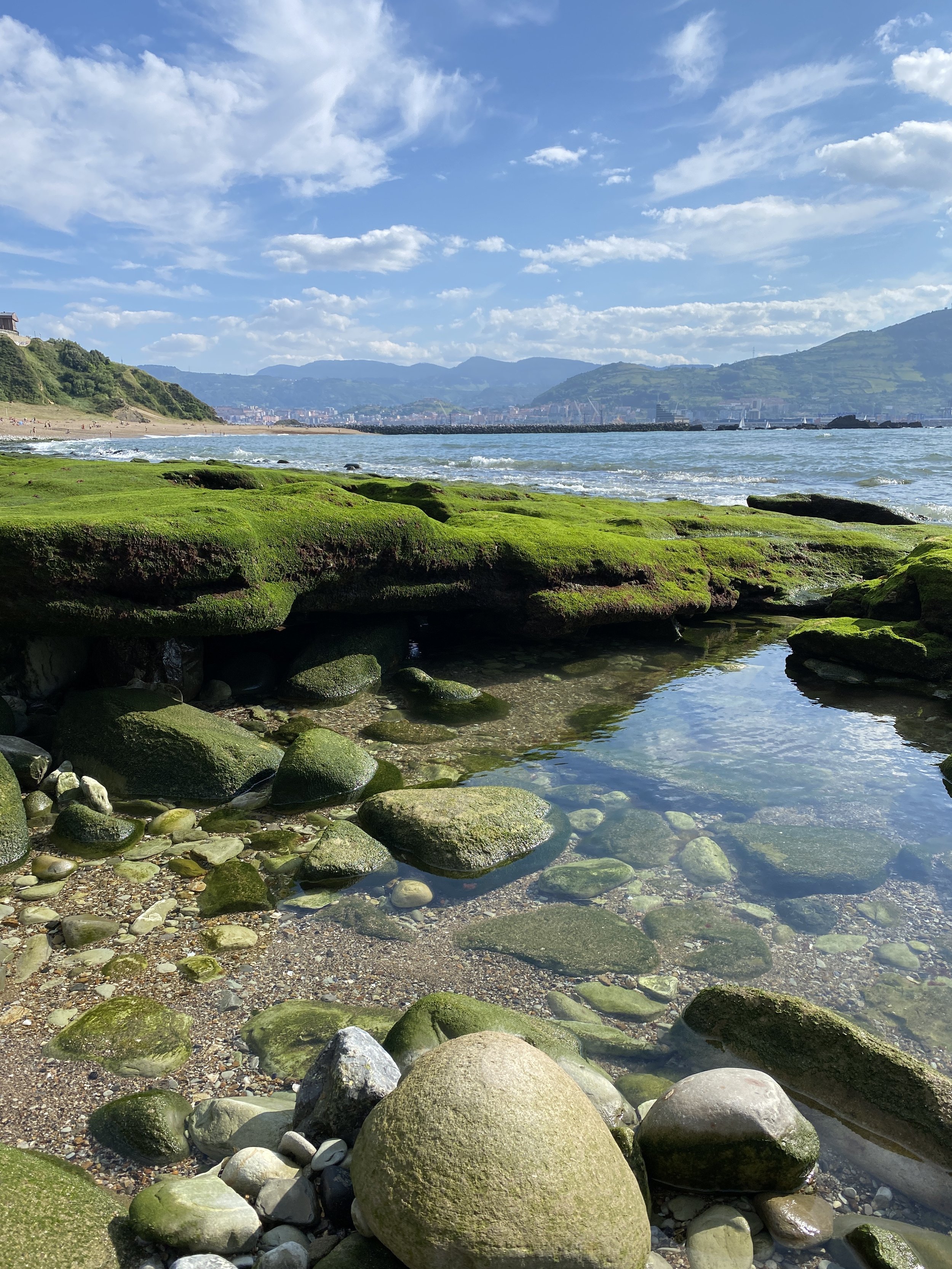
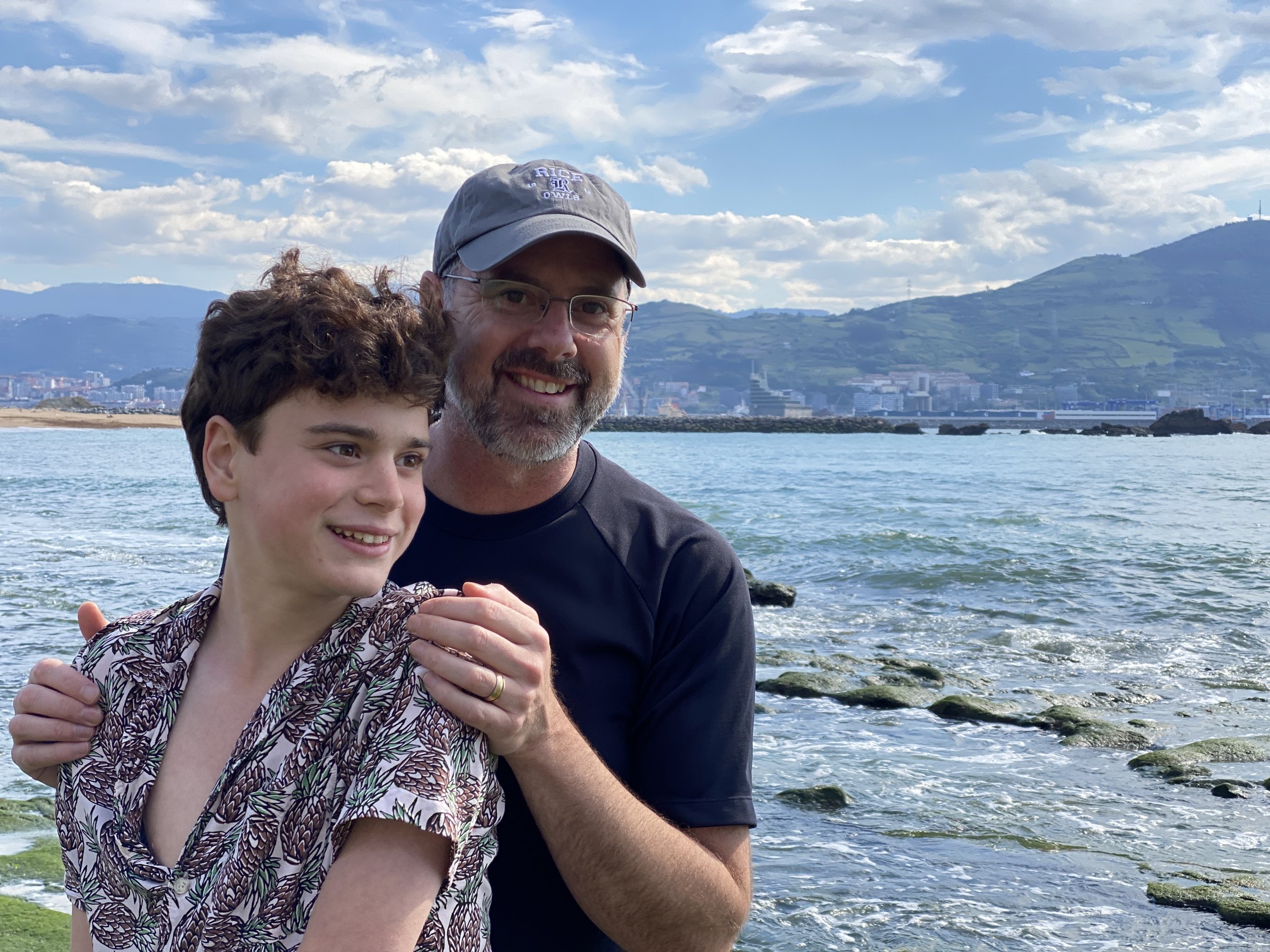
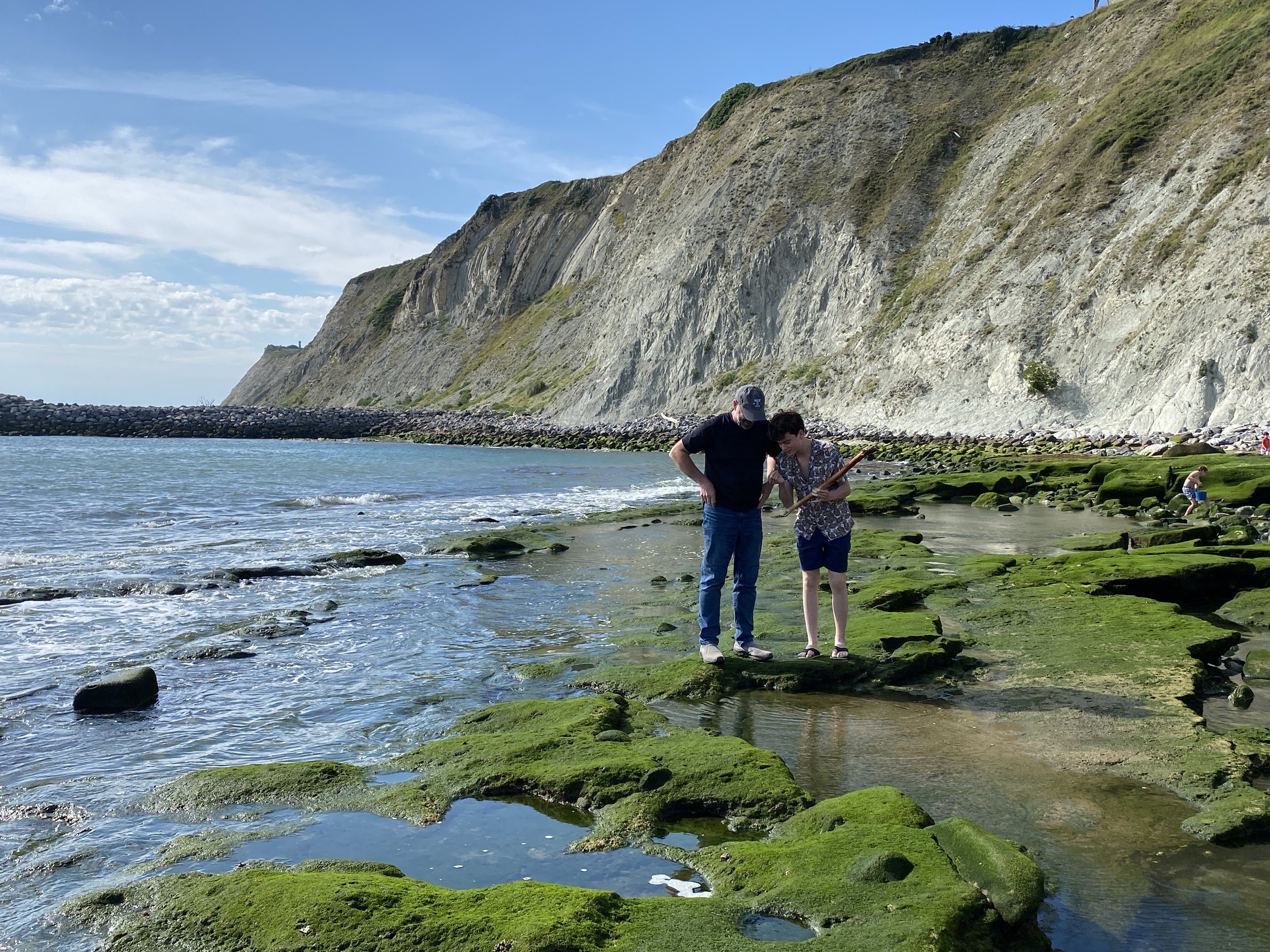
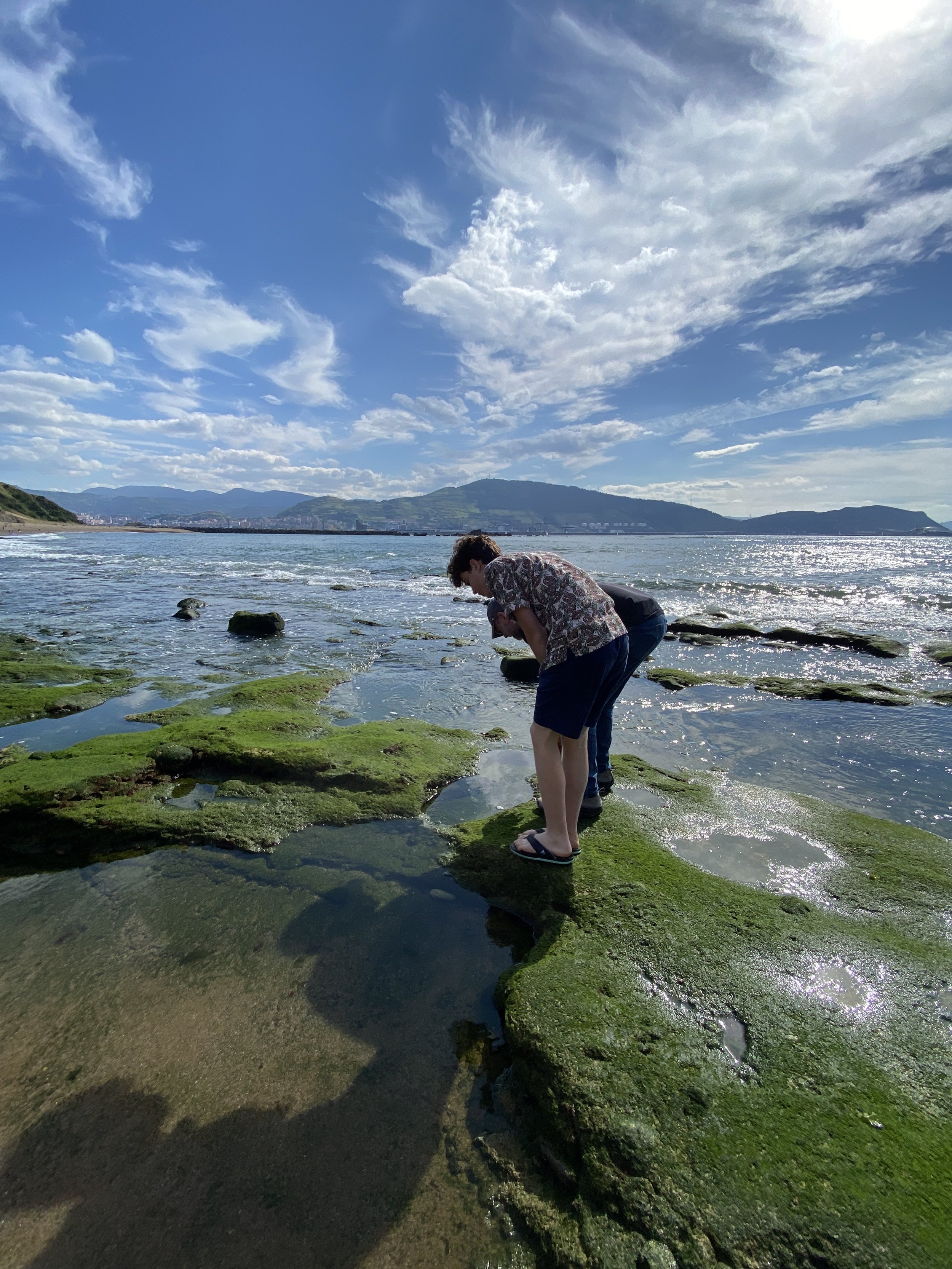
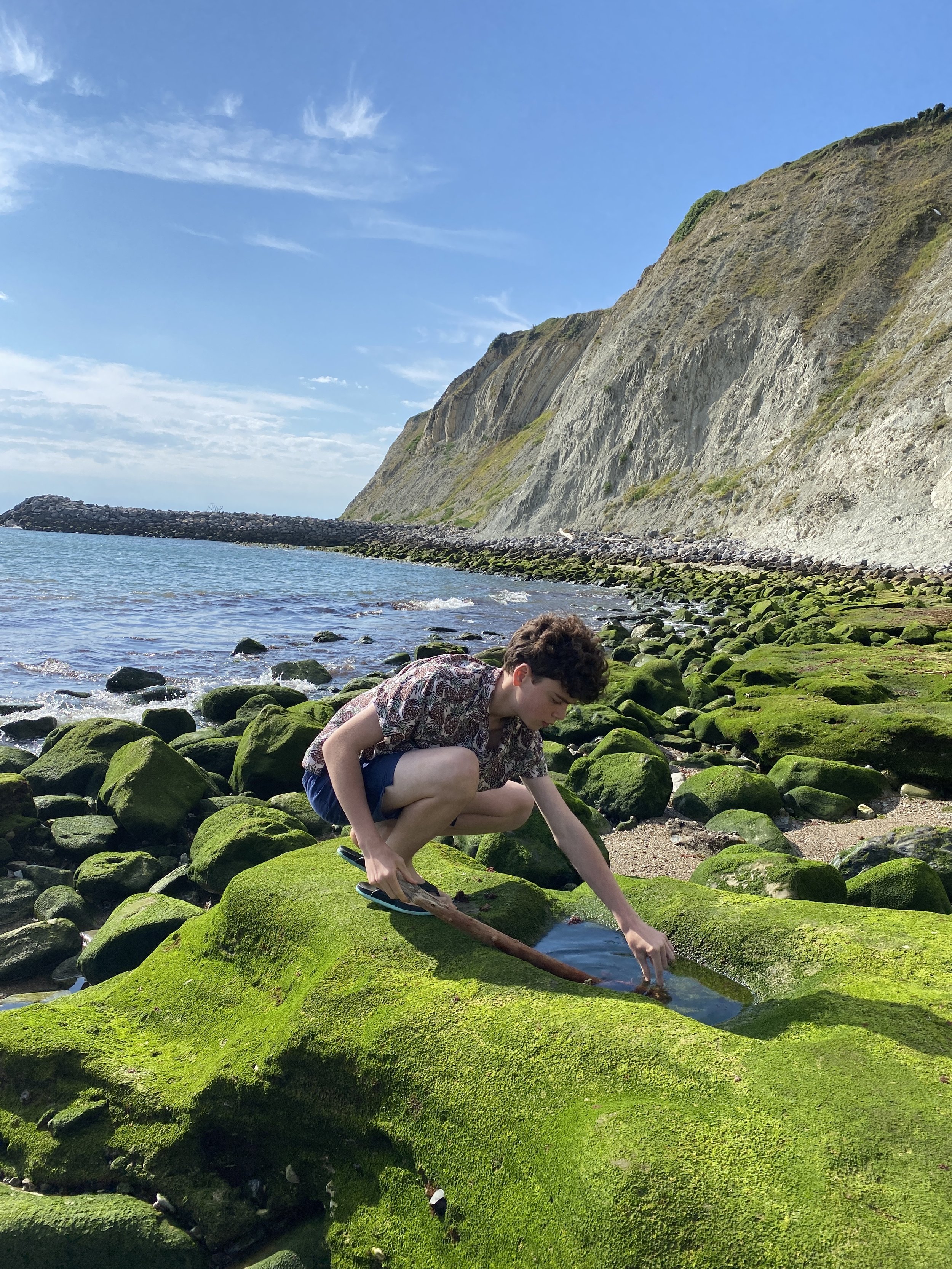
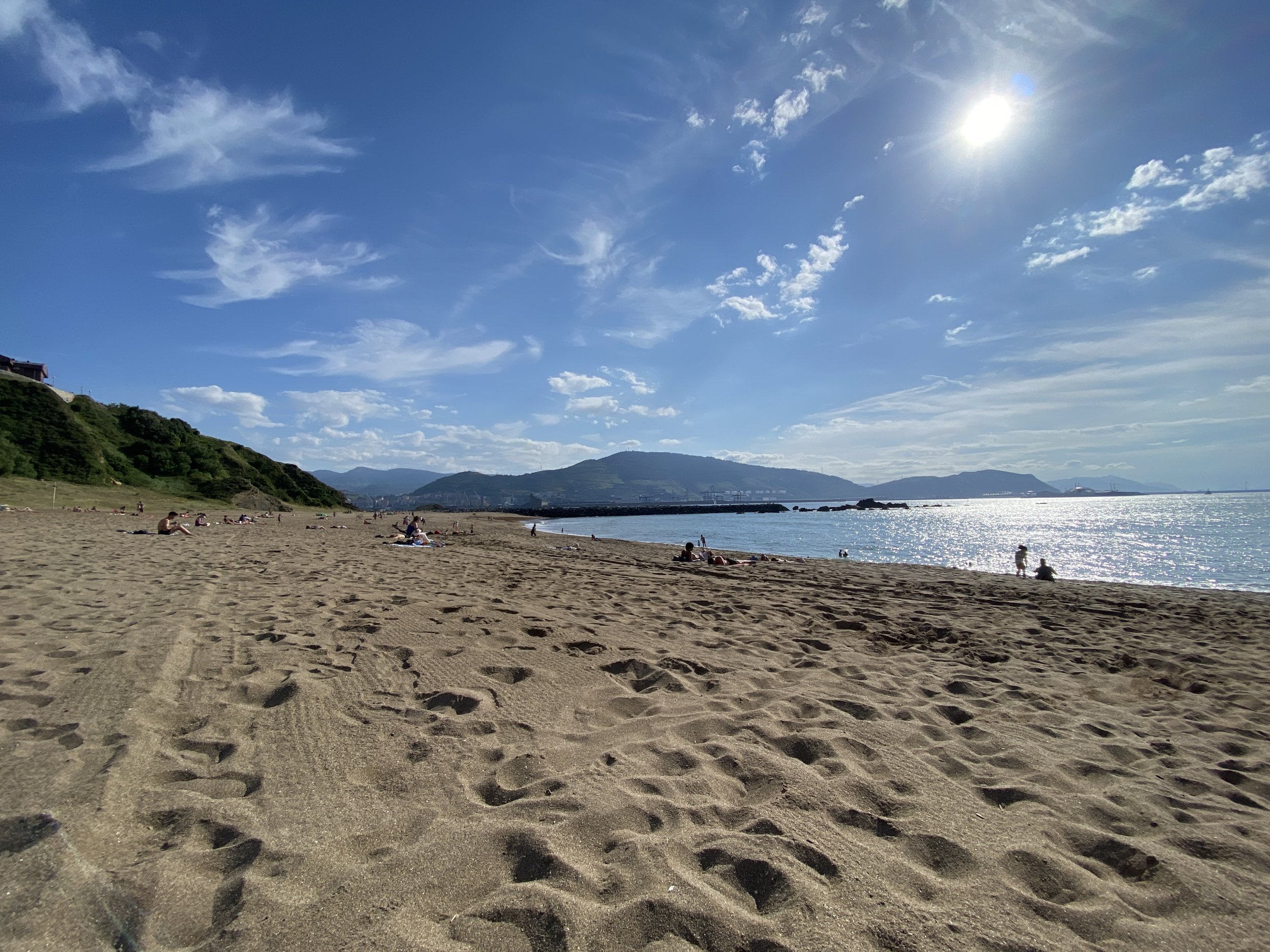
Rioja: Wineries in Rioja are…well, there are no words. Here are some photos, though. You’ll notice that the architecture is vivid. It’s what makes Spain an exciting country to visit, in my opinion. Here is a place where the t-square is a thing of the past. Buildings are surprising, exciting, jaw-dropping. We visited two wineries Marquest de Riscal and Ysios, both for the architecture (we wanted to also visit Bodegas Conde de los Andes, with more humble and old-school architecture, but alas it has limited spots and we didn’t plan enough ahead…here’s an article we found helpful just wish we’d read it early enough to make reservations!).
One of them, Marques de Riscal, was designed by Frank Gehry, the same architect who designed Bilbao’s Guggenheim, widely credited with reviving Bilbao, as the city scurried to match the city to their new symbol of progress and vivacity (PS, I adored the outside of the Guggenheim and was a little meh on the inside. It felt like they put too much money and not enough thought in their exhibits. Boy, I’m really showing all my opinions today!). The other winery we went to, Ysios, was designed by Santiago Calatrava, who also designed the bridge that leads to the Guggenheim (the twisty one, not the red one that looks like it’s from a cartoon). Funny connections between Rioja wineries and the Bilbao Guggenheim.
Bilbao Guggenheim
Rioja wines, for the record, are nothing to sneeze at. They vary so much, I was glad of the tour at Marques de Riscal to help me understand the nuances. One of the best wine tours I’ve been on, I recommend it.
Incidentally, the change in landscape driving into Rioja left me dumbfounded. like descending into another planet. Vineyards as far as the eye can see, like Barolo only with this almost desert like ruggedness.
Daytrip to Rioja
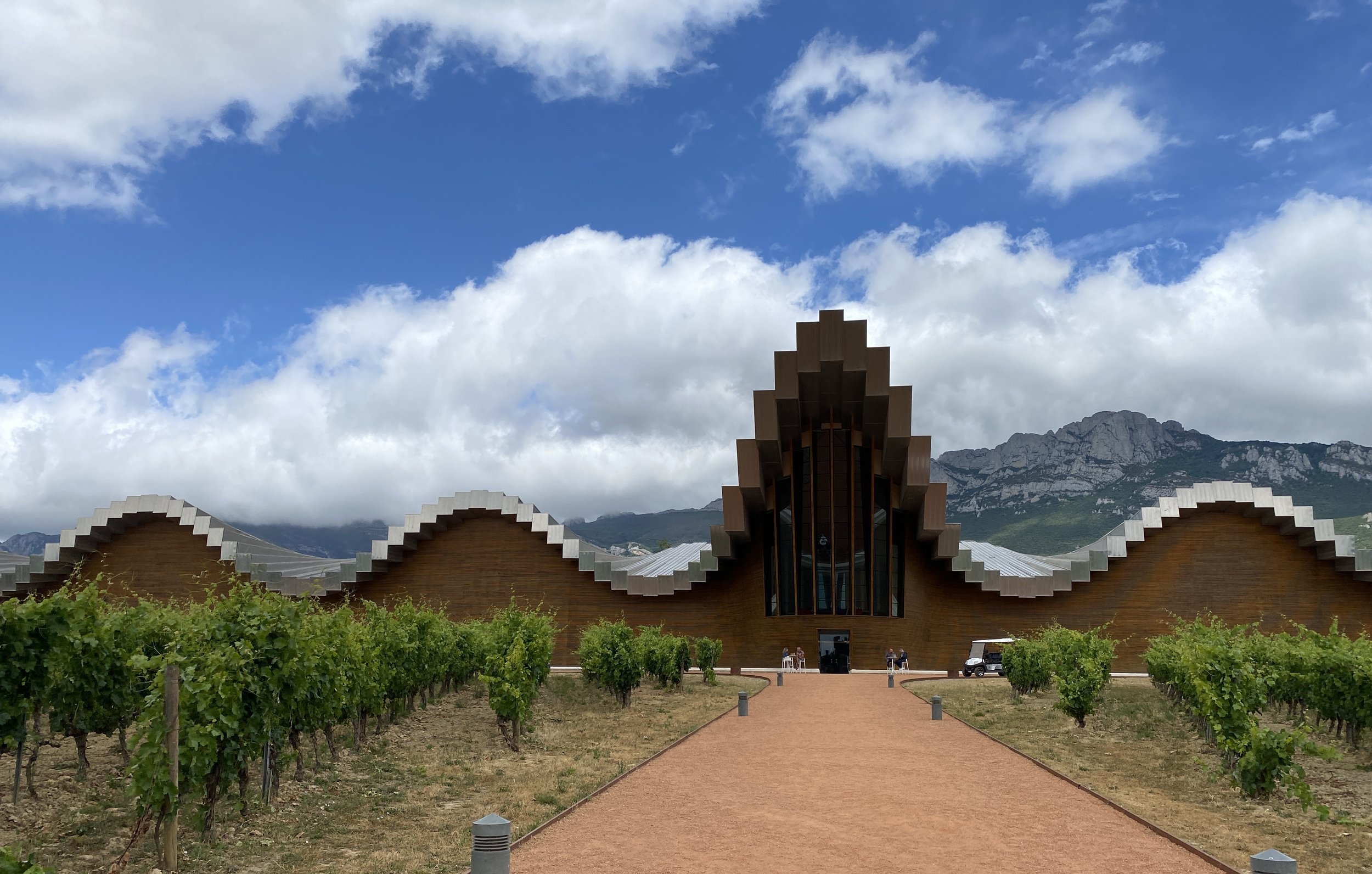
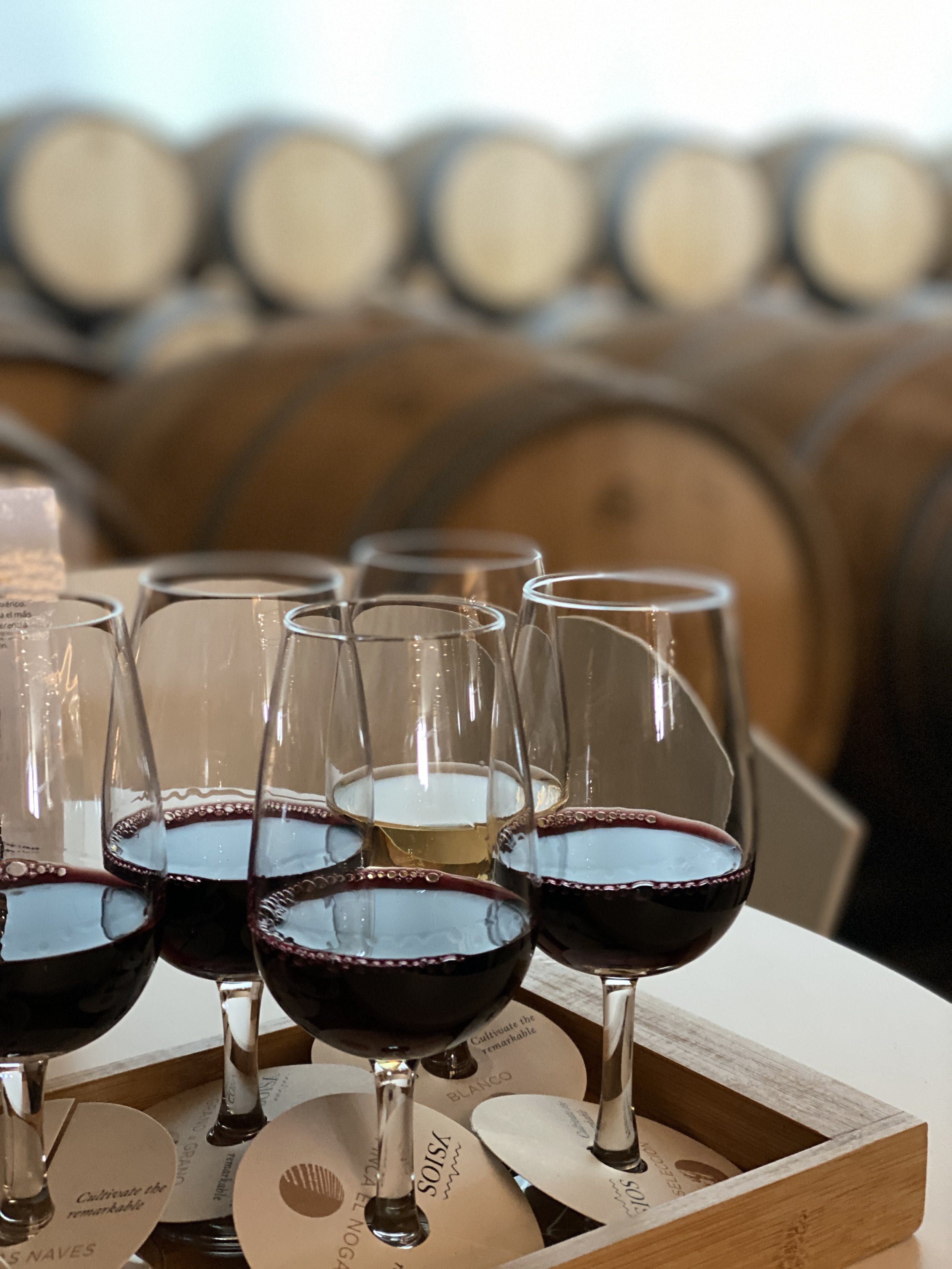

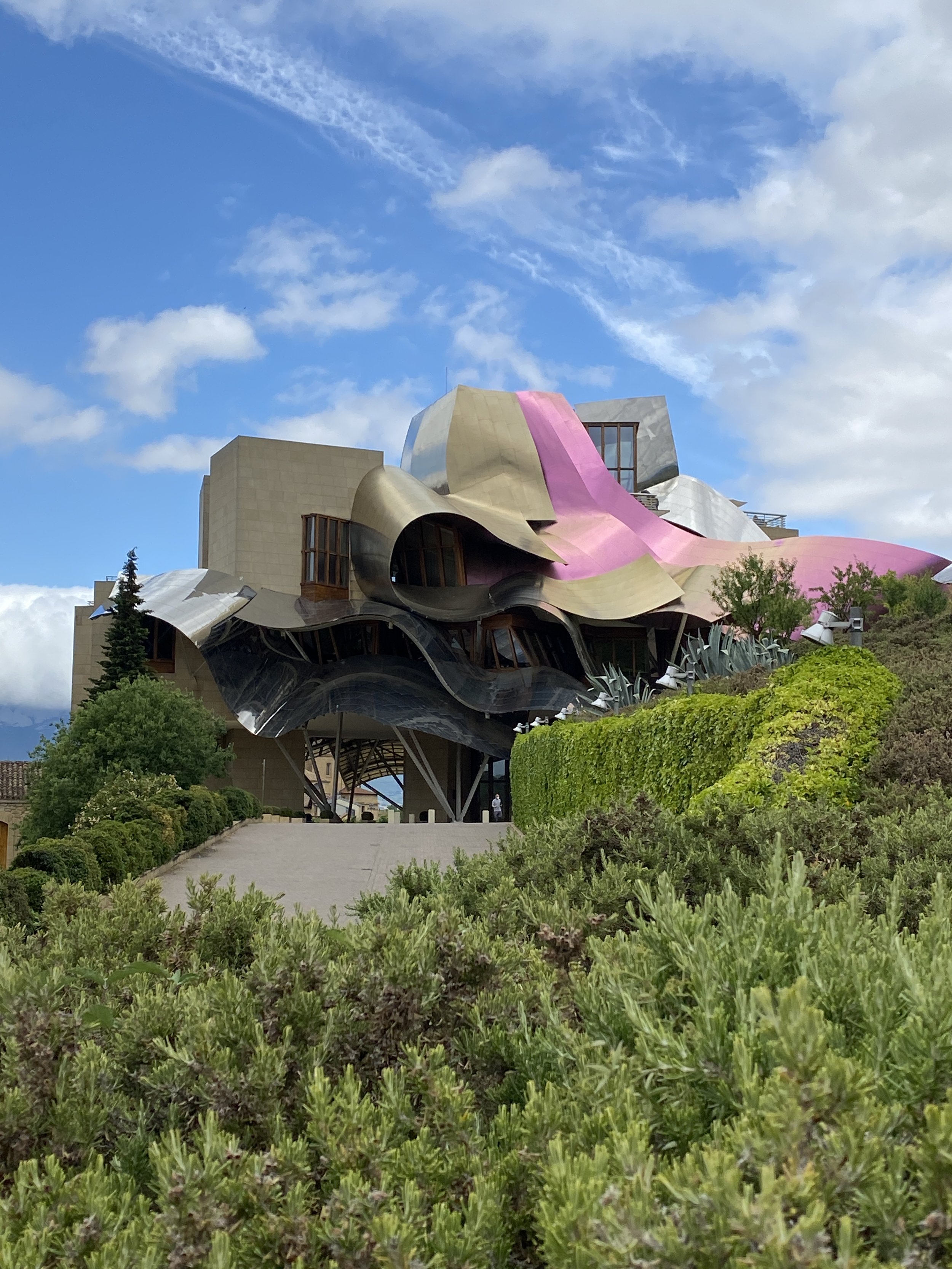
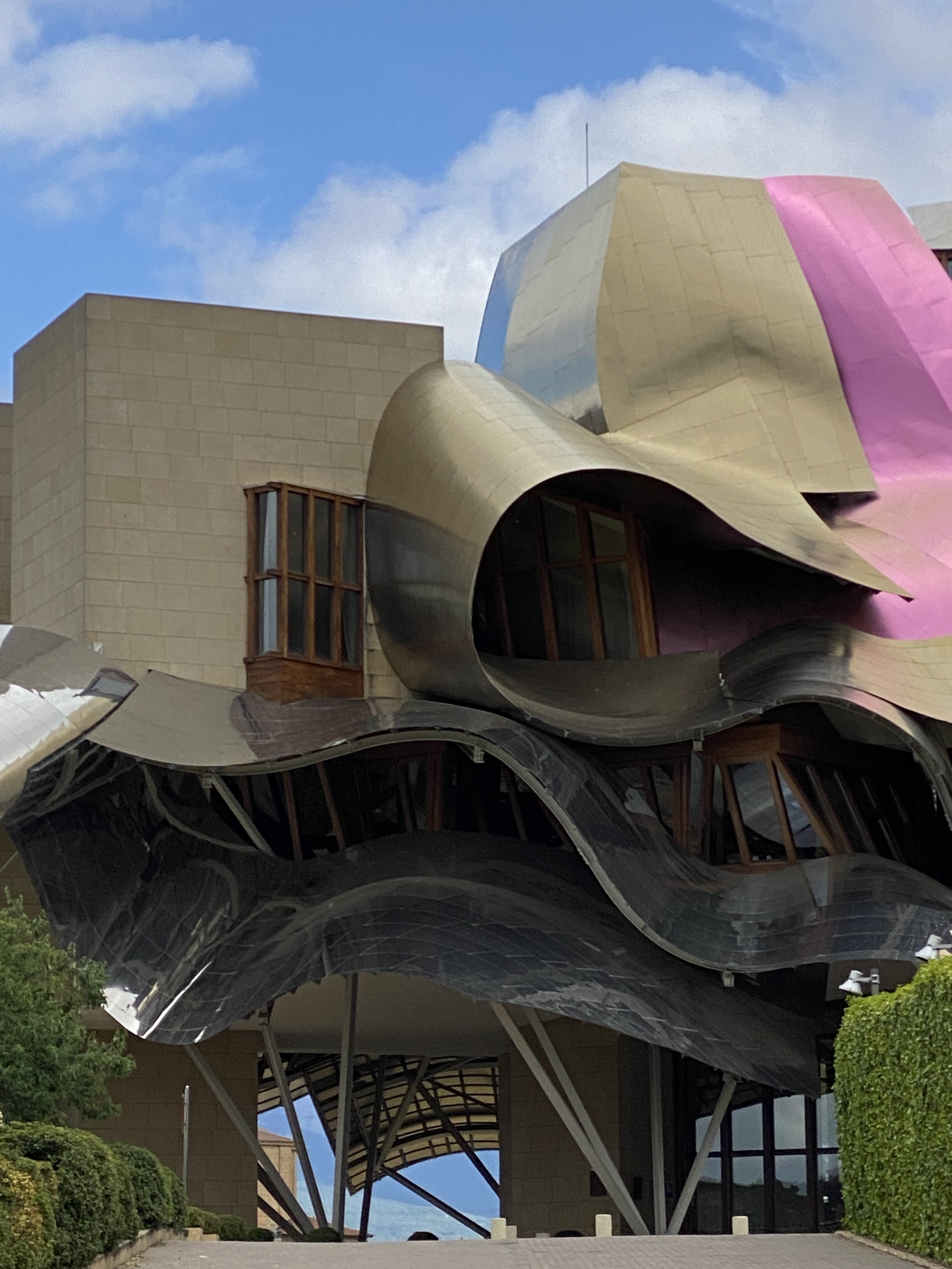
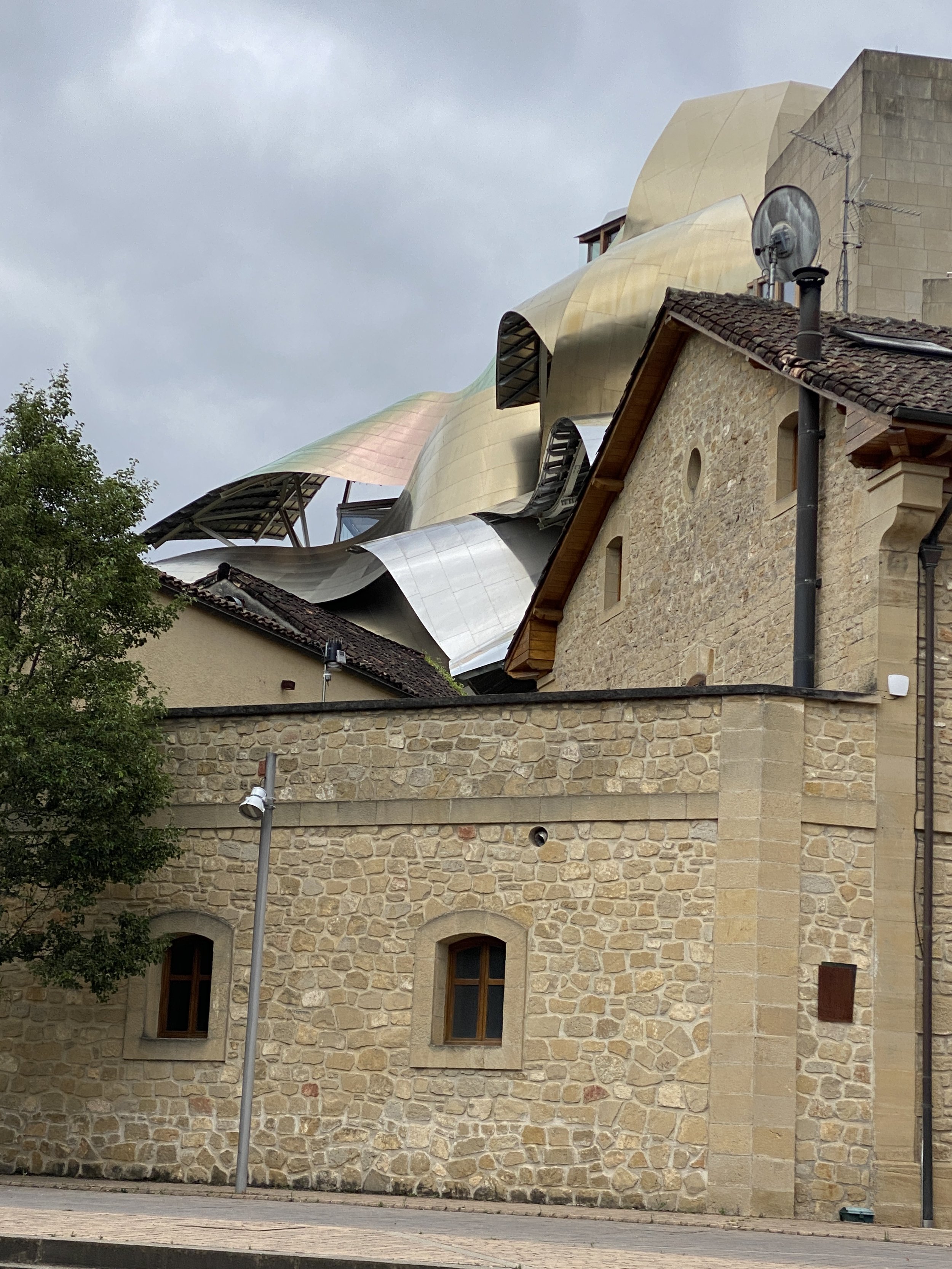
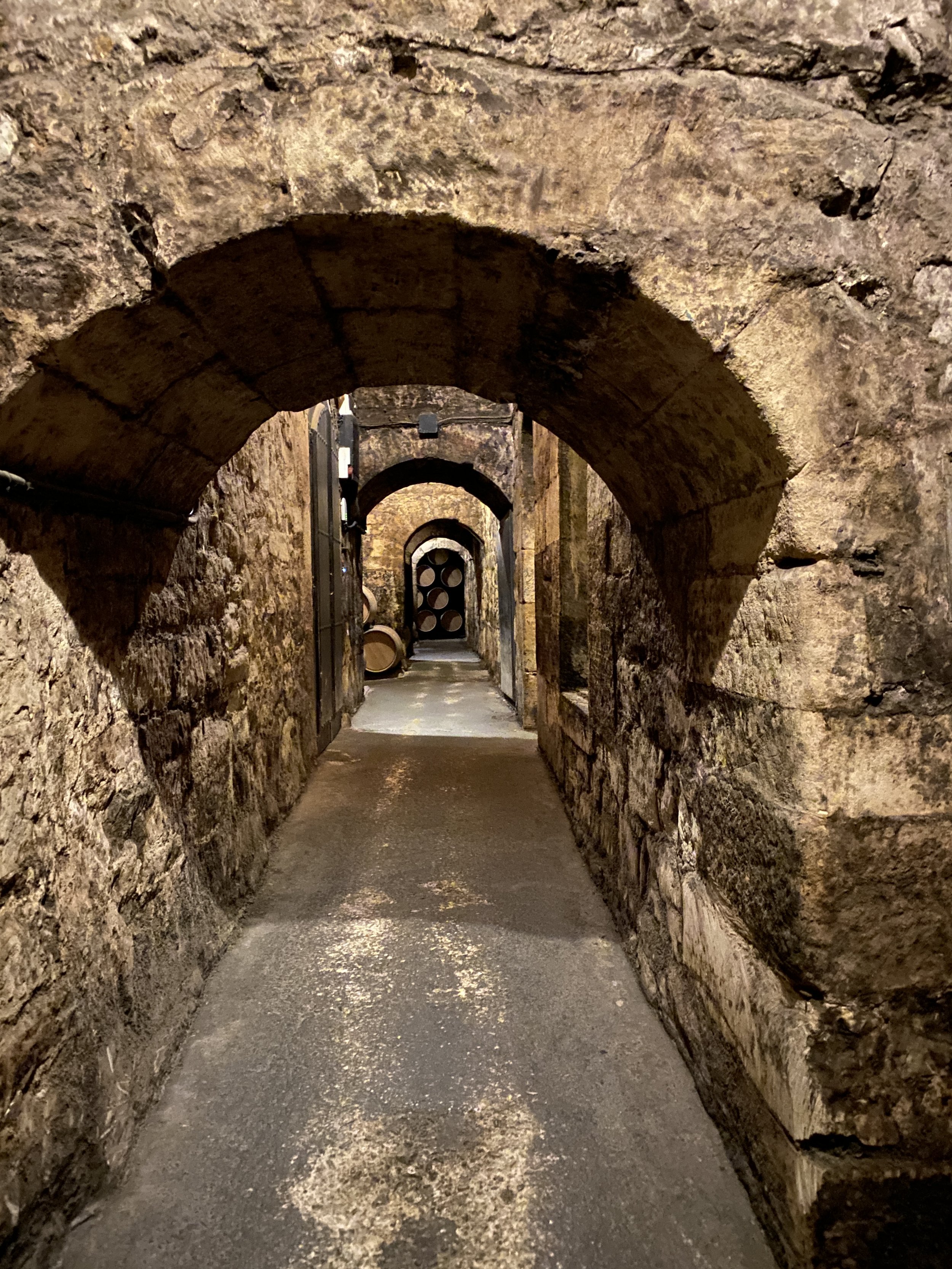
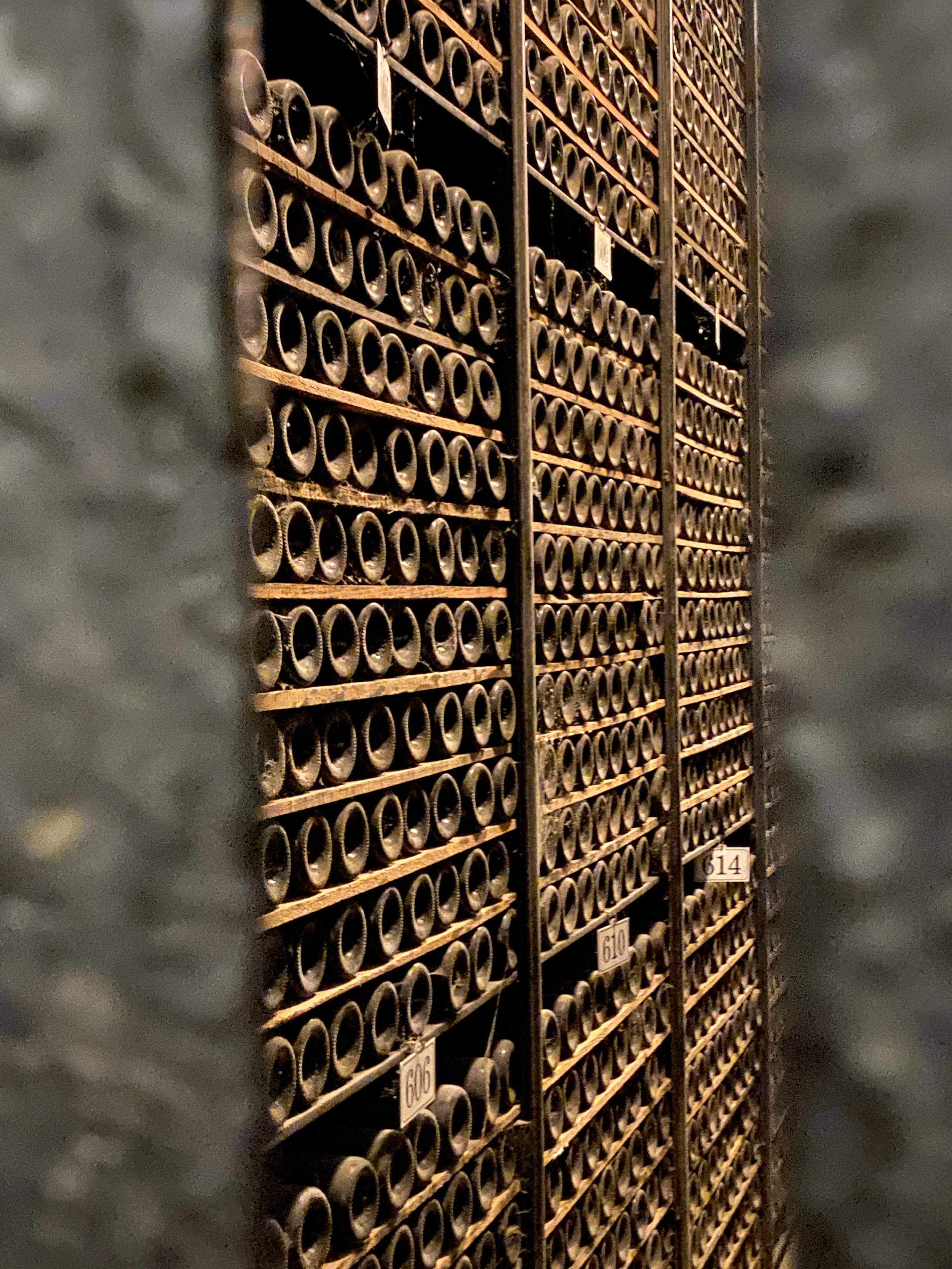

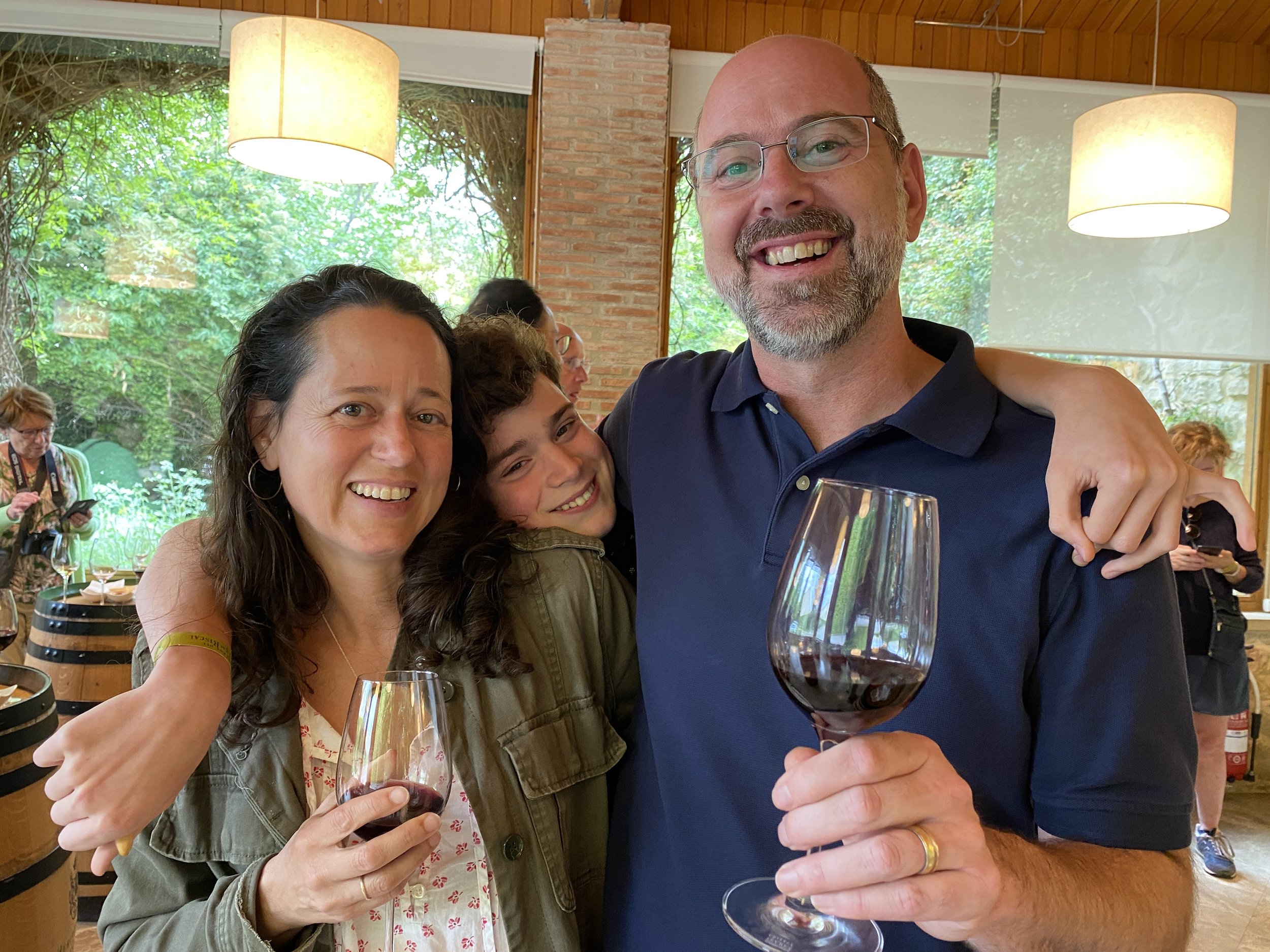
Vitoria-Gasteiz: On our way to Rioja, we stopped in Vitoria-Gasteiz for the card museum. Since our family started playing scopa (the Italian game enjoyed by old men in piazzas and also us—directions for how get to your hands on a deck and how to play here), we’ve become interested in playing cards. We have decks of scopa cards from all over Italy (for the record the Venetian ones are our favorite for shape and softness and art), and have learned to appreciate playing cards as “everyday art” like pottery or paper or pianos (when these things are hand-made with design in mind). I love the notion of having art that you interact with everyday, which is one of the things that makes me sad about today’s society, when we are surrounded by mass-produced, soulless objects. No scope for imagination, as Anne of Green Gables would say. Anyway, the museum is AMAZING. I loved imagining people from all over the world using card making as art, since time immemorial. I never thought of card games as one of humanity’s ties, so this was heady stuff.
Plus, I loved Vitoria-Gasteiz. It’s the capital of Spain’s Basque region and has a sincere bustle and lived-in feel that made me sad we couldn’t spend more time there.
San Juan de Gaztelugatxe: I have to look this one up every time I need to refer to it. Those Basque words do not fit in my modern brain. San Juan de Gaztelugatxe (thank you, copy/paste feature) is a near island off the Basque coast, quite close to Bilbao. As you look at the photo you might think it looks strangely familiar. Especially if you watched Game of Thrones. This is the location of Dragonstone, the historic seat of House Targaryen. Even if you’re not a fan, you’ll want to consider a trip here. It’s eerie and dramatic and the mood shifts with the clouds. Things to know if you want to include it in your trip: 1) train. No, I’m not kidding, the steps returning to the entrance are a killer. I have friends who went after we did, and they thought I was exaggerating until they hit about a quarter of the way up and were like, “whhhhhhhhatttt???” 2) get tickets in advance. Way in advance. They are FREE, but to protect the natural habitat, they limit the number of entries. You cannot expect to show up and reserve a ticket on the spot.
The observant among you might notice I haven’t mentioned the food in Basque country. Am I saving the best for last? Actually, no, not that so much as Bilbao is so rich in sensory experiences, they tangle like a ball of yarn. Which thread do you begin plucking? The architecture? The street life? The food? It hardly matters since one thread leads to you all the others. When I spoke with friends about Bilbao after our trip, I felt like I had travel-induced ADHD. I’d bop from one subject to another, because everything is sparkly and intertwined. I’d start talking about food and then talk about how no place has made me feel like more of an introvert than Bilbao, what with the people spilling out of bars to gather in groups by the river, talking and laughing until 4 in the morning (which may be why you’ll have more of a sense of Bilbao by looking at the collage of photos at the end of this post than my text or the corresponding photos— the allure of Bilbao is how all the streets, and the buildings, all the colors, all the flavors converge.
But now let’s talk about food. The food in Bilbao is incredible. Much of it is served pintxos (pronounced peen-chos, it’s my one Basque word!) style, which some will try to convince you are like tapas BUT THIS IS FACTUALLY UNTRUE. Tapas are small plates. That means regular plates of food, just shrunk down. Pintxos are more akin to Venice’s cicchetti. That is, they are designed as finger food to go with drinks. Think: skewers and things on toast.
As with much of life, forcing a constraint (finger food) leads to creativity. I found things on bread rounds I never would have expected, like spider crab gratin, young eels (also popular? Fake young eels made from surimi, like our fake krab), padron peppers (akin to the now popular shishito peppers, both in preparation and in the roulette aspect—you never know how spicy they’ll be!) often with sausage, garlicky shrimp, goat cheese (or other cheese) and caramelized onion (or other bit of interest, like jam or a piece of ham for flavor), stuffed piquillo peppers (yes, we’re still doing things on bread), marinated octopus, and anchovies in all sorts of preparations from marinated to fresh with all sorts of accompaniments.
As for the skewers, the one you’ll find everywhere is called the Gilda and it’s one of my faves—spicy peppers, salty anchovies, and plump olives. Simple, but so complex and pleasing, and so light you can always fit a few beside your other pintxos. Shrimp can come on skewers, as can squid cooked in its own ink. There are less seafoody options as well, like batter fried sausage or garlicky mushrooms nestled with Iberico ham.
Now, for all my pintxos are not tapas thing, you will find some that come on a plate that demand a fork and even a knife. Beef cheeks is one example. Or, my favorite, flakes of tuna with red onion and celery in a lemony preparation served in a tuna can.
The one similarity between pintxos and tapas (and cicchetti, when it comes to that) is that they are so cheap, it’s easy to be spontaneous and nab a table to have a drink and try a pintxo or two. Even super popular places have off hours, keep your eyes peeled for promising pintxos and a seat at the bar and seize your moment! In fact, the pintxos crawl is kind of the point of pintxos. People usually just get a few with a drink, and then move onto the next bar for more sampling.
Not being bar people, we mostly got our pintxos at lunch, sitting outside. We never quite got on Spaniard’s schedule, which translated into plenty of open tables at our lunch time. We’d nab a table and one or two of us would head to the bar to point out the pintxos we wanted. Bars do the ordering and paying differently at times, so don’t worry if you notice you are doing it “wrong”, ie ordering your drink from the bar rather than the waiter. People are patient, it’s all good.
That said, I know it can be overwhelming. How do you choose? How do you order? How do you pay? If you want to get your feet wet and sample a bunch of pintxos in a uniform and predictable way. I recommend La Ribera. It’s an enormous, enormous market, one of the biggest covered markets in the world (some say the biggest, I’m not sure how these things are defined), and their food hall is essentially a pintxos bazaar. Are they the best pintxos I had? Not by a long shot (that honor goes to the ones I had at Guri Toki, El Globo, and Cafe Bar Bilbao—all in Casco Viejo, the old quarter). But it’s fun and easy. You go to whatever stand you want, point at what you want and say what you want to drink, and you pay for it right there. Then you take your plate and glass to one of the tables (if you can find one—beware: this place does a brisk business and it can be hard to get a table!).
Obviously, La Ribera deserves a wander, even if you’re not in the market for pintxos. Most of the products you’ll see at the market are from local farms and it’s a staggering variety. As usual, I particularly love the fishmongers. What is it about working with fish that makes people so dang happy?
La Ribera Market
La Ribera is also a great place to pick up cans of tuna or anchovies and paprika (sweet, hot, or smoked) before you go.
Now, dining in Bilbao is not all pintxos. The place I made a reservation is Casa Rufo, a steak house across the river from Casco Viejo. Casa Rufo is a family-run restaurant that’s been in operation, out of what seems like a butcher shop, for over a hundred years. We got a rib-eye and fell madly in love. We tumbled out of the restaurant with full bellies and even a tub of the pyramid salt they used on the steak. It’s not a salt I’ve worked with before, and I loved how it added this light crunch to the steak, but just a hint of salinity, rather than the powerful salty hit you’d expect with that kind of toothiness.
The night we rolled back into town after our day in Rioja, we went to Rio Oja for dinner. Pretty much because we thought that would be funny, but also because we could actually get a table (we were eating later than usual, thanks to the full day). I loved it so much. It’s a family run establishment and it feels like it. Basque home cooking, served in a cozy and no-fuss environment with splashes of theater like the enormous pans of food sitting around the bar’s perimeter in a display case and the long pours of sangria. Loved the meatballs.
The culinary highlight of Bilbao though, for me, was Mina. The Basque region is a part of the world with the highest rate of increase in Michelin starred establishments, mostly because of all the culinary excitement happening in San Sebastian. I’m not really Michelin’s target audience (I mean, I’ve almost never been happier than tucking into those meatballs on a melamine plate at Rio Oja). But I figured given how much I love food, I should probably at least explore the idea of eating at a Michelin restaurant to see what all the fuss was about. What if I’m rejecting them wholesale because I don’t like to be confronted with pretty things I can’t have? You know, sour grapes.
I started researching possibilities in Bilbao and San Sebastian and within ten minutes I decided that my rejection of Michelin dining has nothing to do with sour grapes and everything to do with preciousness. I just don’t like it. In general, I prefer paper table cloths to fine linen, I won’t go into a restaurant if I notice they hand out bread with tongs, and I don’t like second guessing everything about my appearance from the moment I walk in the door. Oh, also, I don’t like feeling like I’m in a library when I eat.
That said, I do like food. A lot. A lot a lot. And I know that my objection to fussiness means I’m depriving myself of opportunities to play, palate-wise. So I looked again and stumbled on Mina.
At Mina, you can sit at the bar and watch the chefs cook. This hooked my interest. Maybe it would feel like an episode of Top Chef! Also, their food is inspired by La Ribera, that grand covered market, which lies across the river from Mina. All in all, it didn’t look like the kind of place I’d feel like an imposter with arms too long and legs too short, where I’d have to hush my voice and look appreciative of people pouring my water for me when I’ve only had one sip. Also, as places with a Michelin star go, it was less pricy than I would have expected. So I booked it for Keith and I, calling it an anniversary treat.
on the bridge, La ribera behind us, on the way to Mina!
What a treat! I was right that the open kitchen and sitting at the counter lent a vibrant feel to the meal, rather than one where I’d worry about arranging my face to look serious to hide my glee at a new flavor. The chefs were incredibly intense around their work, and focused with the kind of precision I aspire to when doing absolutely anything—these are people at the top of their game. It gave the meal a balletic quality. The three and a half hour meal zipped by like nothing. I couldn’t believe when we got to the end!
Our menu (printed on brown paper, like what is used to wrap fish at the market, so as to transport us to the place “where the day begins at Mina”) included:
Mussels in lemongrass, coconut soup, and spicy tomato
Black garlic and mushroom infusion (one of my faves)
Smoked txitxarro (a small fish) cauliflower and cider
Grilled oyster with crayfish essence
Txangurro (a kind of crab) and salt-cured egg-yolk soup
Scallop cured in kombu seaweed with pork skin stew (Il Bel Centro: A Year in the Beautiful Center readers will be chuckling to themselves right about now…haven’t read my memoir of living in Italy? You can check it out right here, or at your preferred marketplace here, or on Amazon here)
The purple onion Real from Zalla (a standout)
Aubergine confit with red tea served with white prawn
Bonito from Biscay bay with citric butter sauce and roe
Bone marrow with rosemary poultry broth served with spiced potato
Cod kokotxas (cheeks) with a cockle juice (amazing)
Galiano: traditional duck stew (wow)
For dessert:
Tamarind, Perrins, and toffee (this doesn’t begin to describe this dish, which was a Worcestershire sauce meringue topped with tamarind ice cream, or tamarind meringue topped with Worcestershire sauce ice cream, it’s hard to remember because those flavors surprisingly echo each other so well, topped with a bit of toffee)
Saffron creme brûlée, apple, and frozen amaretto
dining at mina in bilbao, spanish basque country
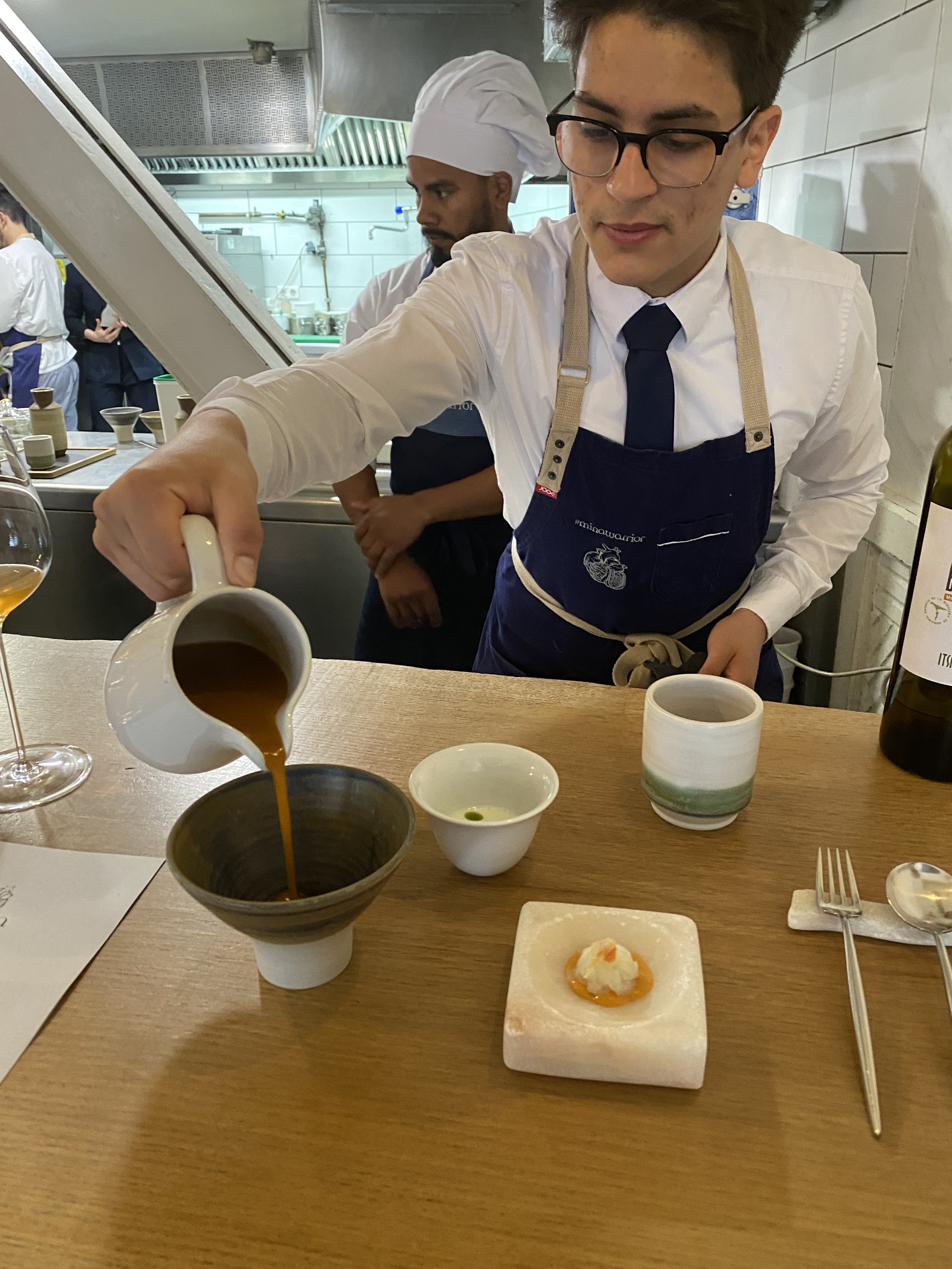
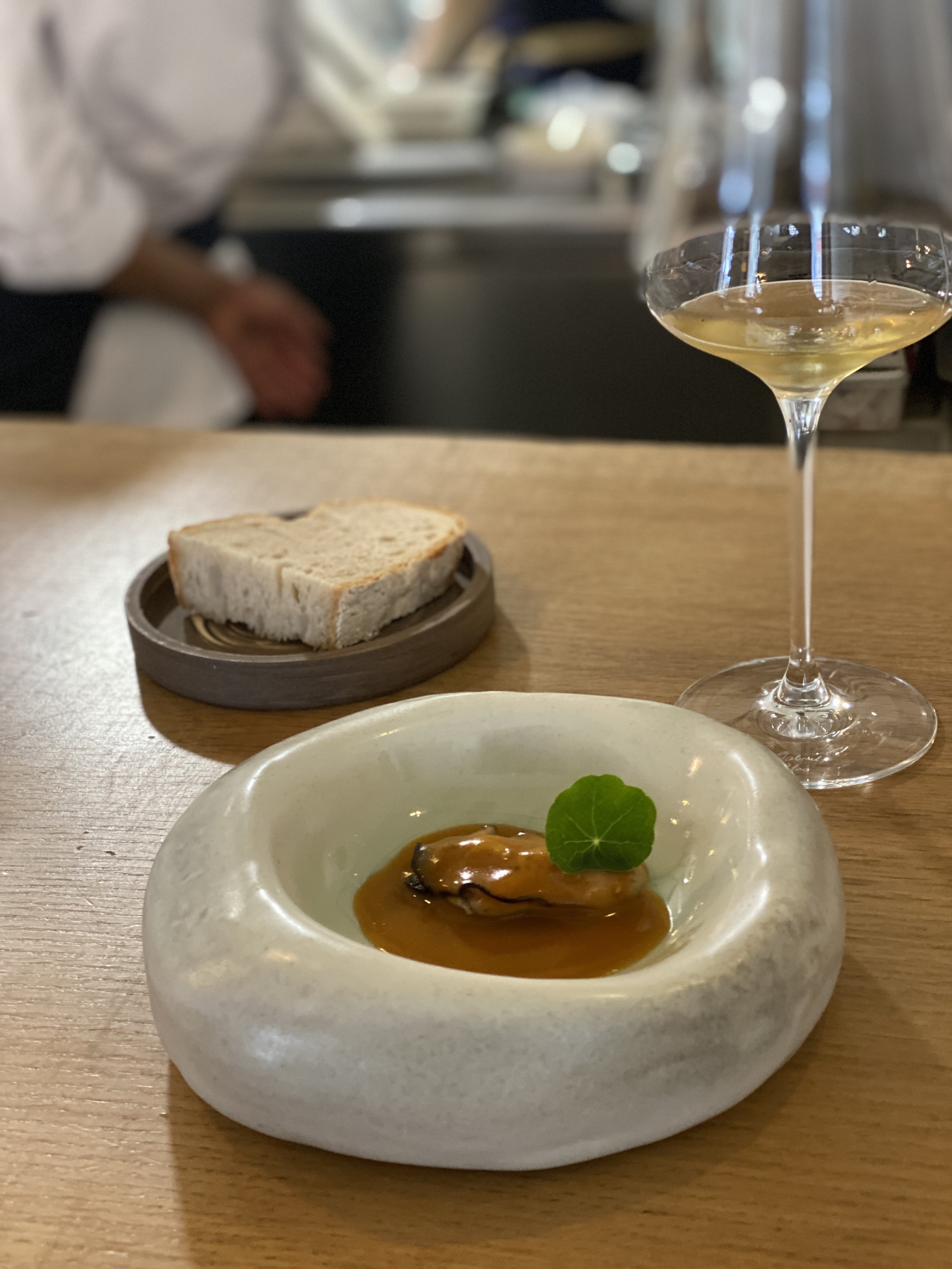
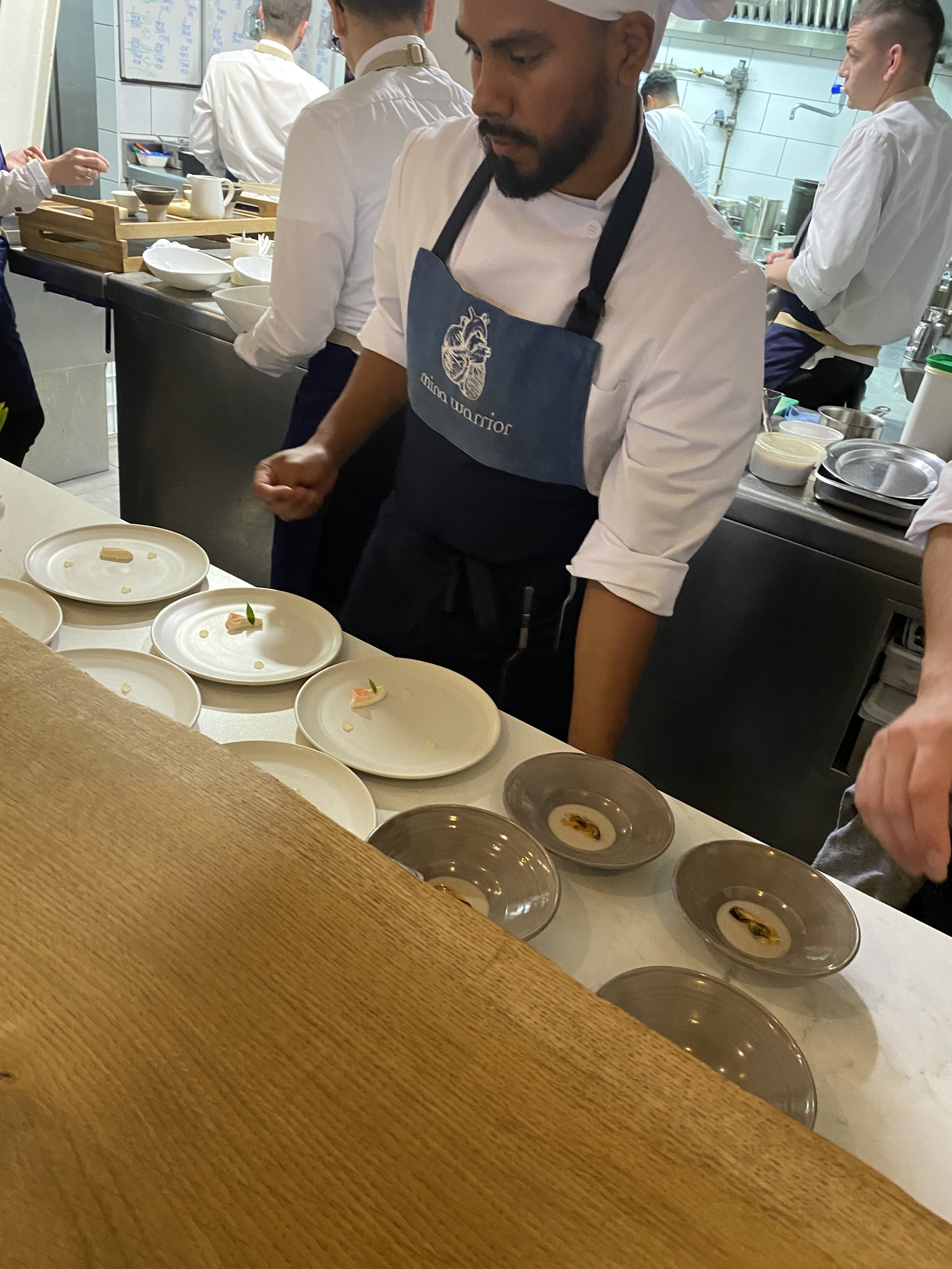
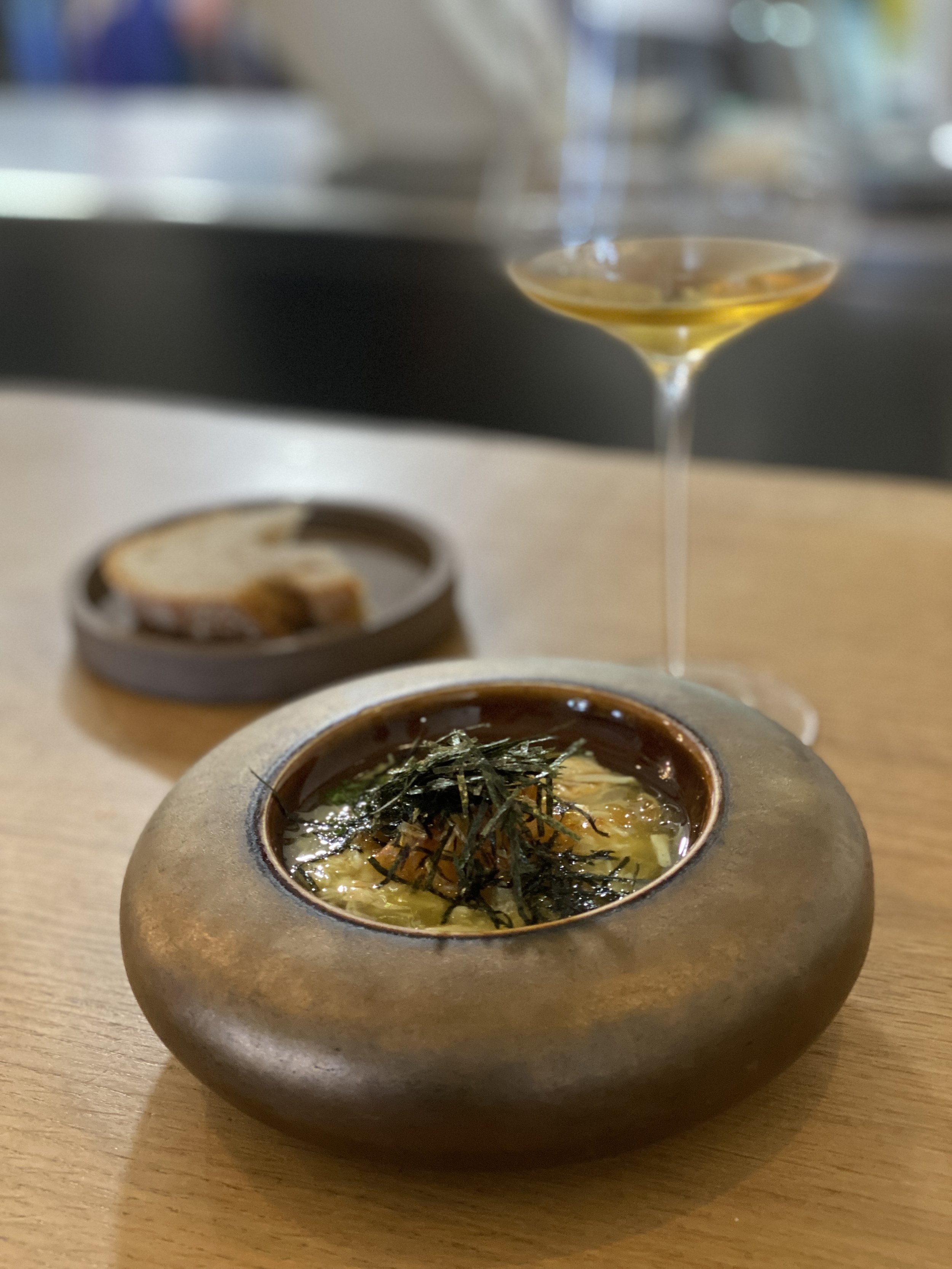
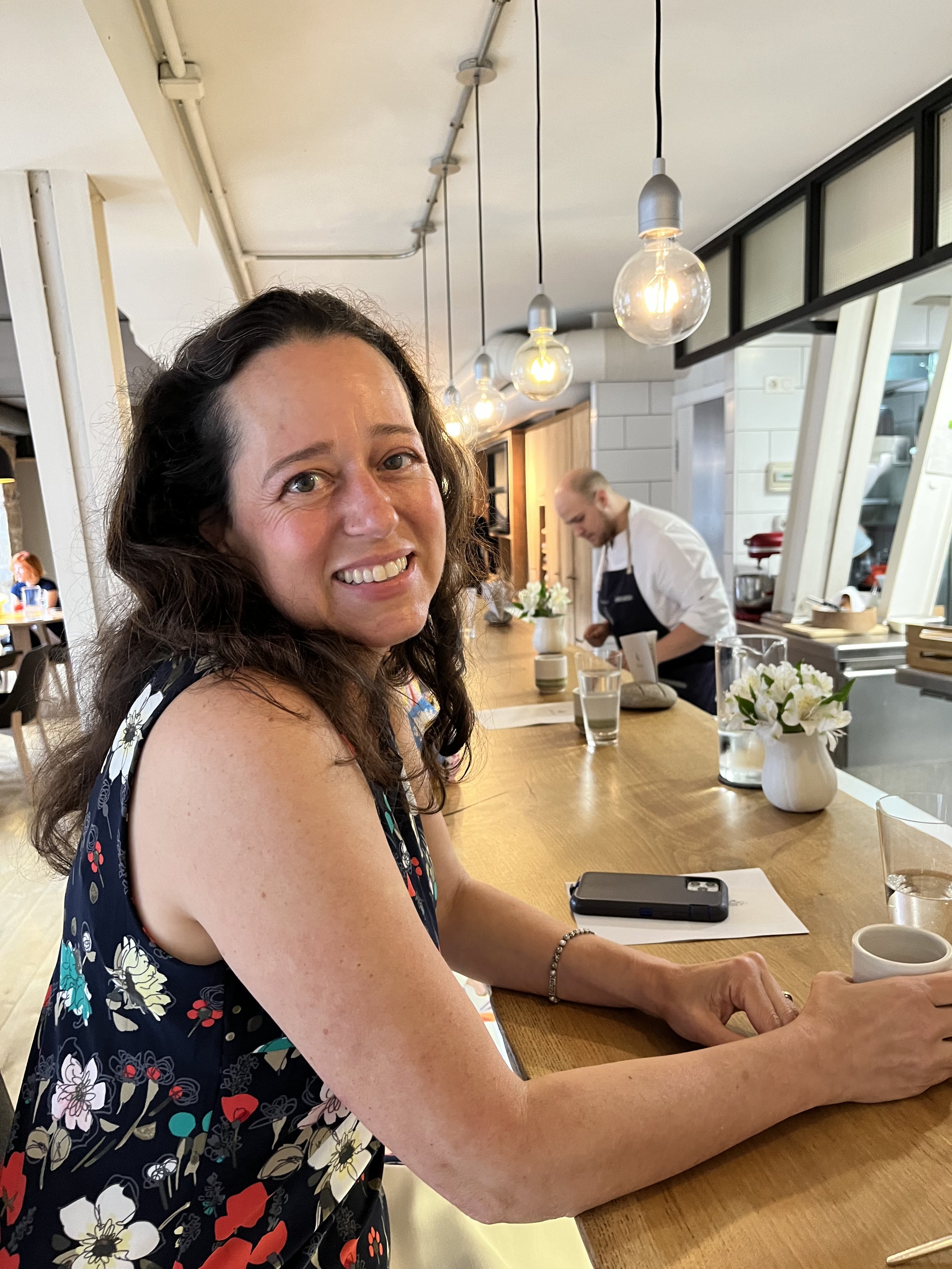
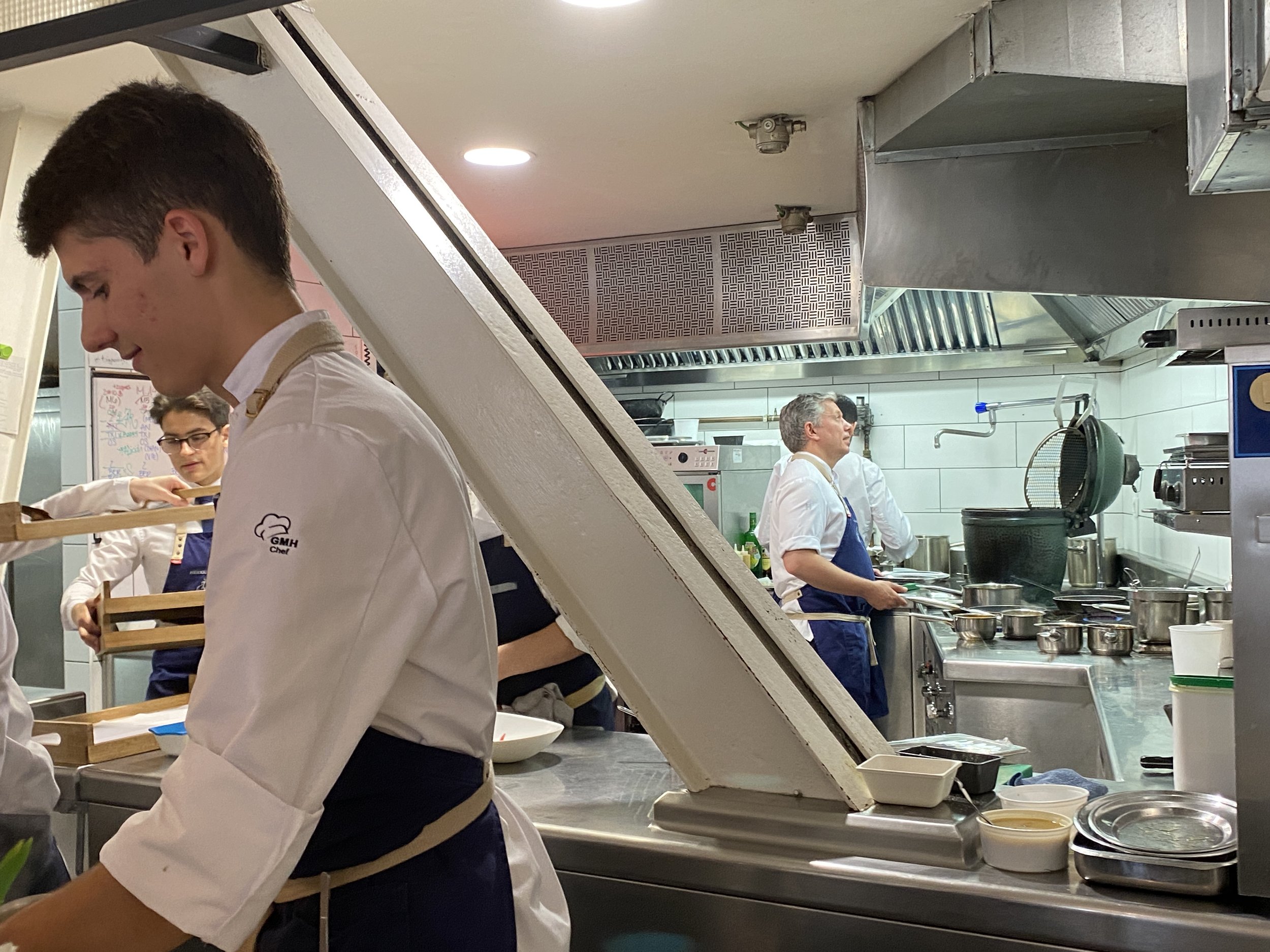
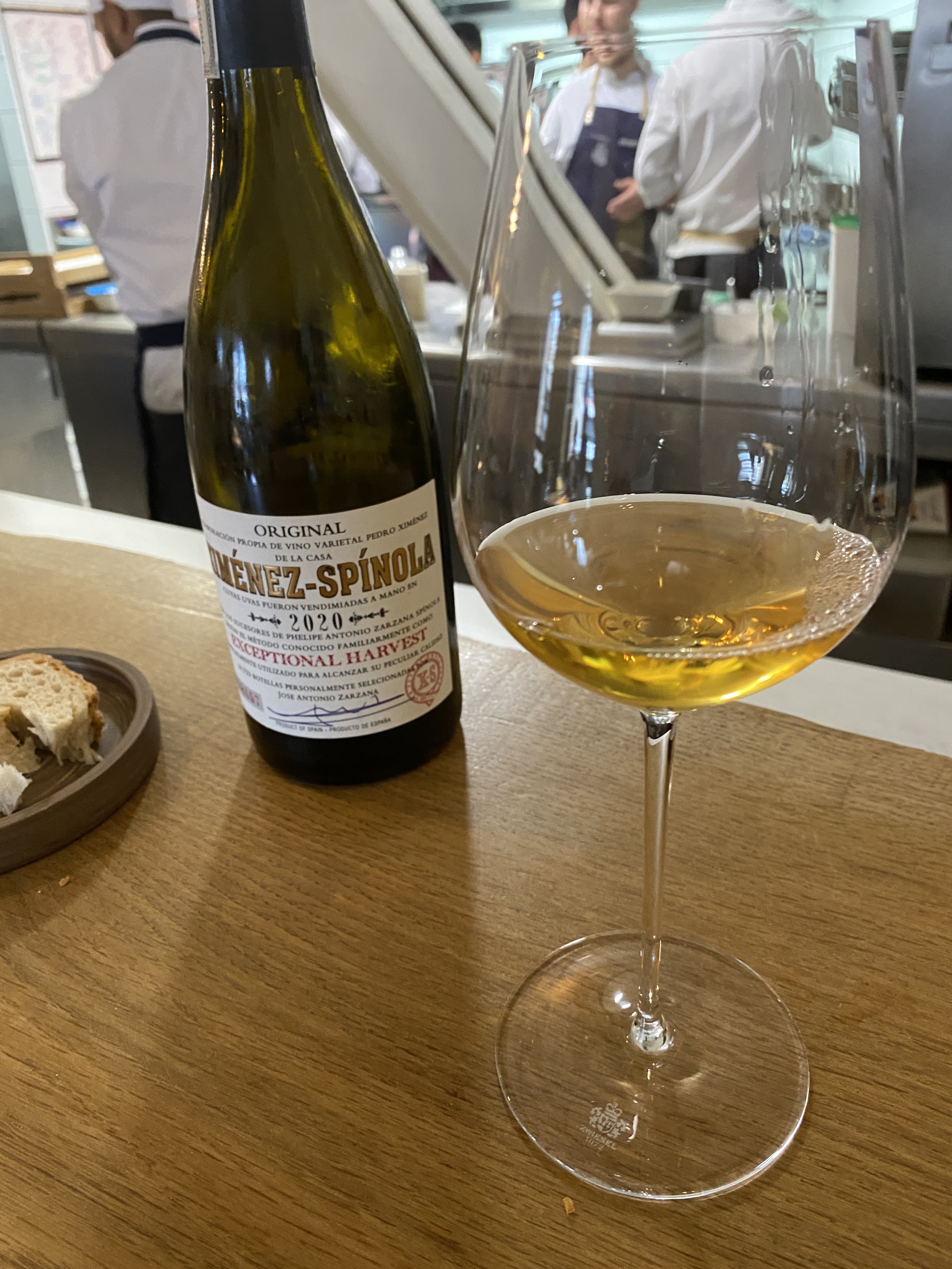
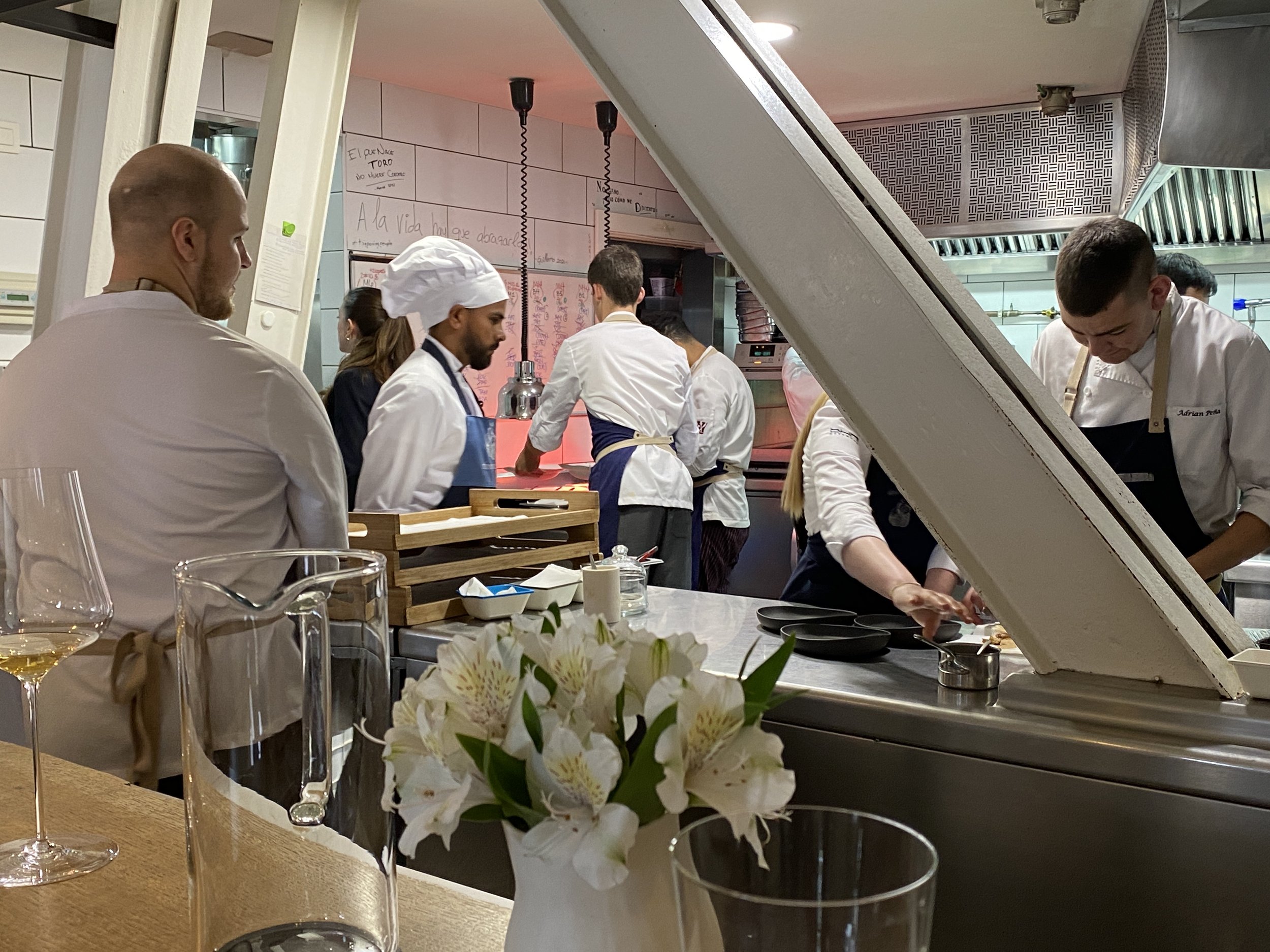
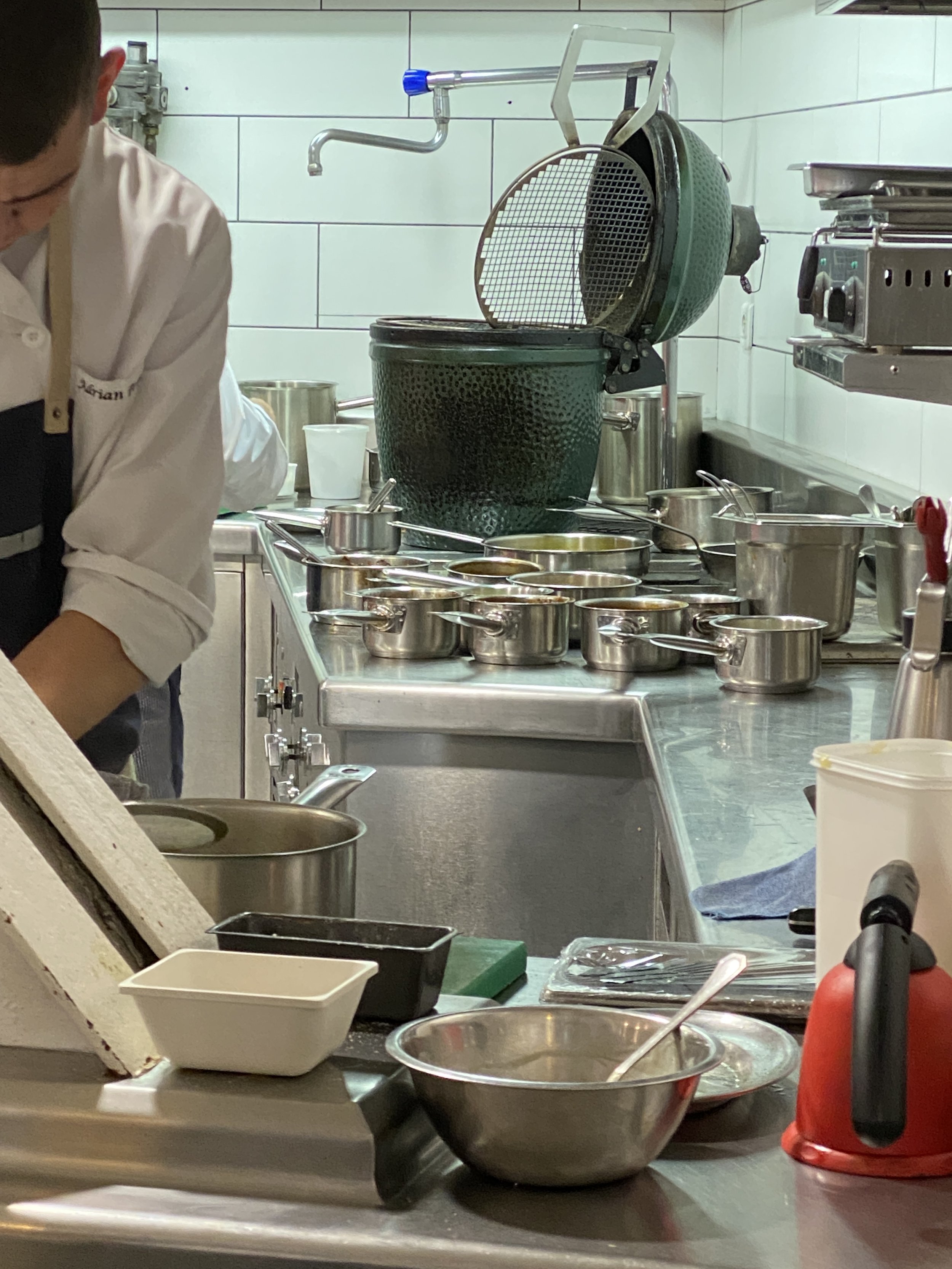
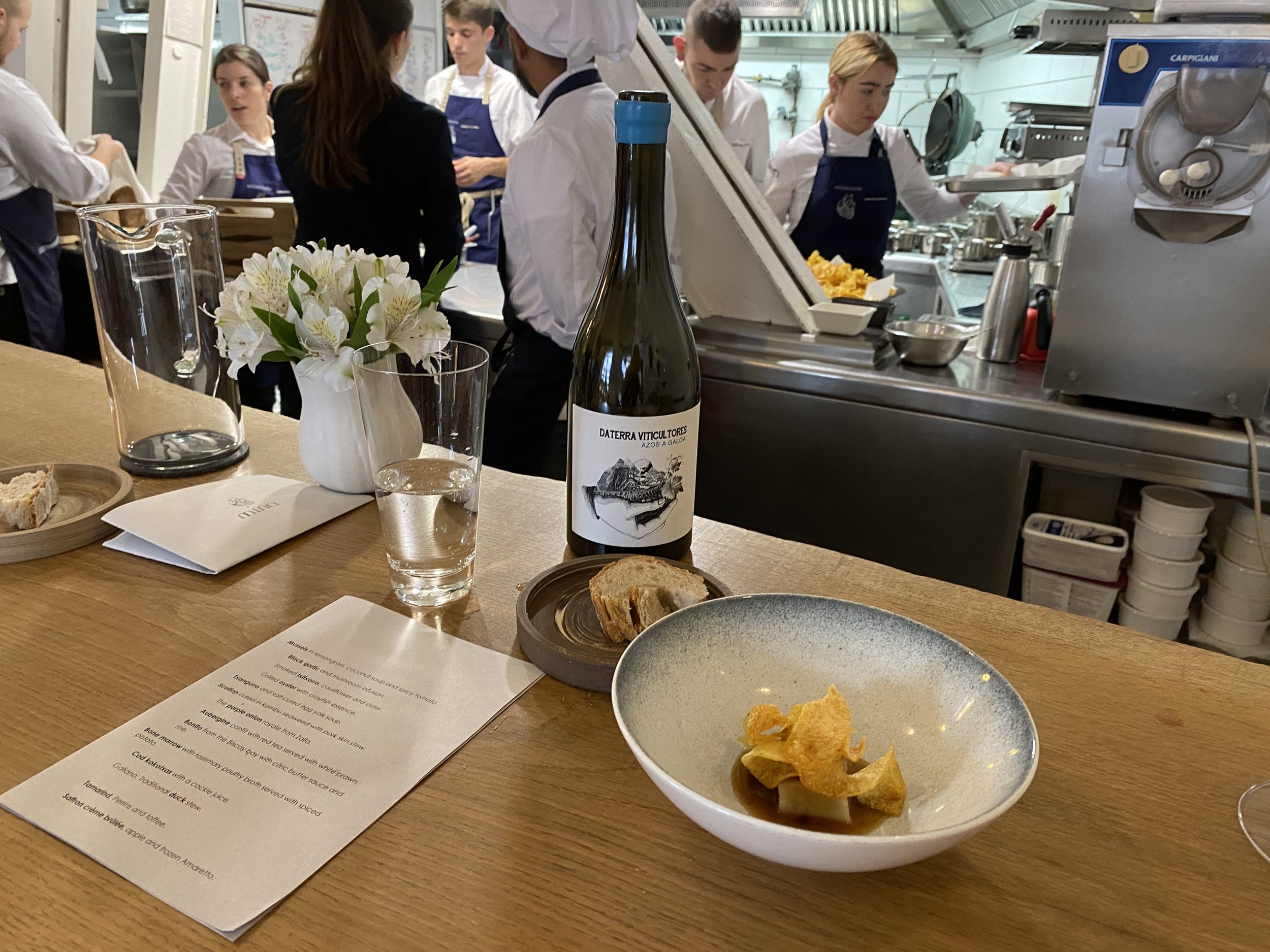
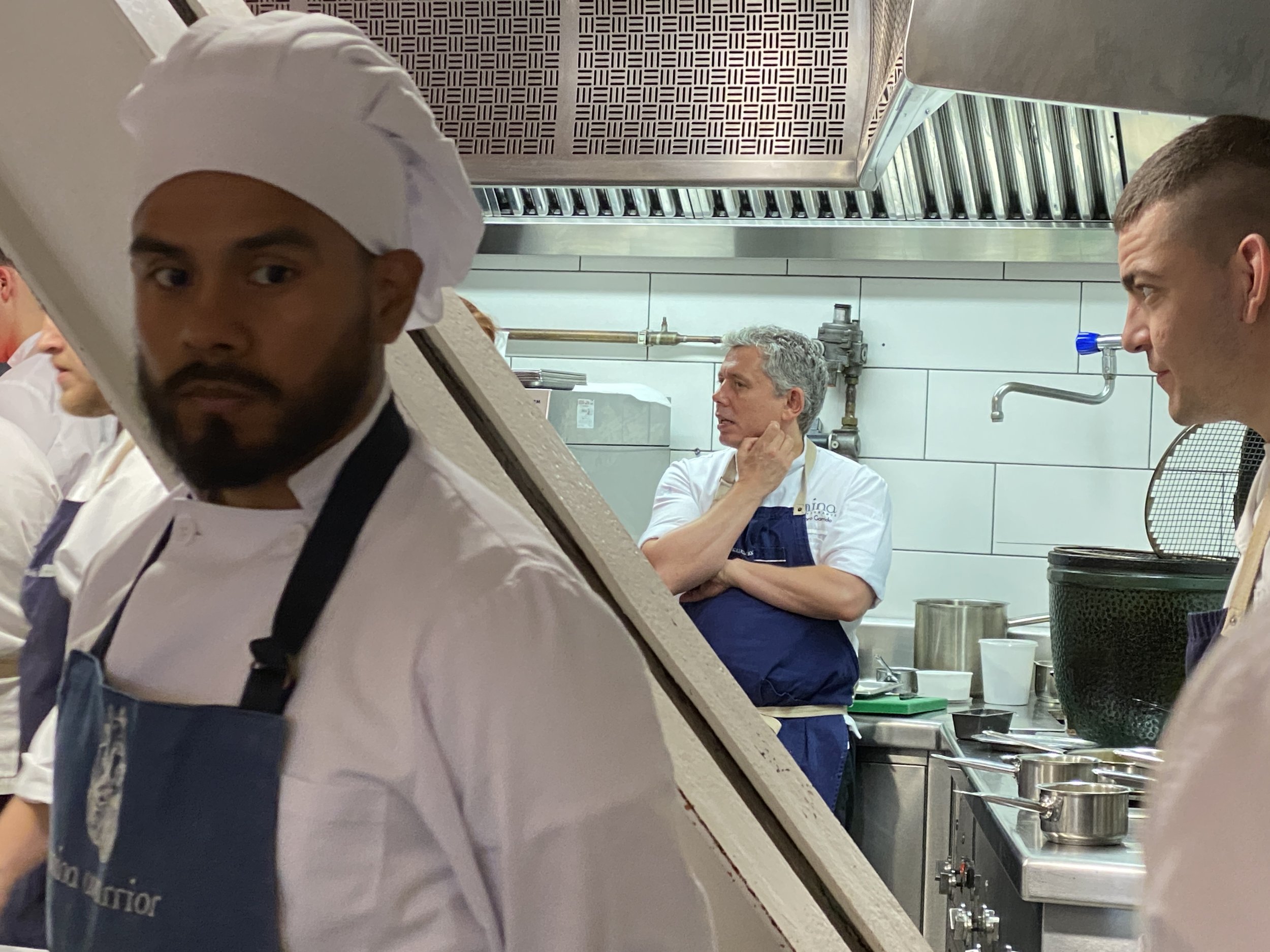

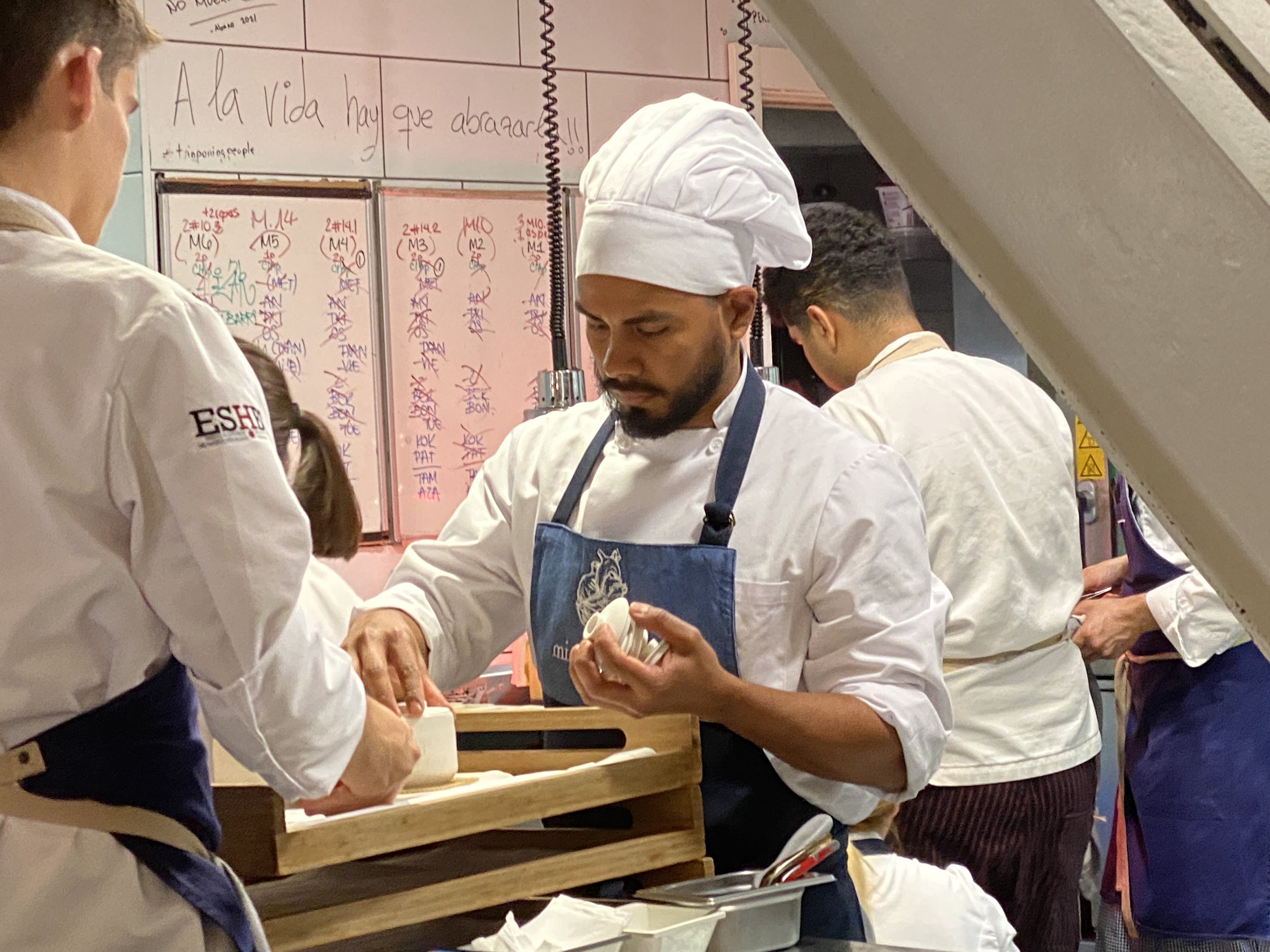
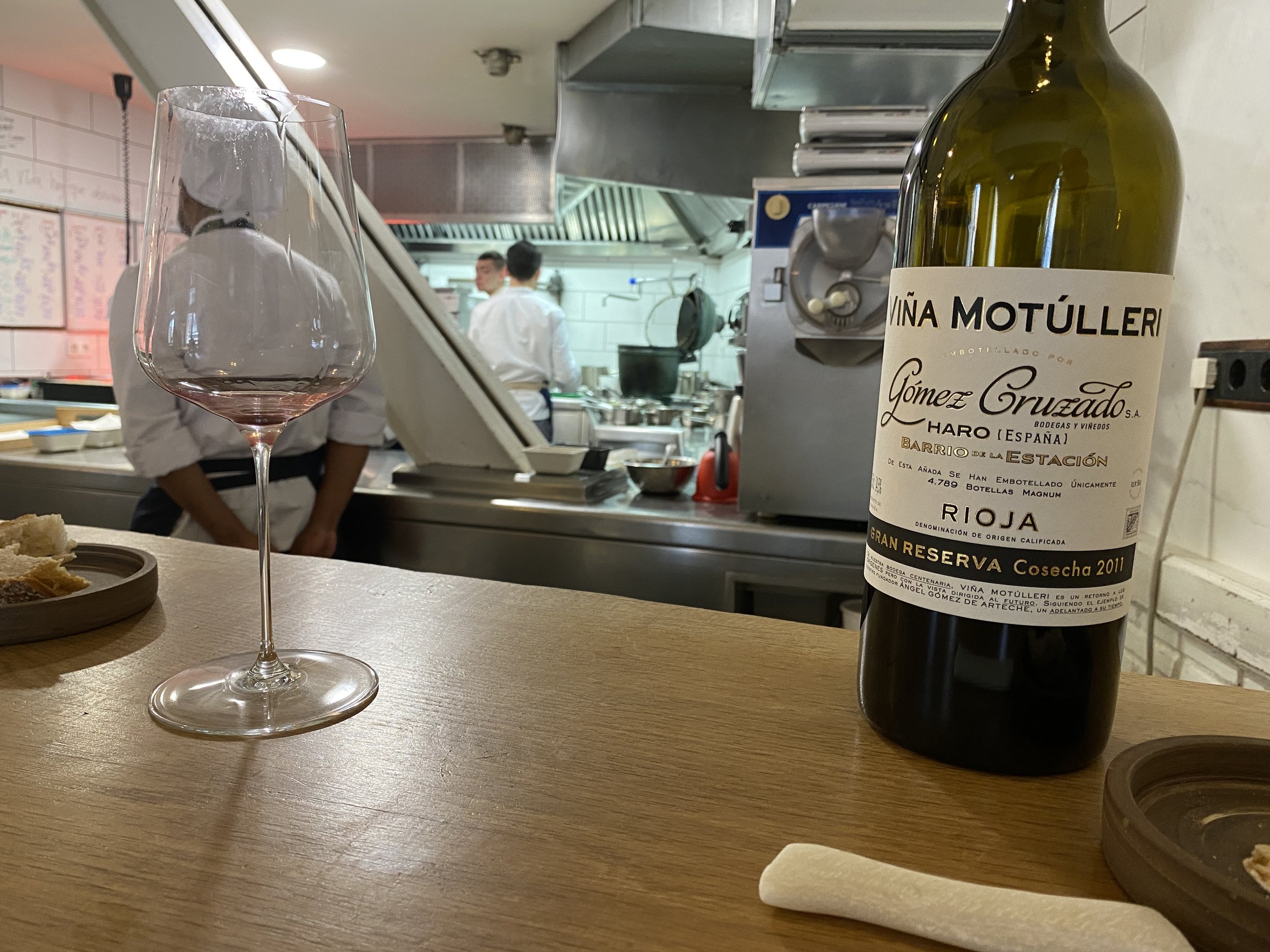
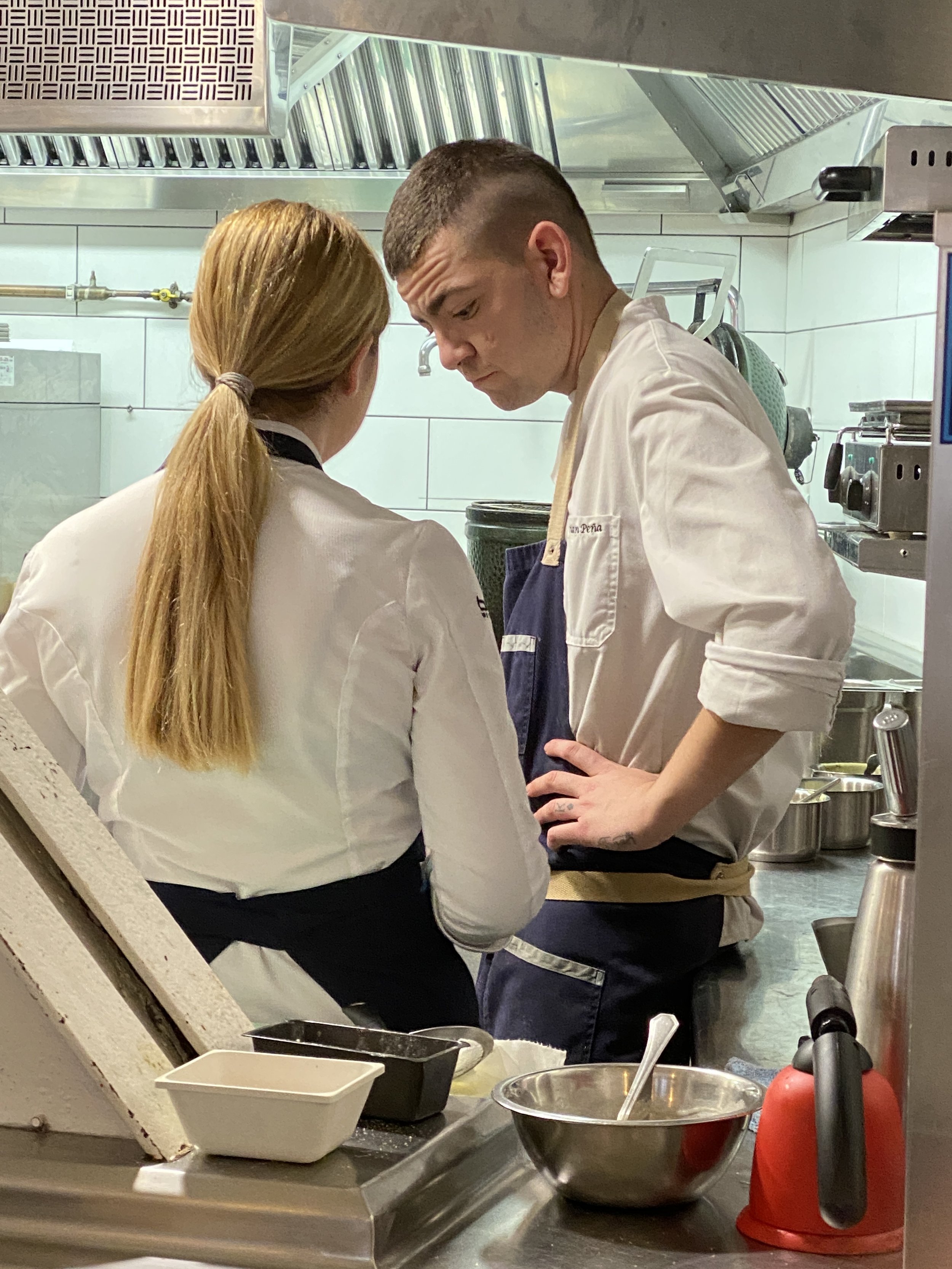
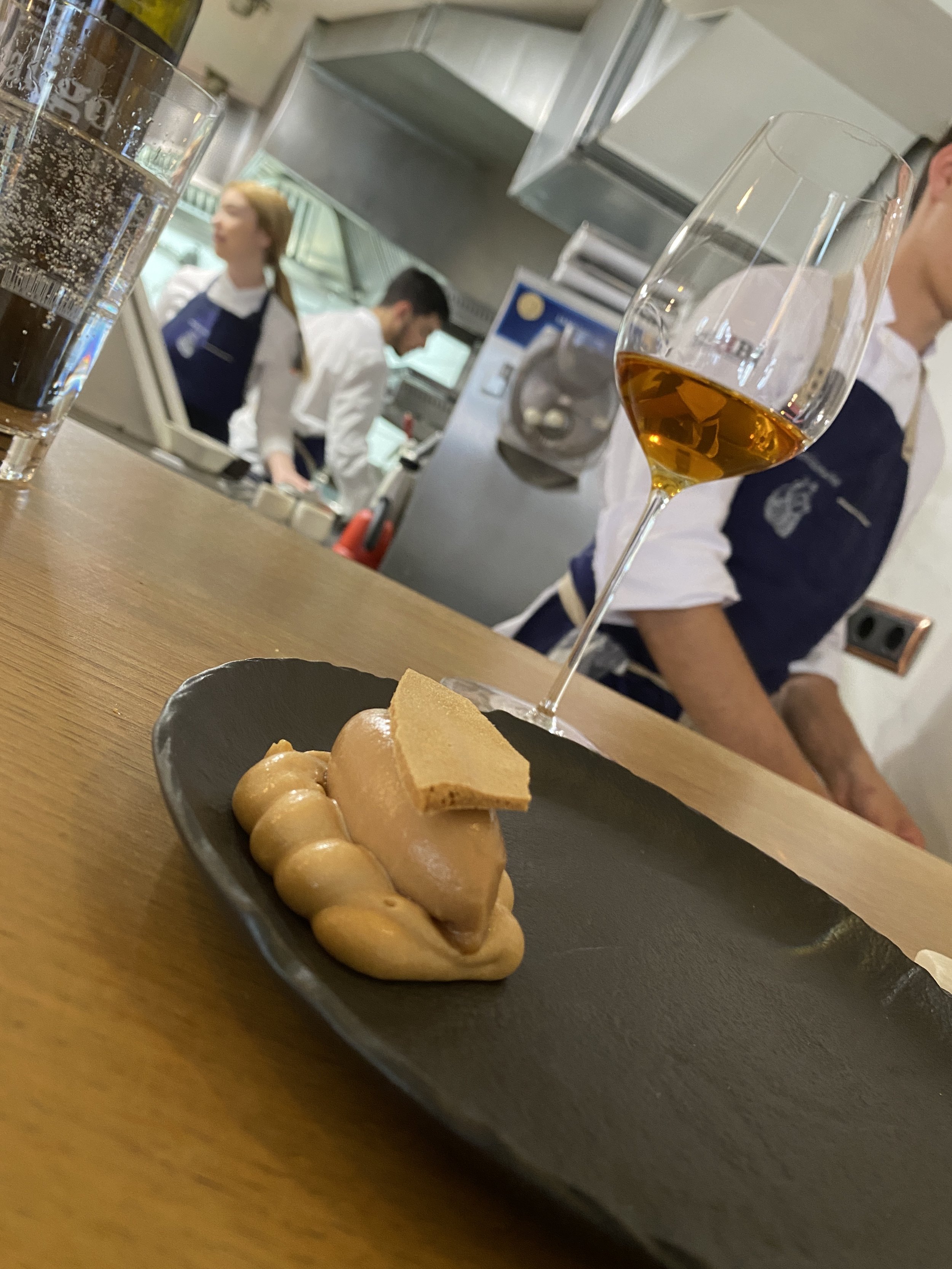
You can get the full menu or a truncated menu, you also have a choice of having the a wine pairing, which we did and I highly recommend. Each wine was beautiful and one of them (a local txakoli wine aged in sherry barrels) I asked about to see if I could find it later and the guy told me sadly that it’s not available for sale. The winery that makes it only hand produces a small amount, and they sell all of that to Mina. There are other rare kinds of flavors that you’ll get to explore with a wine tasting, so go for it if you can.
All in all, it was thoughtful, creative, delicious and in short blew my mind (PS, if you like food as much as I do, make sure you sign up for my monthly Grapevine, to get all sorts of foodie travel content in your email inbox!)
Txakoli in san sebastian, spanish basque country
By the way, speaking of the wine, I wanted to point out there are two kind of regional drinks for you to be on the look out for. One is Txakoli wine (oh look, I know two basque words!), a very light, bright wine that pairs well with seafood and is often poured from high above to create some bubbles. The other, my fave, is vermouth preparado, also called Marianito.
My fondness for vermouth preparado may come from how its origins ties with Italy, but I think it also harkens back to my young adulthood. When my mom and I cooked together, we’d often drink sweet vermouth, poured over ice, with a squeeze of orange. This is a common drink in northern Spain so I don't know how it became part of my French mother’s repertoire, but the lovely thing about Europe is how these tasty specialties make their way across borders, adapting to local flavors (I had a spritz in Toulouse that was flavored with violets).
Vermouth originated in Turin in the 1800’s, though only after it started to be more widely produced in Spain did it take off. What’s funny is that the vermouth preparado, which you’ll find all over Basque Country, returns vermouth to its Italian roots by making it the base of a cocktail that bears a striking similarity to a negroni. Since coming home, I’ve made my own using this recipe, which my palate says is pretty much spot on to what I had.
I had my first vermouth preparado at La Ribera, when the woman at a pintos stand asked if I wanted one and I said “sure” not exactly sure what it meant, but knowing it triggered the realization that I’d seen signs for them all around. I LOVED IT. Our last night in Bilbao, we lodged ourselves at Baster, a restaurant that makes its own vermouth. It, and the food, were divine.
I gotta tell you. This post, above almost all others, has prompted me to want to go back. Bilbao is an ever-evolving, chaotic beauty, and that’s just the part we saw. We rarely left Casco Viejo, but when we did venture out for a meal or a wander, I realized that there were layers to Bilbao that I couldn’t begin to understand. And I want to, so much. So writing about it brings back the fun, the discovery, and the shimmering possibility around every corner.
This is all to say—if you like architecture, food, unspoiled destinations with a vast array of day trip options, and the kind of street life that’s only possible when every city resident and their visiting cousin is outside connecting without a smartphone in sight, Bilbao needs to be on your bucket list. Let it blow into your heart like a hurricane, set up shop, and then hint there there is a world of wonders, waiting for you.
Want more wanderlust stories? Sign up for my newsletter, the Grapevine, and once a month you’ll get travel tips, recipes, and sweet deals right in your email inbox. Plus, as a special welcome gift, I’ll send you an e-copy of my bestselling novel, Santa Lucia. Imagine that! In a few keystrokes, you’ll be transported to the flavors, the mysteries, and the beauty of Italy.









